The most expensive gemstones in the world WE LOOK AT
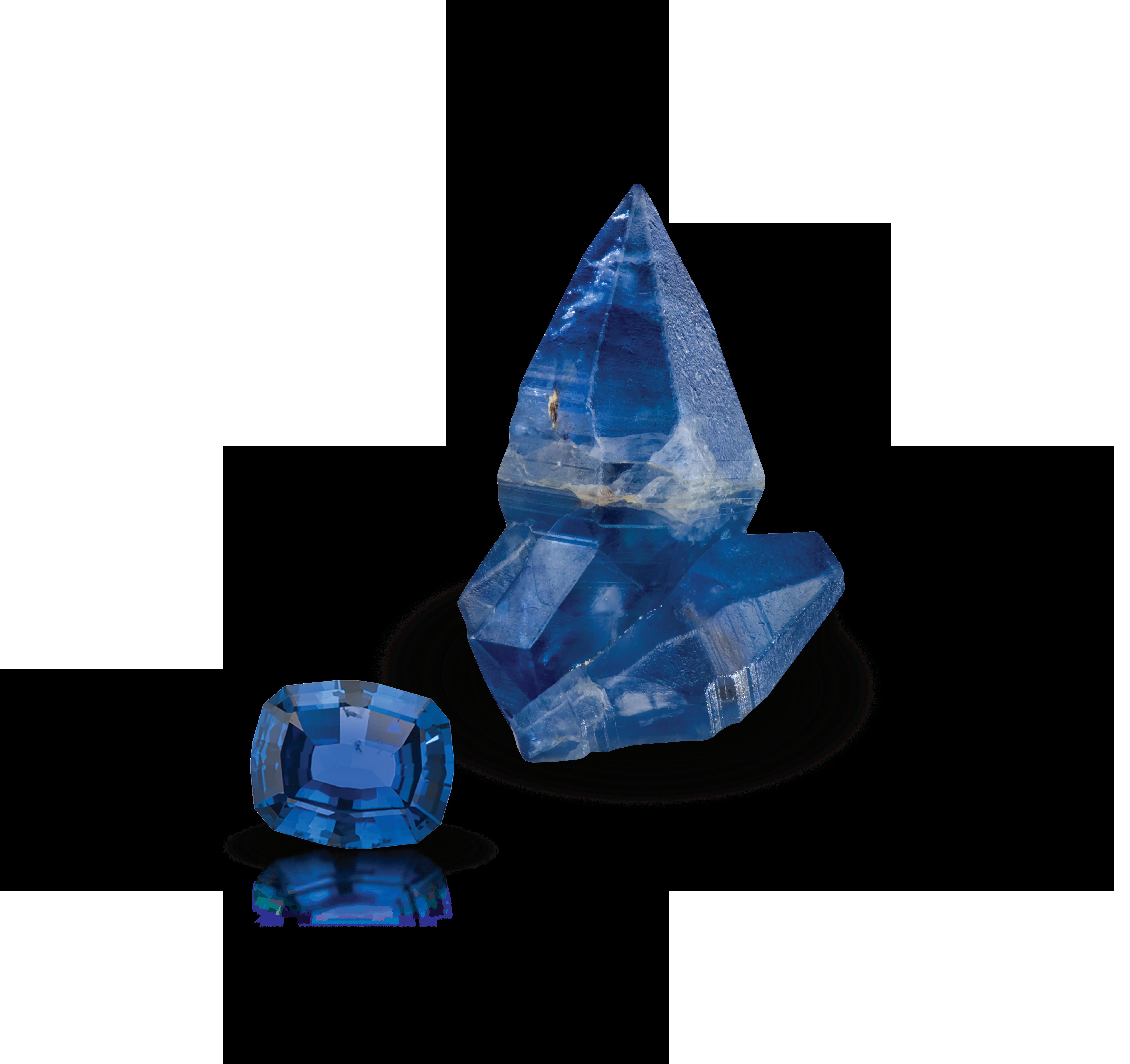
Demystifying diamonds
Pearls: forever fashionable The importance of African manufacturing
LIM-15 SAJN Cover Art -Colored Stone - 08 10 2023 -Final.pdf 3 8/10/23 10:14 AM SA SEPTEMBER 2023
jewellerynews
JPPE is a Cape Town-based family business servicing the jewellery industry since 1966. Our passion for gemstones and jewellery inspires us to create stunning designs for locals and tourists.
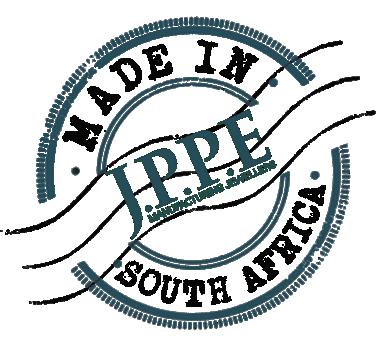

From Big Five-inspired jewellery to elegant pieces inspired by Africa to classic jewellery staples, we offer an impressive selection of designs set in a rainbow of colours and a broad selection of loose gemstones.

At JPPE, we have developed one of South Africa's most expansive ranges of gemstone jewellery. Catering for all tastes, we pride ourselves in developing quality ranges that align with global trends.
All of our jewellery is made in South Africa and is backed by a 100% service guarantee. Our vast range of styling can be ordered using a variety of gemstones in silver or 9ct, 14ct, or 18ct solid gold.
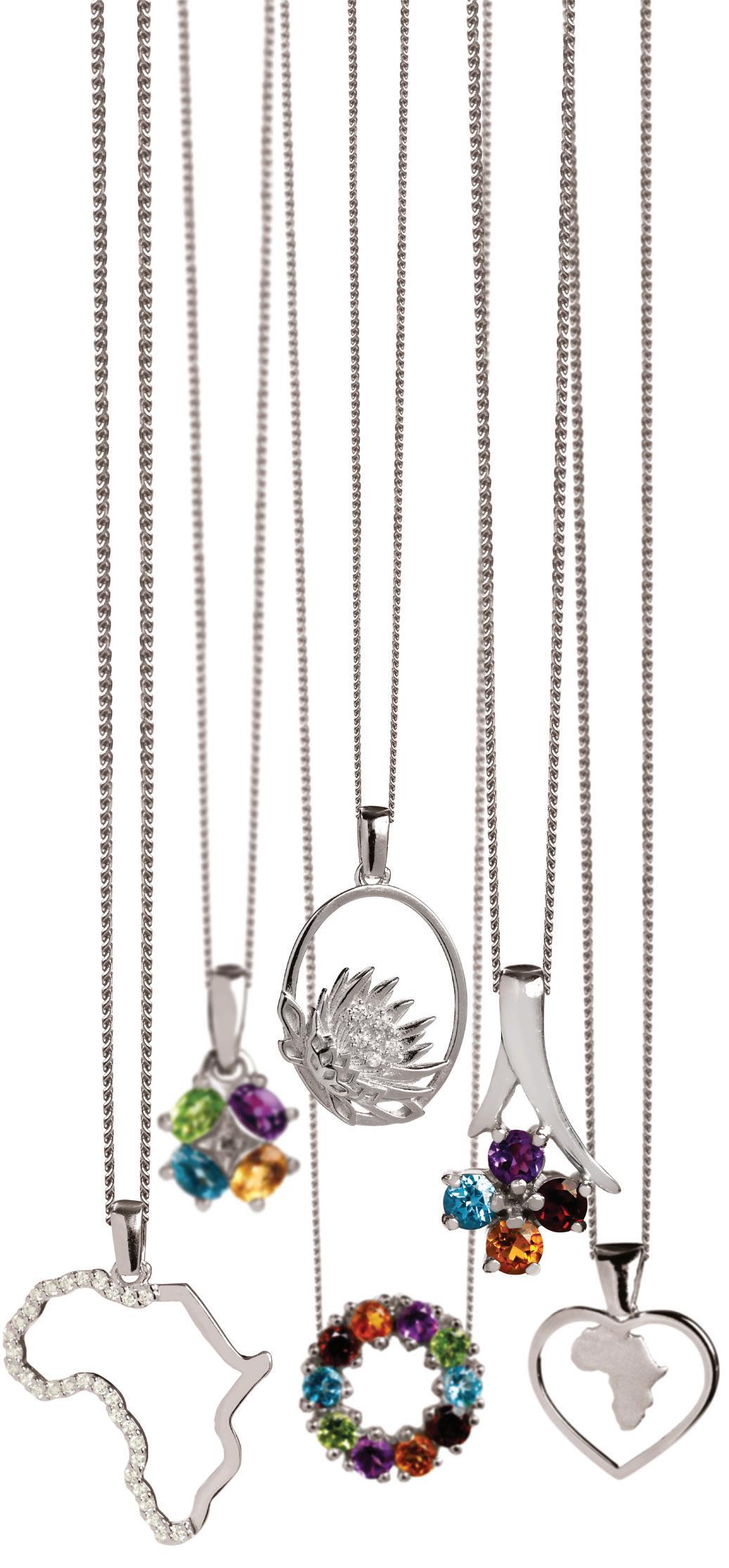
With the innovation of CAD designing and years of expertise from our masterful artisans, we can offer you craftsmanship on par with international standards.
Kyle Gilson Director
Sales Representative
Zalandi Sales Representative
+27 82 667 3456
Paul
+27 21 424 7764
+27 66 430 4630
www.jppe.co.za Get 10% Off During Jewellex Month!
“Offering an impressive selection of jewellery designs set in a rainbow of gemstone colours”
Responsibly mined Mozambican rubies and Zambian emeralds faberge.com gem elds.com


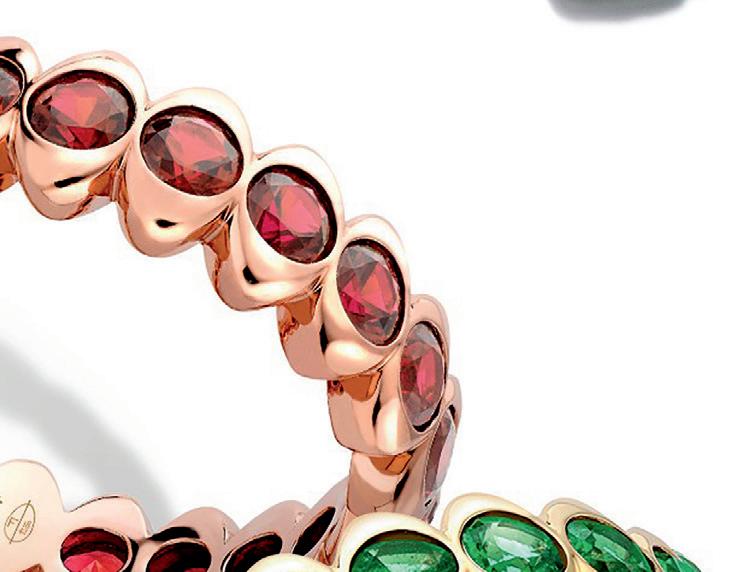
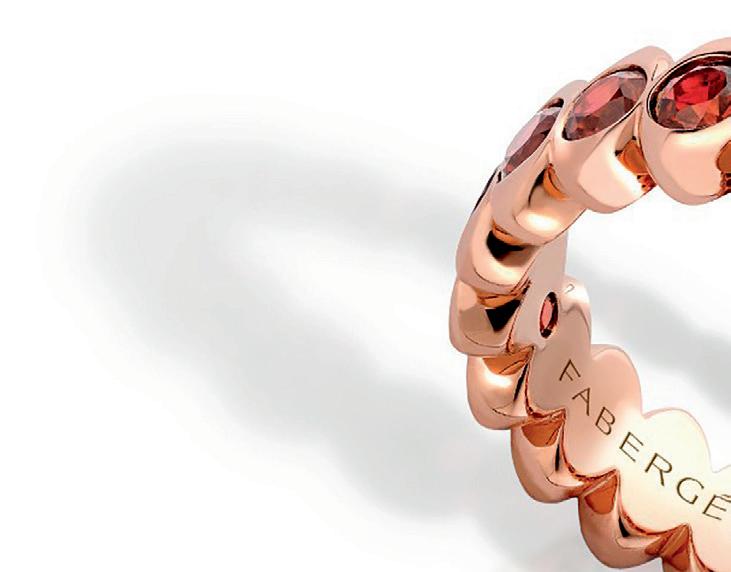










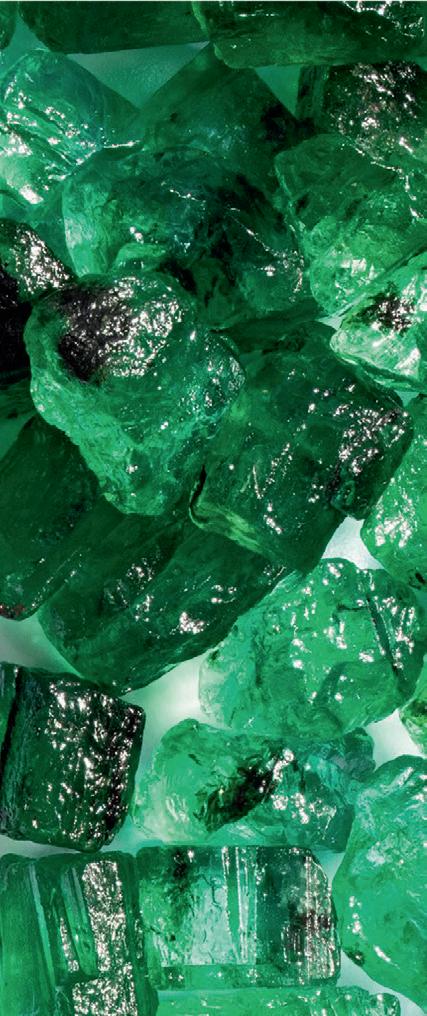
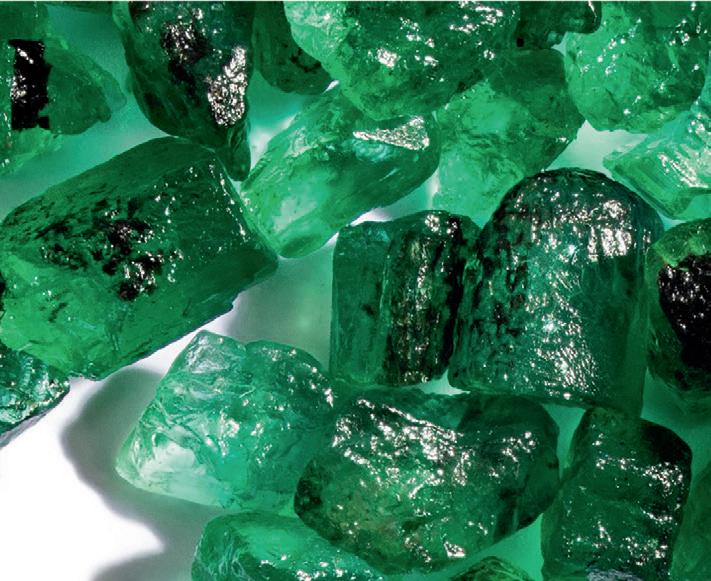
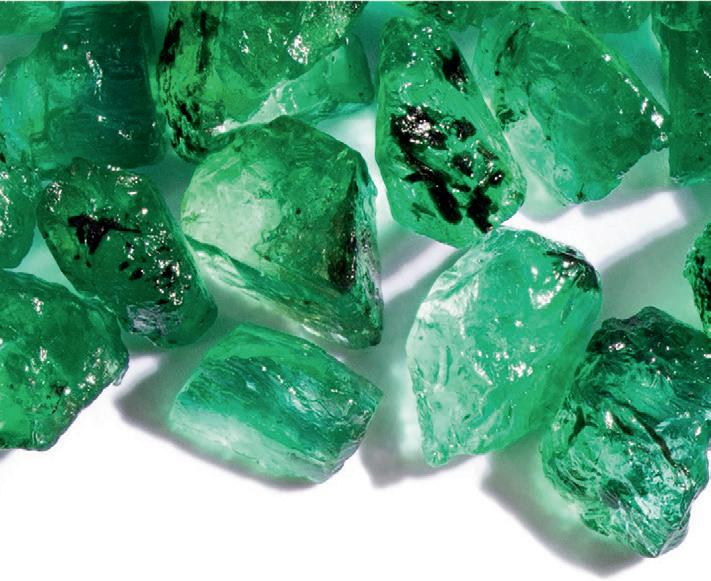
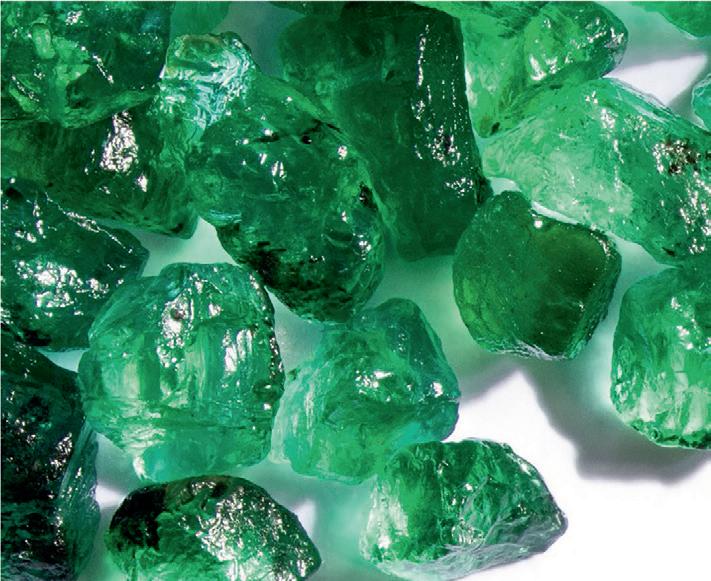
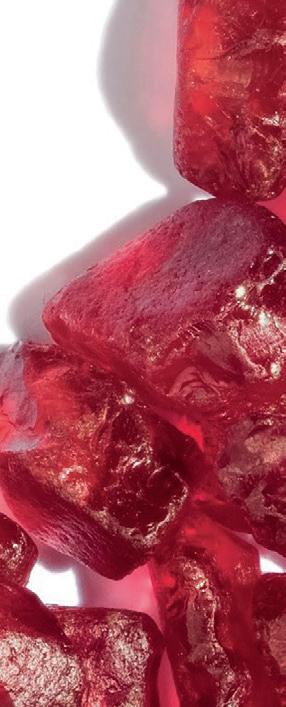
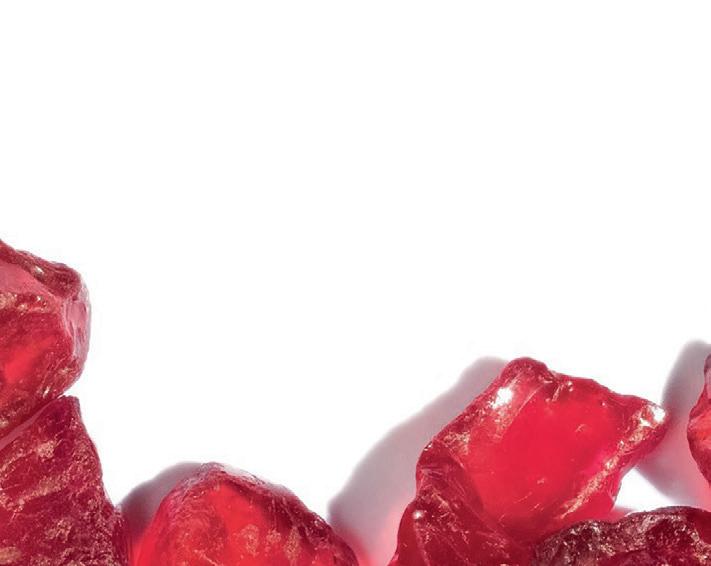

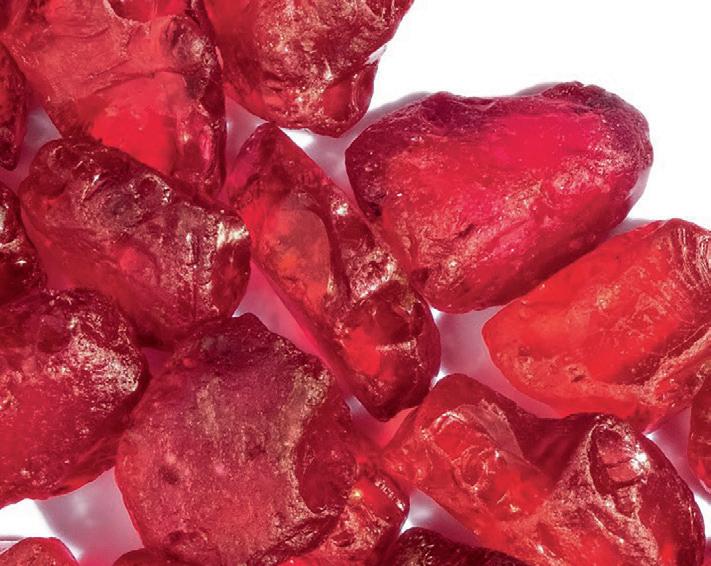
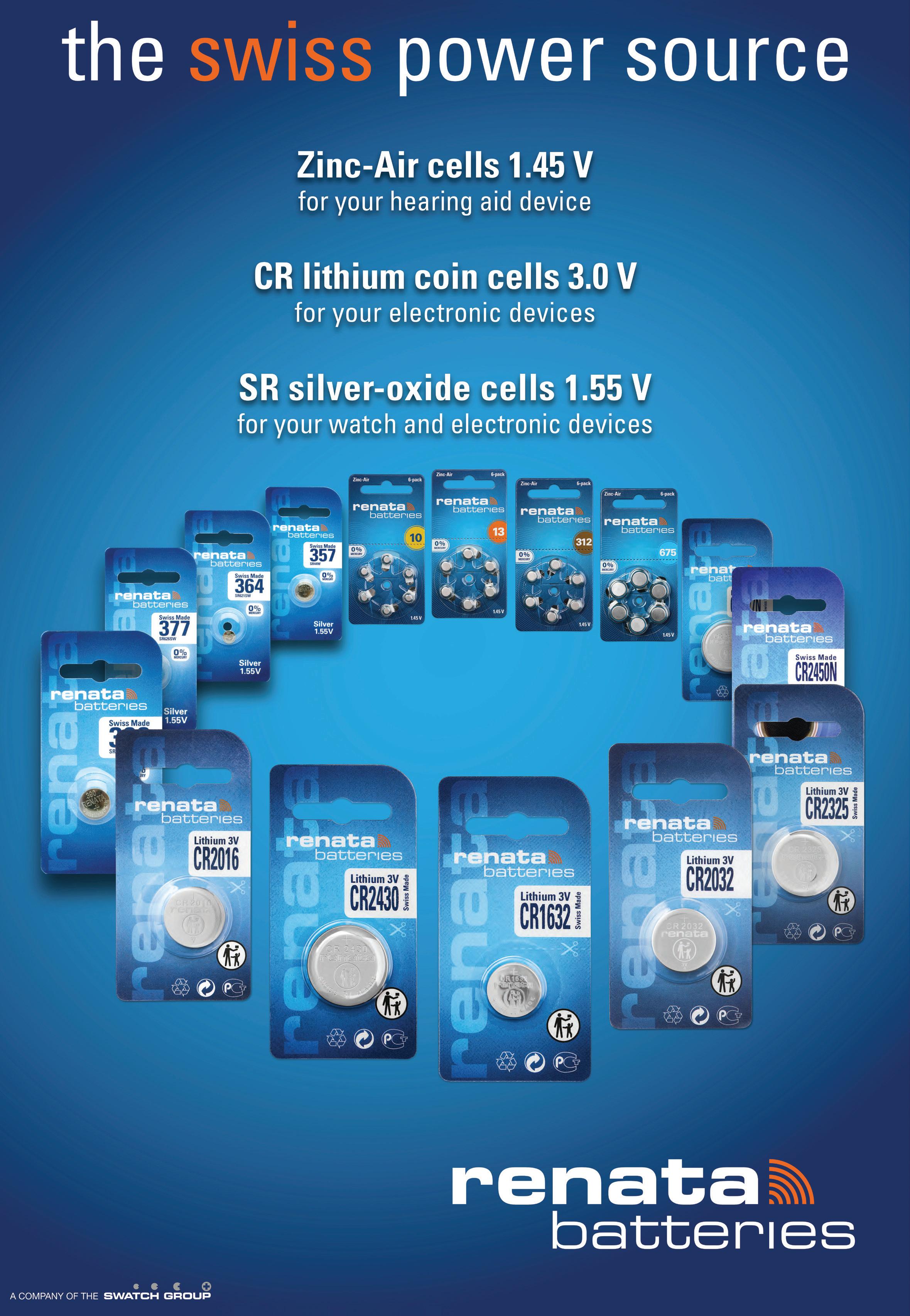

ADDRESS: Private Bag X46218, Belle Ombre, 0142 TEL: 012 326 8348 / 012 328 5996 | FAX: 012 325 7097 EMAIL: smwatch@iafrica.com | WEBSITE: www.smwatch.co.za

contents
9. NEWS
• GIA evaluates solid laboratory-grown diamond ring
• Rolex GMT Master II now available in two new versions
• Dissecting the downturn industry webinar
• Lab-grown and natural diamonds alert
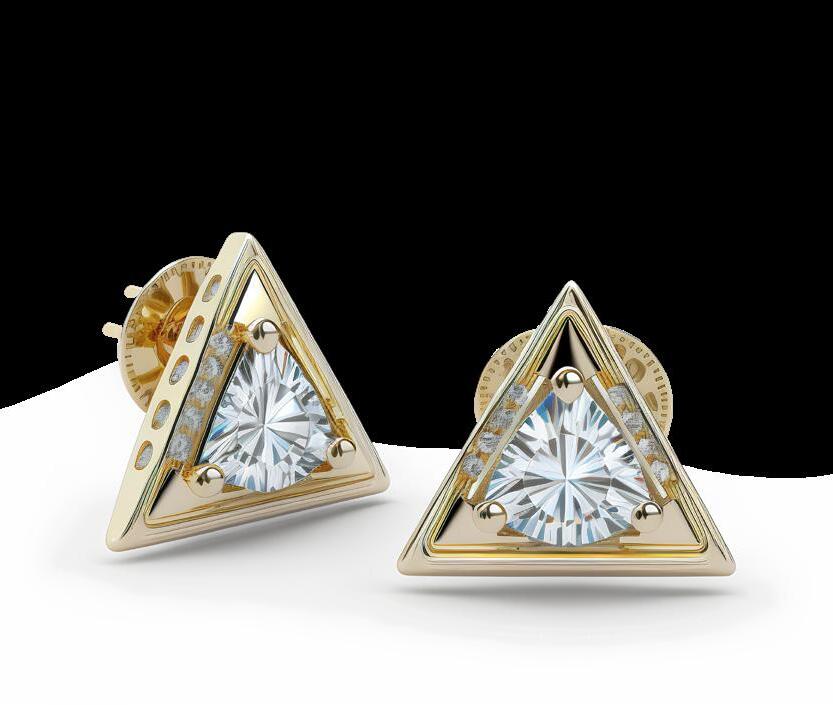
• CIBJO emphasises jewellery’s positive societal role

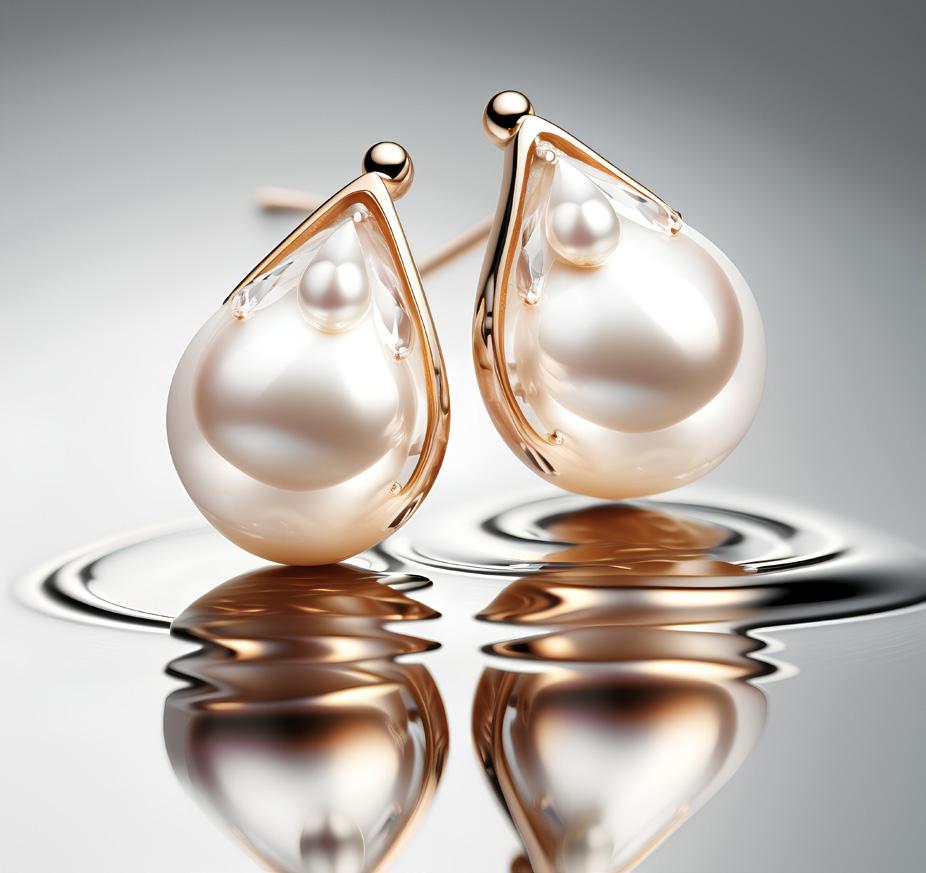
• Tupac Shakur’s diamond and ruby ring rakes in US$1 million
• De Beers’ Q2 diamond production falls 5% to 7,6 million carats

16. THE 10 MOST EXPENSIVE AND COVETED GEMSTONES IN THE WORLD
Gemstones have been highly valued in societies throughout history. We examine the most expensive ones in the world.
21. THE IMPORTANCE OF AFRICAN MANUFACTURING
By encouraging local manufacturing and fostering a conducive environment for businesses to thrive, Africa can leverage its resources and potential to build sustainable and vibrant economies.
SA JEWELLERY NEWS - SEPTEMBER 2023 CONTENTS 4
38 26
23. A COLLECTION WITH A STORY TO TELL
To be launched at this year’s Jewellex Africa is Andreas Salver Manufacturing Jewellers’ latest captivating collection of coloured gemstone pieces – and the story behind these lively gemstones is as beautiful as the jewellery itself.
24. DEMYSTIFYING DIAMONDS
Through its latest analytical report, the Natural Diamond Council has set out to address misinformation about both natural diamonds and their synthetic counterparts.
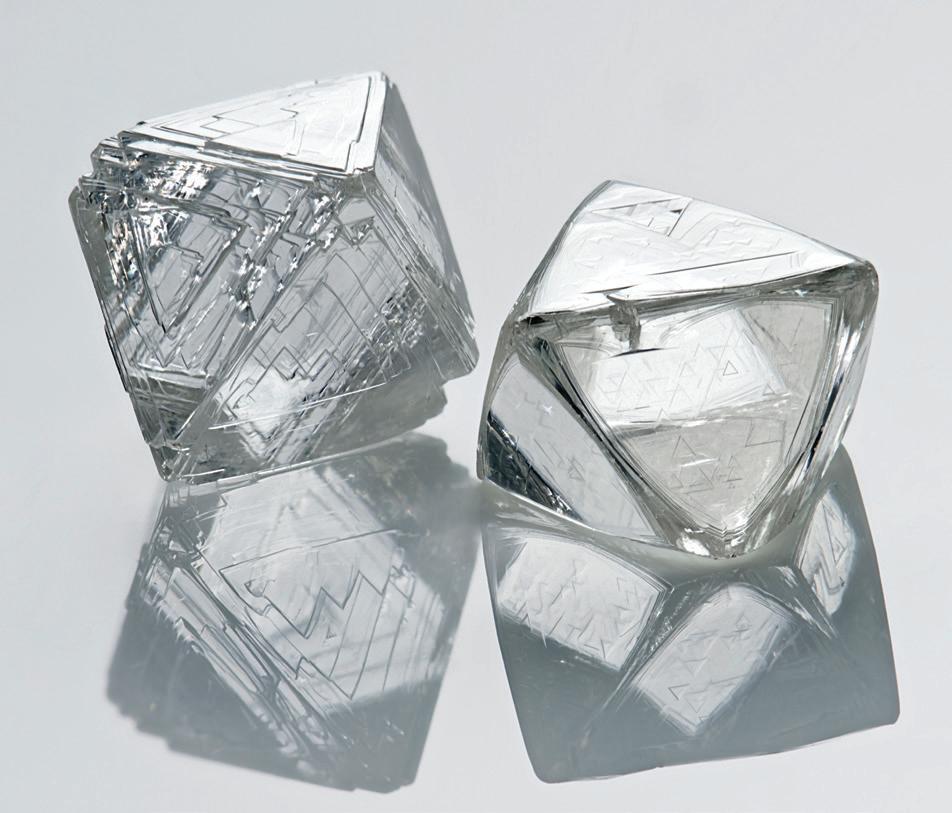
37. DE BEERS’ VENETIA EXPANSION YIELDS FIRST DIAMONDS
The De Beers Group’s Venetia mine underground expansion is the biggest single investment in South Africa’s diamond mining industry in decades.
38. HONG KONG WATCH & CLOCK FAIR MAKES ITS RETURN
The Hong Kong Watch & Clock Fair has clearly emerged as a serious destination for the international press, agents, collectors and buyers.
42. INSPIRE CHANGE IN YOUR RETAIL BUSINESS
If businesses want to compete and thrive in today’s fast-paced and ever-evolving business landscape, change is not only inevitable but essential.

44. BORN IN AFRICA
A comprehensive directory featuring information and contact details of all members of the Jewellery Manufacturing Association of South Africa.
26. FOREVER FASHIONABLE
29. EDUCATIONAL INSERT
Pigments historically sourced from gem materials
Official Journal of the Jewellery Council of South Africa and the Diamond Dealers’ Club of South Africa.

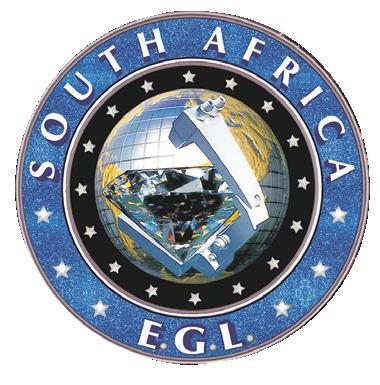
www.jewellery.org.za www.ddcsa.co.za
A retailer who knows the types of natural and cultured pearls that are available and the factors that determine their value is an invaluable resource. Tel:
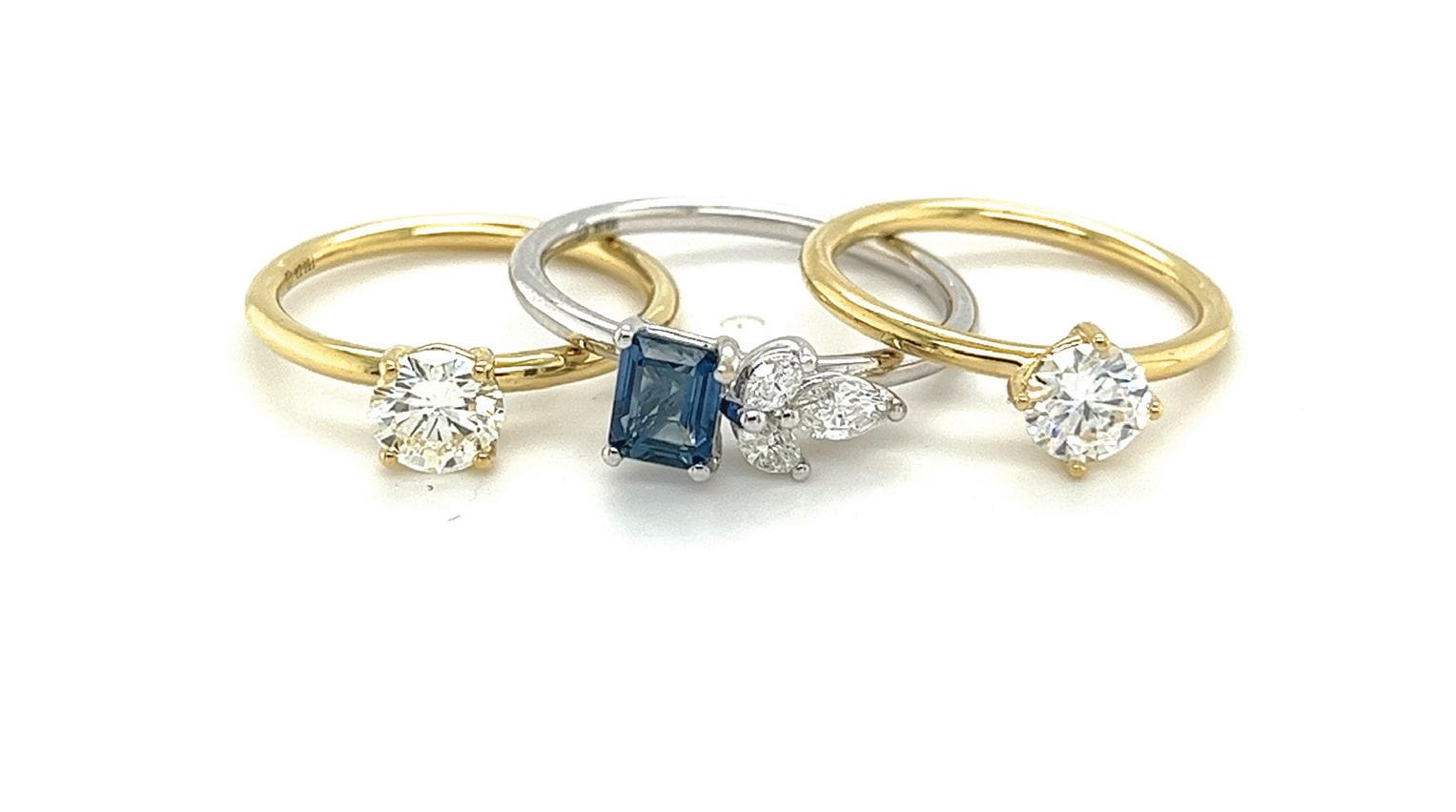
SA JEWELLERY NEWS - SEPTEMBER 2023
CONTENTS
The views expressed in this publication are not necessarily those of the owners, the Jewellery Council of South Africa, the Diamond Dealers’ Club of South Africa, its members, the publisher or its agents. While every effort has been made to ensure the accuracy of its contents, neither the owners, the Jewellery Council of South Africa, the Diamond Dealers’ Club of South Africa, the editor nor the publisher can be held responsible for any omissions or errors; or for any misfortune, injury or damages which may arise therefrom. The same applies to all advertising. SA Jewellery News© 2023. All rights reserved. No part of this magazine may be reproduced or transmitted in any form or by any means, electronic or mechanical, including photocopying, recording, or any information storage retrieval system, without prior written permission from the publishers. ISSN 1817-5333.
11
4527 Cell:
83 656 9013 Website: www.egl.co.za
+27
334
+27
The members of the Diamond Dealers Club of South Africa Comprises of South Africa’s leading diamond manufacturers, dealers in diamonds and precious stones and jewellers.











WHAT DOES ALL THIS MEAN TO YOU?
It means that you can benefit by dealing with a member of the Diamond Dealers Club of South Africa and be assured of:


• Reliability
• Ethical and honest conduct
• Accountability in case of grievances
• Legal expertise
• Prestige of its Members due to strict controls and criteria
• Confidence (the fifth “C”)
Contact Joyce (Admin Manager - Diamonds) for more information
Address: Office No. 1, Second Floor, 8 Sturdee Avenue, Rosebank, 2196, JHB, South Africa
Phone: +27 011-334-1930 Fax: +27 0865165958
Website: www.diamonds.org.za
E-mail: joyceb@diamonds.org.za
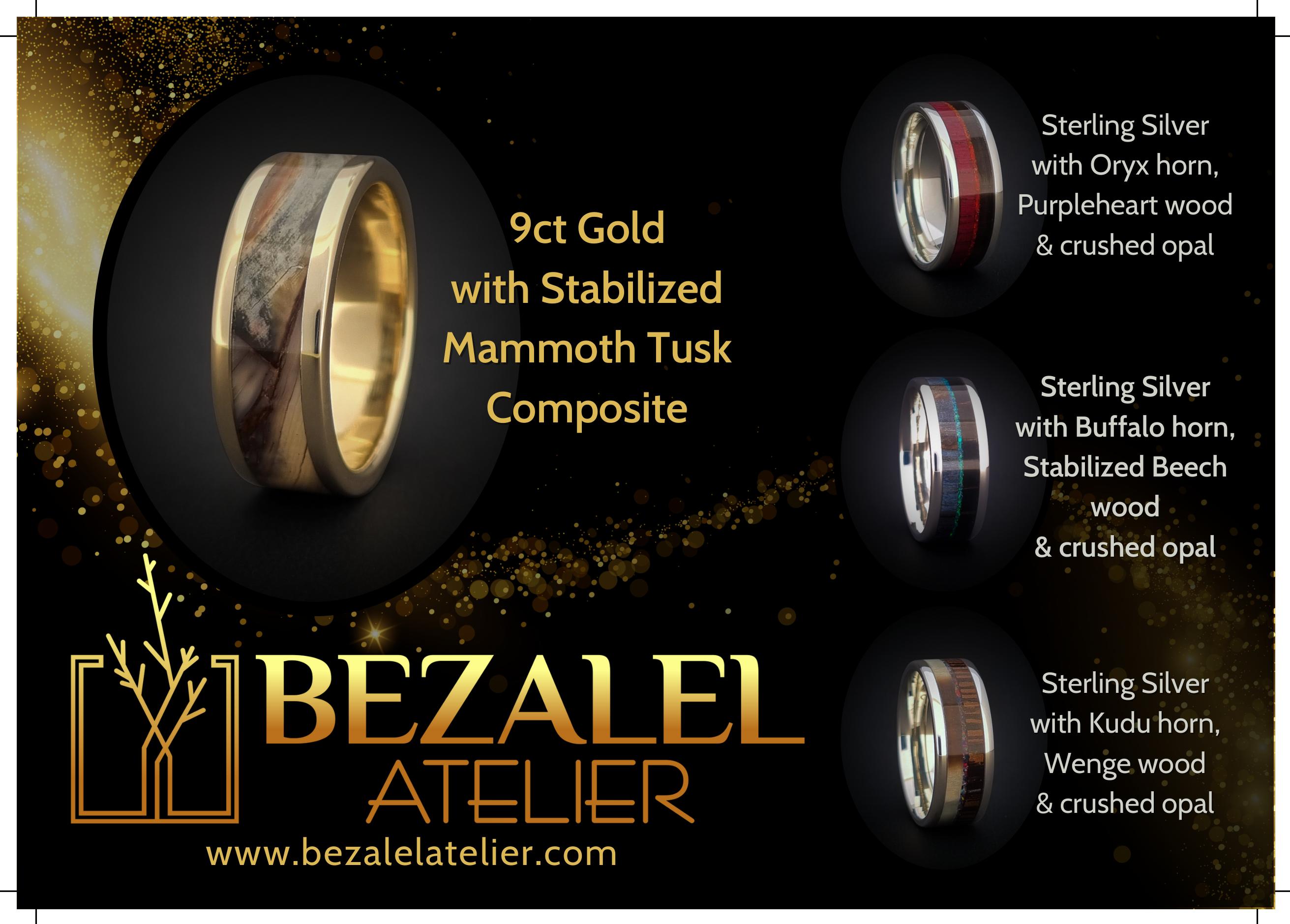
Editor: Adri Viviers
Tel: +27 (0)11 883-4627
Cell: 084-261-1805
E-mail: adri@isikhova.co.za
Managing Director: Imraan Mahomed
E-mail: imraanm@isikhova.co.za
Director Brand Strategy: Jenny Justus

Cell: 083-450-6052
E-mail: jenny@isikhova.co.za
Creative Director: Joanne Brook
E-mail: joanne@isikhova.co.za
Operations Director: Thuli Majola
Tel: +27 (0)11 883-4627
E-mail: thuli@isikhova.co.za
Advertising Sales:








Tel: +27 (0)11 883-4627
Cell: 083-450-6052
Copy Editor: Anne Phillips
Distribution: Ruth Dlamini
SA Jewellery News is published by: Isikhova Media (Pty) Ltd,

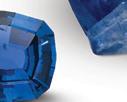

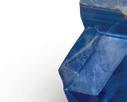

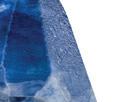














Physical: 10th Floor, Metal Box, 25 Owl Street, Milpark, Johannesburg, South Africa.
Website: www.isikhova.co.za
SPRING, WE’VE BEEN WAITING FOR YOU!
“The day the Lord created hope was probably the same day He created Spring,” said British moral philosopher Sir Bernard Williams. Bees buzzing. Flowers blooming. Birds singing. A new beginning!
For many of us, the start of the season brings a feeling of optimism. There is a boost in our mood and energy levels every year as winter ends. With the warmer spring weather, we no longer have to be bundled up indoors, relying on heaters (load-shedding permitting!) to stay warm. We can finally open our windows and let the fresh air in.
After a cold winter, sunlight is definitely the best remedy. Scientists have actually proven that sunlight exposure increases the release of serotonin in the brain, causing people to be happier. Sunlight also lessens the amount of melatonin in people during the day and increases it at night, allowing for a better night’s sleep.
jewellery
I know that according to meteorologists, spring is officially from September to November here in South Africa. Yet spring is also a state of mind; a way of looking at life. It evokes a “newness” or a freshness which has nothing to do with calendars.
This issue of SAJN is full of feel-good spring stories – from De Beers’ US$2,3 billion Venetia underground expansion in Limpopo yielding its first diamonds to the Hong Kong Watch and Clock Fair making its return and renowned local jewellery manufacturer Andreas Salver’s colourful, new collection, with the stories behind the lively gemstones as beautiful as the creations themselves.
We hope you enjoy this issue and that you feel the exciting “spring” in your step!
Adri Viviers
The Gemological Institute of America ® (GIA®) offers globally recognized gem identification and grading services that are built on a foundation of scientific research. Using state of the art instrumentation and visual observations to evaluate every gem, GIA expert graders and gemologists deliver consistent, accurate results. With objectivity and expertise, GIA laboratories ensure the integrity and accuracy of every analyses and report issued.


Tel: +27 11 334 4527
Cell: +27 83 656 9013 Website: www.egl.co.za

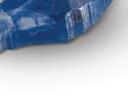



SA JEWELLERY NEWS - SEPTEMBER 2023
LIM-15 SAJN Cover Art -Colored Stone -Final.pdf 8/10/23 10:14 SA SEPTEMBER2023
Editor's note ON THE COVER
news Themostexpensivegemstonesintheworld WELOOKAT Pearls:foreverfashionable TheimportanceofAfricanmanufacturing Demystifyingdiamonds
SAJN -Colored Stone 2023 -Final.pdf 8/10/23 AM SA SEPTEMBER 2023
news The most expensive gemstones in the world WE LOOK AT Pearls: forever fashionable The importance of African manufacturing Demystifying diamonds
jewellery
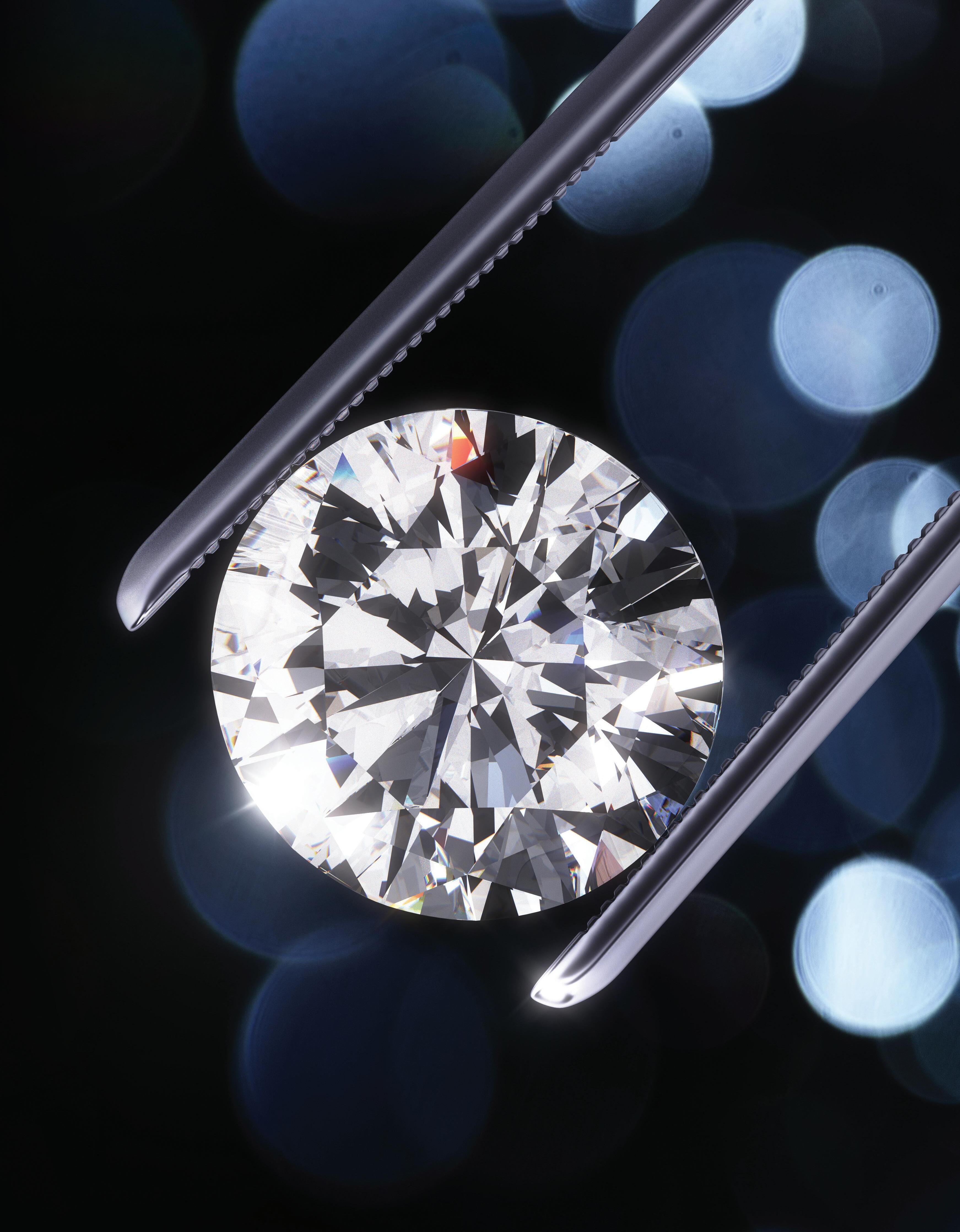


















IT’S ABOUT THE SPARKLE Suite 313 – Third Floor, 5 Sturdee Avenue, Johannesburg, South Africa Office: +27 11 268 6980 • Cell: +27 64 954 1204 / +27 82 707 8676 info@afrasiandiamonds.co.za • www.afrasiandiamonds.co.za
Lab-grown and natural diamonds alert
It has come to the attention of the Jewellery Council of South Africa (JCSA) from local and international sources that stones are circulating in the market as certified diamonds with laboratory certificates. However, upon testing, they have been found to be lab-grown diamonds.
“The Jewellery Council supports the sale of lab-grown diamonds, but non-disclosure
is fraudulent. The onus is on our members to ensure that they do not sell undisclosed labgrown diamonds. If members sell diamonds as natural, they need to be sure they are natural and cannot rely purely on warranties from suppliers,” the JCSA stated in a notice circulated to its members.
In this regard, two companies have offered a free service in Johannesburg, for the time
being, to use their detecting machines.
Members can e-mail JCSA CEO Lorna Lloyd at: lornal@jewellery.org.za should they require this service.

“If there is anyone in any of the other regions who is happy to offer this service free of charge, kindly notify the council, as this will go a long way towards members assisting each other,” the notice added.
CIBJO President emphasises jewellery’s positive societal role
Addressing the high-level segment of the UN’s Economic and Social Council (ECOSOC), Gaetano Cavalieri, President of the World Jewellery Confederation (CIBJO), emphasised the potential that the jewellery industry has as a force for positive societal development, particularly during the period following the COVID-19 pandemic. Among the leaders in attendance at the gathering was UN Secretary-General António Guterres.
The theme of the session was: “Accelerating Recovery from the Coronavirus and the Full Implementation of the 2030 Agenda for Sustainable Development at All Levels”.
CIBJO has held special consultative status in ECOSOC since 2006 as the jewellery industry’s sole representative.
“In the difficult economic environment that's developed in the wake of COVID-19, the membership of CIBJO plays both a critical and challenging strategic role,” said Cavalieri, “because while the end-consumers for the luxury products that they produce predominantly reside in high-income countries, where the ravages of the pandemic have largely subsided, a major proportion
of the raw materials that they require are sourced in lower-income countries, where the social and economic aftershocks of the coronavirus period are still being felt, placing sustainable development programmes in peril.
“The presence of CIBJO members in these low-income countries, most of which are ranked in the lowest tier of the UN’s Human Development Index [HDI < 0,55], provides them with both an in-depth understanding of conditions on the ground and ample alternatives to support grass-roots economic programmes that encourage sustainable opportunity.
“This is not only a moral imperative, but a business requirement, because the now dominant Millennial and Gen-Z consumers of high-end jewellery products are more inclined to demand that the products they buy demonstrably provide social and economic benefits along the entire supply chain.”
The CIBJO President noted that among the most vulnerable sectors in the jewellery pipeline are those involved in artisanal mining, or what is sometimes referred to as the “informal mining sector”. “The percentage of artisanal mining input varies
according to product type, accounting for about 20% of both the global gold and diamond supply, but 80% of the supply of coloured gemstones,” he stated.
“CIBJO contends that to be able to meet the challenge of the ECOSOC HLPF theme and the SDGs, artisanal miners need to be provided with monitored. but achievable access to established industry supply chains. This will be achieved by the development of formal due diligence systems to ensure compliance with accepted responsible sourcing standards.”
Cavalieri added that to enable such due diligence to be conducted, in September 2022, CIBJO and Intertek Italia SpA launched the first-ever training and internationally recognised certification programme for sustainability officers working in the jewellery industry. The programme is being offered on a dedicated e-training platform, presented by sustainability experts with special expertise in the gem and jewellery industries.
“CIBJO has the responsibility to implement the SDGs through smart, efficient and innovative partnerships. We’re committed to their realisation,” said Cavalieri.
Rolex GMT Master II now available in two new versions
Allowing its wearer to track the progress of time in another time zone, the GMT Master II highlights our connection to the world and is now available in two new versions (18ct yellow gold and yellow Rolesor), with a Cerachrom bezel insert in grey and black ceramic – an entirely new colour combination.
Exemplary craftsmanship is borne out by the choice of materials and precision of the finishes, which show the watch in its best light. The contrast between the gleaming gold of the Jubilee bracelet and the two-colour bezel with its dark, muted tones evokes the path of the sun and the alternation of day and night.
With its iconic bidirectional rotatable bezel fitted with a two-colour, 24-hour graduated monobloc Cerachrom insert, the Oyster Perpetual GMT-Master II is recognisable at a glance.
The GMT-Master II allows the wearer to read the time in two time zones simultaneously by means of the conventional display and the arrow-tipped 24-hour hand. On the new versions of the watch, this hand – like the hour-markers and the other three hands – is made of 18ct yellow gold, providing a contrast with the black lacquer dial.
The new versions of the GMT Master II are fitted exclusively on a Jubilee bracelet.
SA JEWELLERY NEWS - SEPTEMBER 2023 NEWS
Tel: +27 11 334 4527 Cell: +27 83 656 9013 Website: www.egl.co.za
WE RESHAPE VALUE WITH EVERY GRANULE
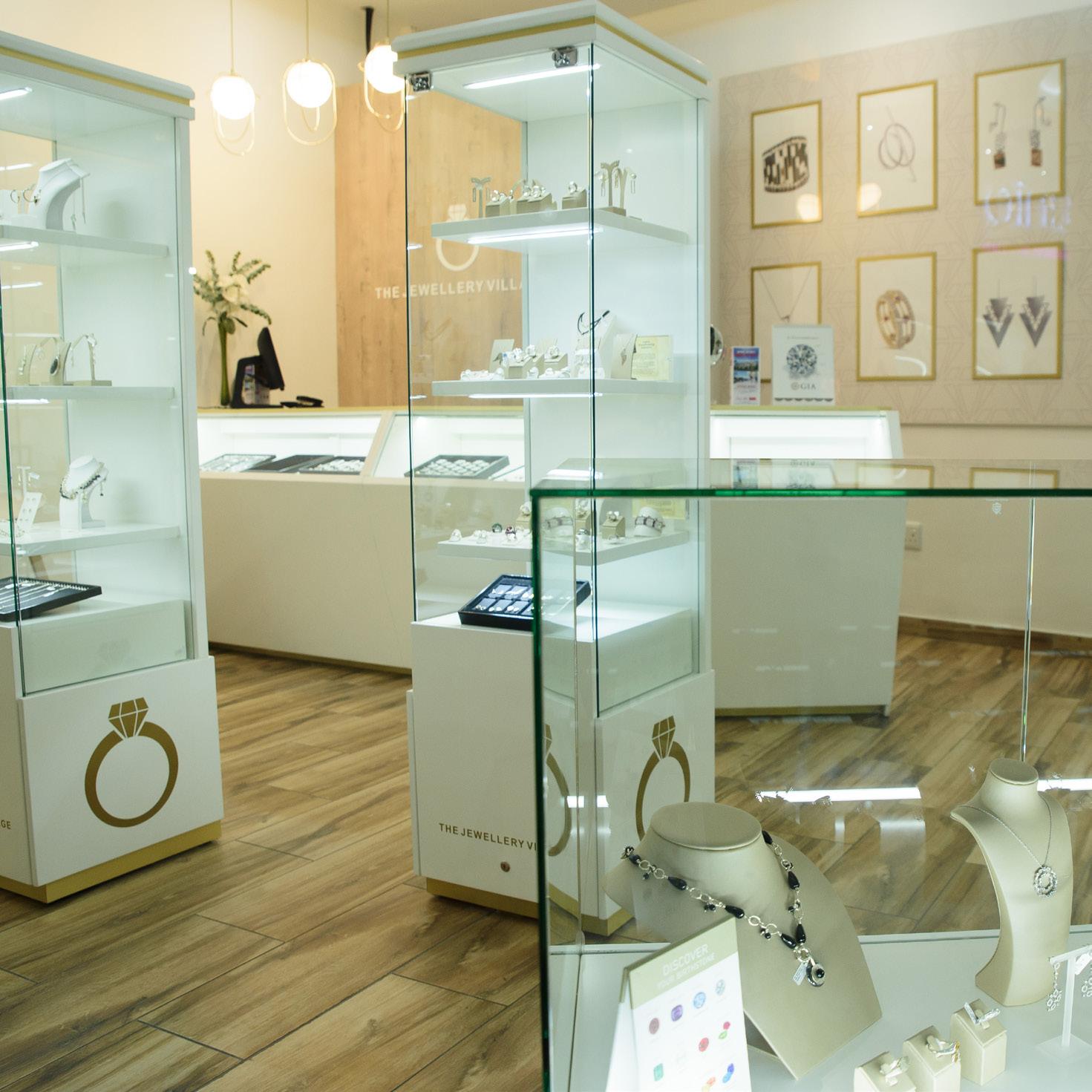
There was a time when value in the industry was measured only in purity, and weight, but today provenance and ethical background play an important part in value. Which is why we are always evolving how we source our metal. Our commitment to responsible business practices and sourcing, allow us to not only preserve our business, but our people, product and planet.

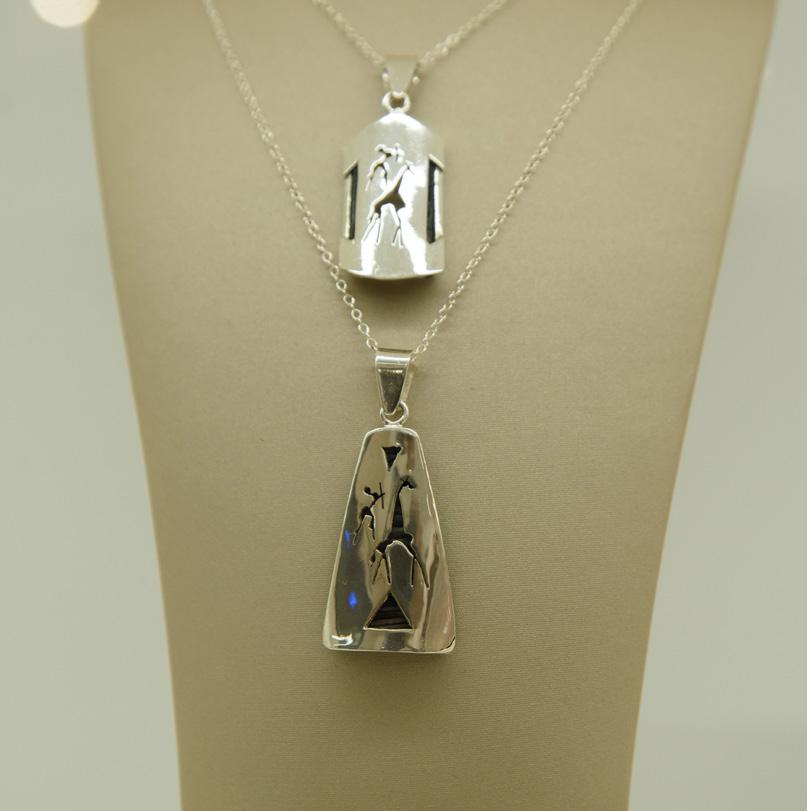
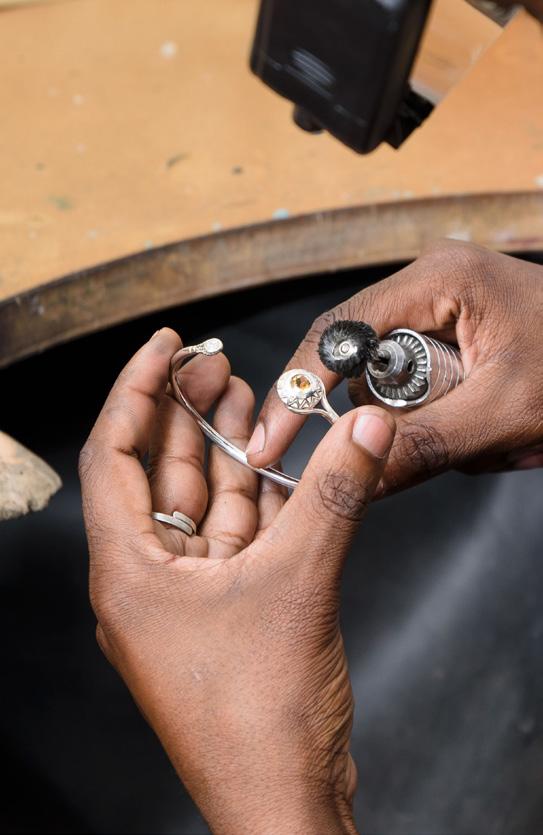

www.randrefinery.com
GIA evaluates solid laboratory-grown diamond ring
The Gemological Institute of America (GIA) recently evaluated a diamond ring cut from a single laboratory-grown diamond. The unique 4,04ct single-crystal, solid faceted ring was submitted to the GIA New York laboratory for assessment, marking a significant milestone in the world of carved single-crystal diamond rings.
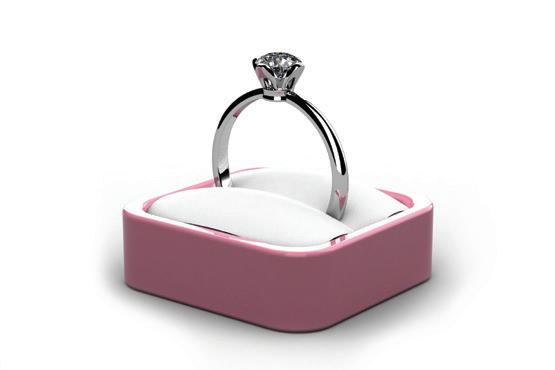
Gems & Gemology (G&G), the GIA’s quarterly professional journal, recently published an online research note with gemmological observations and spectroscopic features of this rare, lab-grown diamond ring. The research note will appear in the Fall 2023 print edition of the journal.
The ring, produced by Dutch Diamond Technologies in collaboration with Belgian jewellery store Heursel, demonstrates the fusion between cutting-edge technology and traditional craftsmanship. It was cut from an 8,54ct lab-grown diamond plate created by chemical vapour deposition. The 3,03 mm-thick band had an inner diameter of 16,35-16,40 mm and an outer diameter of 20,32-20,40 mm.

“Although this isn’t the first ‘ring’ of this type that’s been reported, it’s the first time that the GIA has evaluated one carved from a single lab-grown diamond. As technology continues to evolve with man-made diamond growth, we expect to see more creative ways for this product to be used. New achievements will advance the bounds of what’s possible with lab-grown diamonds in new applications of both jewellery and technology,” says Tom Moses, Executive VicePresident and Chief Laboratory and Research Officer at the institute.
Dissecting the downturn industry webinar
The diamond industry is enduring its worst slowdown since the peak of the COVID-19 crisis. Retail demand has dropped significantly since the highs of 2021 and 2022. Confidence within the trade is low.
In Rapaport’s quarterly webinar series Diamond Trends, which took place from 16-17 August, its News Editor Joshua Freedman discussed which diamond categories had suffered most
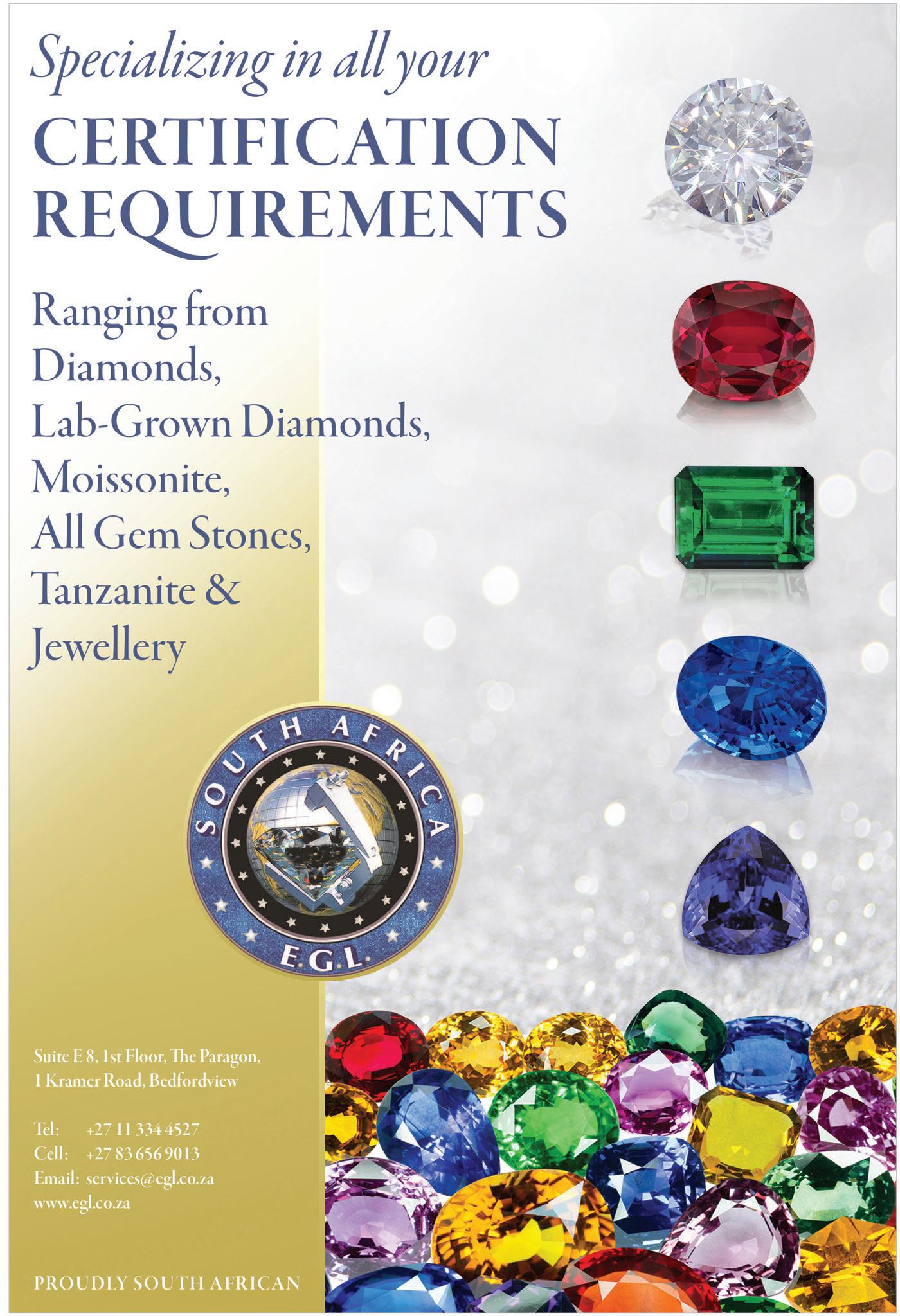
and why. He also addressed the impact of lab-grown diamonds on the natural market and looked for potential positives.
Highlights included a look at price and inventory trends in the diamond qualities that have been most affected by weak USA and Chinese consumer demand, based on exclusive trade data, as well as an analysis of lab-grown sales and the nature of the market share the product is gaining.
SA JEWELLERY NEWS - SEPTEMBER 2023 11 NEWS
(Top): The 4,04 ct ring fashioned from a single-crystal CVD laboratory-grown diamond. Photo by Towfiq Ahmed.
The Science of Colored Stone
Identification
and Origin.
GIA research and reports are the benchmark of colored stone analysis. Those who buy, sell, or curate the world’s most important gems rely on GIA's expertise, precision, objectivity, and integrity. ©2023
GIA.edu/ColoredStones
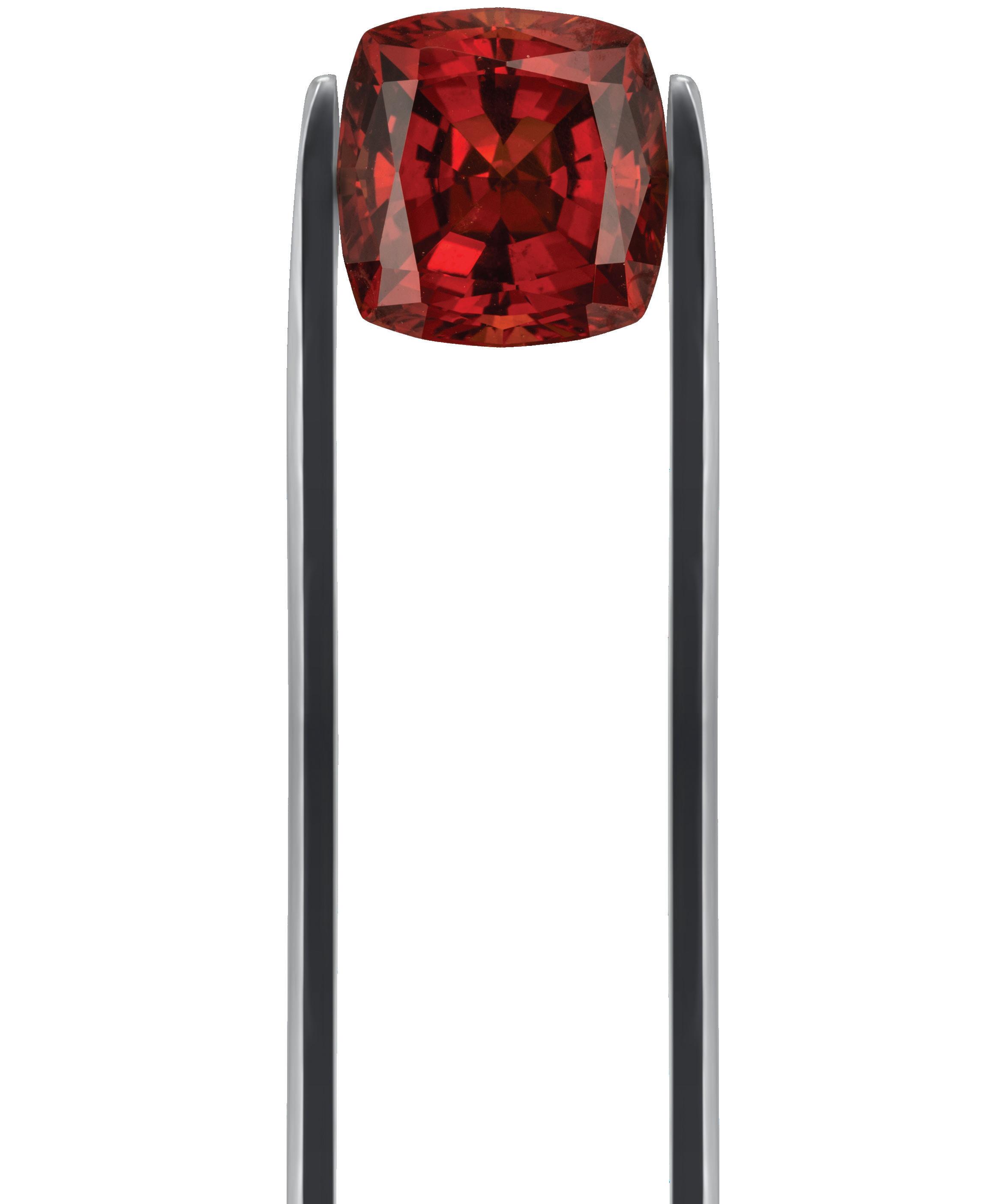
Gemological Institute of
Inc.
All trademarks
GIA. GIA is a nonprofit
All rights
America,
(GIA).
are registered trademarks owned by
501(c)(3) organization.
reserved.
De Beers’ Q2 diamond production falls 5% to 7,6 million carats
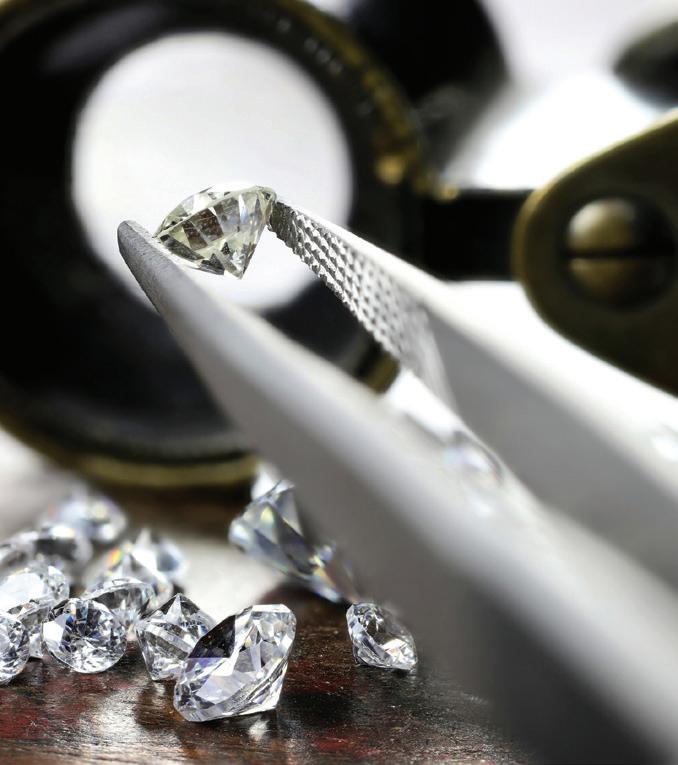
Rough diamond production decreased by 5% to 7,6 million carats, due to the planned reduction in South Africa, while the Venetia open-pit transitions to underground operations, which offset strong performance driven by the planned treatment of highergrade ore at the remaining assets.
In Botswana, production increased by 6% to 5,8 million carats, driven by the planned treatment of higher-grade ore at Orapa. This was partly offset by lower throughput at Jwaneng due to planned maintenance.
Namibia production increased by 8% to 0,6 million carats, primarily driven by the

ongoing ramp-up and expansion of the mining area at the land operations.
South African production decreased by 62% to 0,5 million carats, due to the planned end of Venetia’s open-pit operations in December 2022. Venetia continues to process lower-grade surface stockpiles, which will result in temporary lower production levels as it transitions to underground operations.
Production in Canada increased by 6% to 0,7 million carats, driven by the treatment of higher-grade ore, despite planned plant maintenance.
According to the report, demand for rough diamonds was impacted by the ongoing macro-economic headwinds, with high levels of polished diamond inventory in the midstream. Rough diamond sales totalled 7,6 million carats (6,4 million carats on a consolidated basis) from two Sights, compared with 9,4 million carats (8,3 million carats on a consolidated basis) from three Sights in Q2 2022 and 9,7 million carats (8,9 million carats on a consolidated basis) from three Sights in Q1 2023.
The H1 2023 consolidated average realised price decreased by 23% to US$163/ct (H1 2022: US$213/ct), primarily due to selling a larger proportion of lower-value rough diamonds, as Sightholders took a more cautious approach to planning their 2023 allocation schedule due to the uncertain macro-economic outlook. The average rough price index decreased by 2%, reflecting the overall softening in consumer demand for diamond jewellery and a build-up of inventory in the midstream.
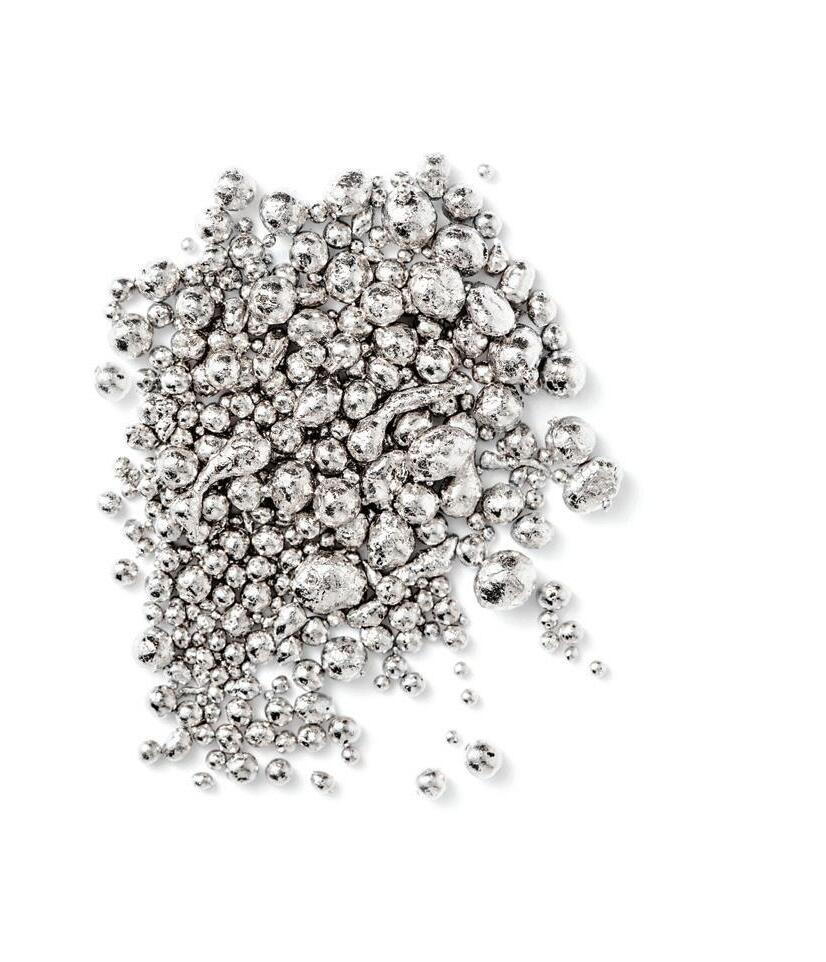
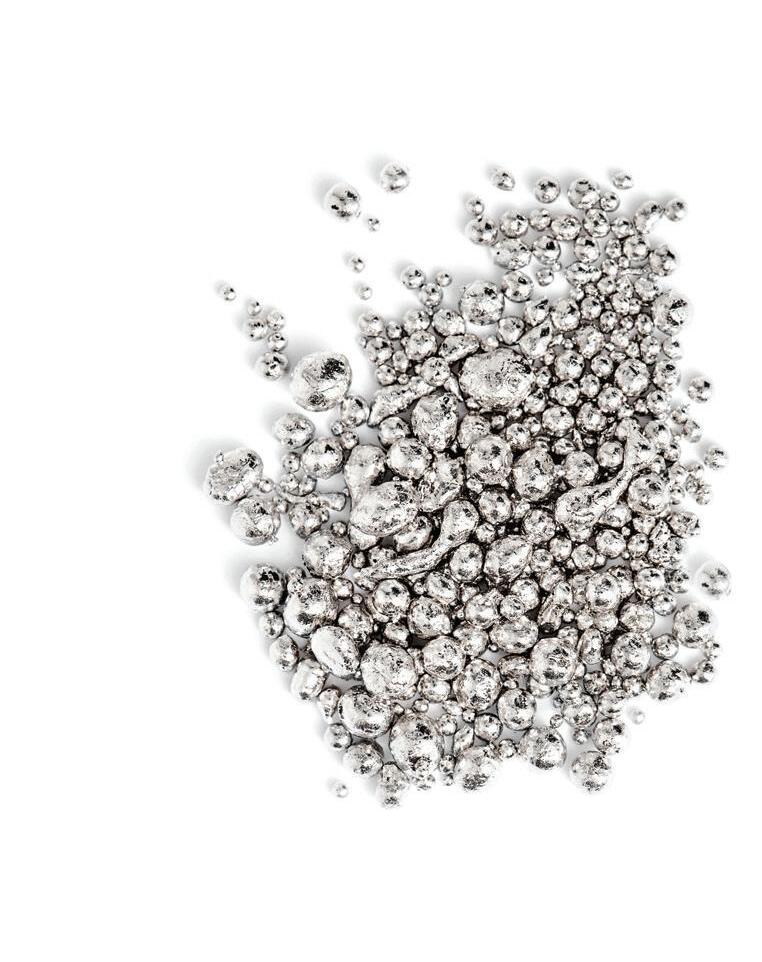
Tupac Shakur’s diamond and ruby ring rakes in US$1 million
A one-of-a-kind custom diamond and ruby crown ring, worn by murdered rapper Tupac Shakur during his last public appearance, sold for just over US$1 million at a recent auction at Sotheby’s in New York.
The piece, which Shakur designed and commissioned in 1996, became the most valuable hip-hop artifact ever sold at auction, said Sotheby’s. It is also the only hip-hop item to pass the US$1 million mark. After a battle between several bidders, the jewel fetched more than triple its US$300 000 pre-sale high estimate.

The ring consists of a diamond-encrusted
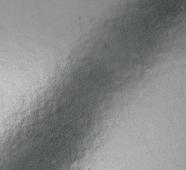
gold band, on top of which sits a crown studded with a cabochon ruby and two pavécut diamonds, with smaller rubies at the point tips. Shakur wore the crown ring at the 1996 MTV Video Music Awards, his final public appearance before his death. It was offered at the auction by his godmother, Yaasmyn Fula.
“This one-of-a-kind custom ring was meticulously designed by Tupac and is among the final products of his boundless creative energy – a unique artifact from a period that is a testament to his enduring influence on hip-hop,” said Cassandra Hatton, Global Head of Science and Popular Culture at Sotheby’s. – Rapaport
SA JEWELLERY NEWS - SEPTEMBER 2023 NEWS
SEZ: +27 (0) 12 000 4440 | CPT: +27 (0) 21 510 0770 info@MetCon.co.za | MetCon.co.za Make the sustainable choice
the QR code to learn more Your platinum’s past is important A Platinum Partnership Featured jewellery designed by Aimee Bredenkamp
The Platinum Provenance mark guarantees superior quality and full traceability.
Scan
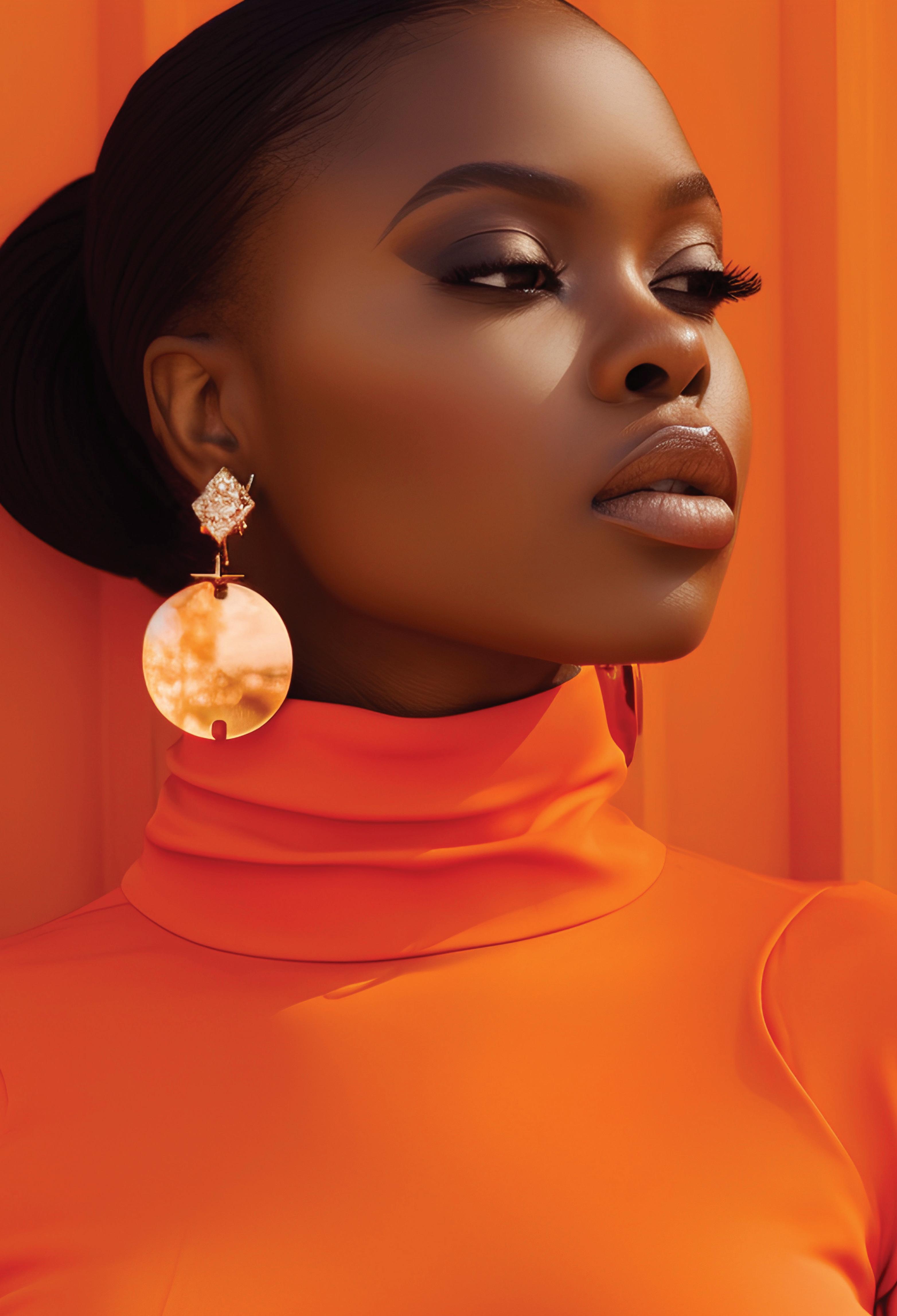
Website: www.jewellex.co.za; Office: 011 484-5528; Email: jewellex@jewellery.org.za Thank you! Thank you for supporting Africa’s Premier Jewellery and Watch Showcase Watch this space for 2024 dates
Jewellery Council of SA (JCSA) update
TOP OF MIND FOR MANY RIGHT NOW IS Jewellex Africa 2023. We are excited to be offering an opportunity for our industry to meet up from all corners of the country for the first time since 2019.
The show will be held from 3-4 September 2023 at the Wanderers Club in Illovo, Johannesburg, on a smaller scale. We believe that this new venue will bring a newness and freshness to the show. All space has been sold out.
It is time to start building the blocks of Jewellex Africa and bring back a weekend during the year for the jewellery industry to network, build relationships and do business.
For out-of-towners, the Marriott Wanderers Hotel is directly across the parking lot.
To start off the two-day show, we will be offering a Business Breakfast on the first morning, sponsored by Rand Refinery, one of the largest integrated, single-site precious metals refining and smelting complexes in the world.
We extend our thanks to our other sponsor, Brinks SA, for its continued support of the JCSA and our projects.
On legislative matters, members were made aware that the Mining Charter no longer applies to the jewellery industry. The Precious Metals Act, however, does still apply and in this regard, the council passed on a simplified list of licence application requirements received from the SA Diamond and Precious Metals Regulator.
The JCSA assists members with challenges they may experience with permit, refining and beneficiation applications.
Consumer confidence is an important aspect for jewellers to consider. It is not addressed in the Consumer Protection Act (CPA) and, as such, we have encouraged jewellers, as suppliers, to consider the relationships they have with their customers, specifically on issues such as whether to allow returns, give credits or offer refunds.
The council provides our jewellers with consumer education brochures to help educate
customers and recently also recirculated the CPA guidelines to ensure that jewellers are aware of legislation regarding these matters.
We also offer a service to members and consumers in the unlikely event of a dispute arising. This mediatory service allows the parties to reach agreements without having to go through expensive legal channels.
The JCSA also recently distributed an alert received from local and international sources that diamonds circulating in the market as certified stones with laboratory certificates have, in fact, been found to be laboratory-grown.
While the council supports the sale of lab-grown diamonds, we have advised members that non-disclosure is fraudulent and that the onus is on them to ensure that they do not sell undisclosed lab-grown stones. If members sell diamonds as natural ones, they need to ensure that they are indeed natural, rather than relying purely on warranties from suppliers.
The council is in the process of creating a recommended practice relating to simulants and lab-grown diamonds in respect of terminology, disclosure, responsibility, valuations, certifications, etc. We are calling on members to provide their input.
For members selling to tourists who claim VAT refunds when leaving the country, the SA Revenue Service appointed a new service provider on 1 April this year to administer the VAT refund system at various exit points from the country. This information was shared and included contact details of the relevant parties.
Of utmost importance is the fact that crimerelated incidents have increased. We therefore advised members that it was imperative that we work together to report such incidents to our networks and also provided pertinent information and useful images. The information included the facts that the second half of the year is historically a time of higher risk, as are the hours of 11am-2pm and 8-9pm. High-risk days of the week are Sundays (when there is less traffic, providing easier getaways for armed robbers) and Thursdays.
The JCSA has arranged for 10 manufacturing companies to exhibit at New York Now in August. Their trip will be fully sponsored by the Department of Trade, Industry & Competition, including flights, accommodation, meals and a fully furnished stand.
The AGOA agreement between the USA and SA allows us to export to the USA dutyfree and VAT-free.
At the recent AGM, members agreed that the name of the council, which will remain a non-profit company, be changed to include other important sectors such as metal refiners.
This decision has come at a time when the JCSA has needed to decide on its future longevity due to financial constraints. By including other important sectors in a representative body, more contributors will have a bigger voice with more resources, especially when addressing important issues with government.
The Mining Qualification Authority (MQA) has authorised the development of the following skills programmes:
1. Tube Gemstone Jewellery-Setter –completed
2. Channel Gemstone Jewellery-Setter –completed
3. Pavé Gemstone Jewellery-Setter –completed
4. Castings Cleaner and Basic Jewellery Manufacturer
5. Wax Casting Mould-Maker
6. Master Moulder (reproduction, mass production)
7. Small Business Diamond Processor
8. Laser Diamond-Cutter
9. Lapidary
Any members wishing to participate in the development of these skills are invited to contact the JCSA.
For further information on any of the above topics, please e-mail us at: admin@jewellery.org.za. We welcome any input and ideas!
LORNA LLOYD CEO
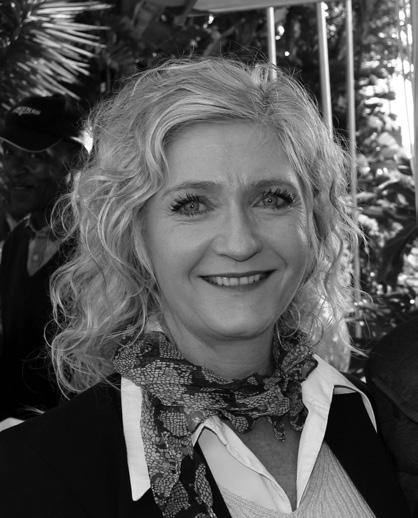
SA JEWELLERY NEWS - SEPTEMBER 2023 15 FROM THE JCSA’S OFFICE
The 10 most expensive and coveted gemstones in the world
Gemstones have been highly valued in societies throughout history. They have been used as symbols of wealth, power and status, and are often associated with luxury and glamour. Here are the costliest ones one earth.
THE RARITY AND BEAUTY OF GEMSTONES make them highly valuable and they can fetch incredibly high prices at auction. Investing in gemstones can be a smart move for those seeking a long-term investment that will hold its value over time. Not only can gemstones appreciate in value, but they can also be a beautiful addition to any collection.
Unlike other types of investments, such as stocks or real estate, gemstones are tangible assets that can be held and enjoyed. They are also relatively stable in value and can be a good hedge against inflation.
There are several factors that contribute to the high value of gemstones. One of the most important is rarity. Some types of gemstones can only be found in a few locations around the world. This scarcity can drive up the price of these stones, as collectors and investors compete to acquire them.
Another factor is the quality of the gemstone itself. Gemstones are graded based on a number of criteria, including colour, clarity and cut. A flawless, perfectly cut gemstone with vibrant colour will be much more valuable than a stone with visible inclusions or dull colour.
Whether you are a collector or an investor, there are many reasons to consider adding gemstones to your portfolio. Over 200 types of them have been recorded and with their rarity, beauty and value, these precious stones are indeed treasures.
Blue diamond
Price: Up to US$3,93 million per carat
You will not be able to find a blue diamond outside of an auction house – that is how rare this gemstone is. And when it does get slated for auction, scores of collectors and private buyers will swarm for a chance of adding it to their collection. There are only a few mines in the world that mine blue diamonds – in South Africa, Australia and India.
The most expensive blue diamond so far is the Oppenheimer Blue, which was sold for a mind-blowing US$57,5 million. On the other hand, the most famous one is currently residing at the Smithsonian Institute. The Hope Diamond weighs 45,2ct and has a price estimation of US$250 million.
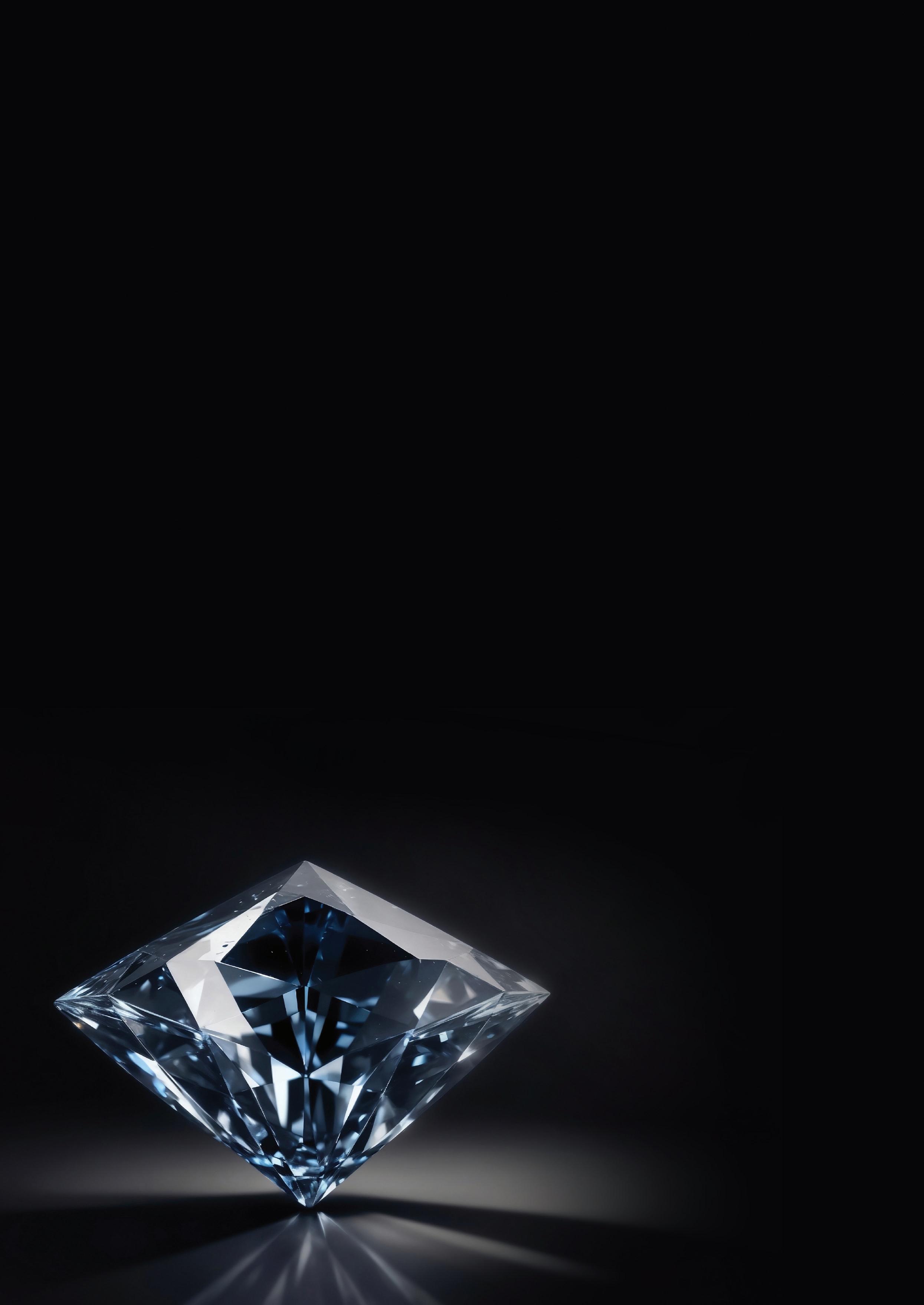
Pink diamond
Price: US$1,19 million per carat
Similar to the red diamond, the pink diamond also derives its colour from minor defects.
SA JEWELLERY NEWS - SEPTEMBER 2023 16 GEMSTONE
ALLURE
Mostly mined at the Argyle mine in Australia, this diamond is highly coveted due to its romantic rosy shade. While the cost for this gemstone can be steep, you can get a friendlier price when the diamonds are mined outside of the Argyle mine.
The most expensive pink diamond sold was priced at US$57,7 million at the Sotheby’s Hong Kong auction in October 2022. Dubbed the Williamson Pink Star, the cushion-shaped diamond is noted to have a “fancy vivid pink” tone and is “internally flawless”.
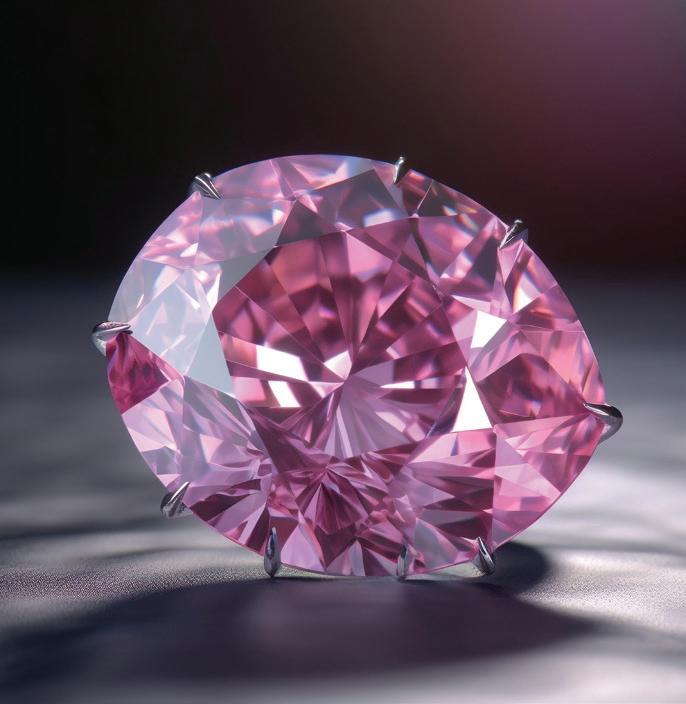
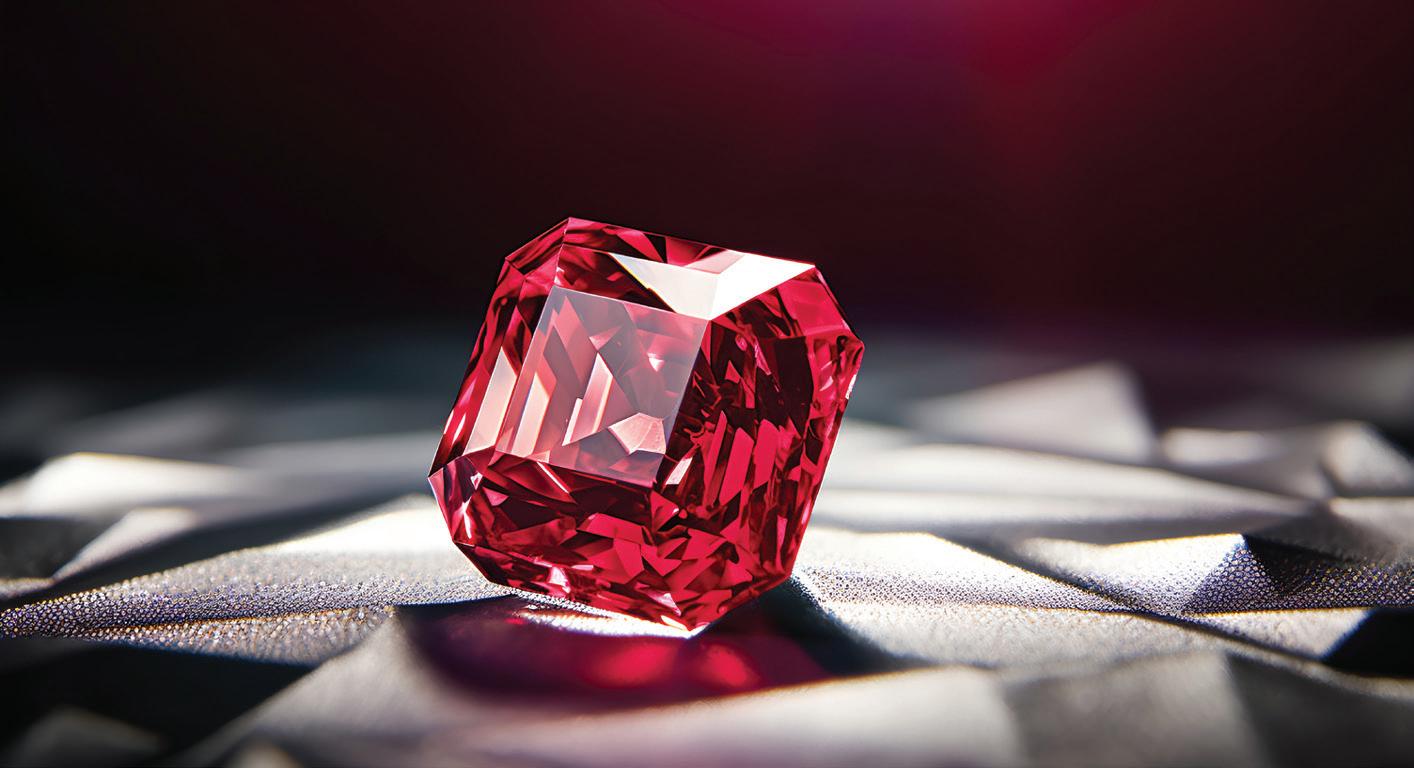
Red diamond
Price: Up to US$1 million per carat
Red is the rarest colour for a diamond, which can come in a rainbow of tints. Due to its rarity, the red diamond is easily one of the most expensive gemstones in the world. To this day, only about 20-30 red diamonds have been unearthed. Colours in diamonds are usually the after-effects of impurities. However, for red and pink diamonds, this tint comes from minor defects in the lattice structure.
The largest red diamond ever sold fetched the hefty sum of US$8 million, at US$1,6 million per carat.
Emerald
Price: Up to US$305 000 per carat
Marked as the May birthstone, this wellknown rock is one of the most expensive gemstones in the world. Although it may come across as common, it has one of the biggest price tags. With its captivating green hue, it is no surprise that this coveted gemstone has become one of the world’s goto precious stones.

Many in the market feature minor imperfections. Flawless emeralds are rare and when one is found, it is typically sold for an overwhelming price. One example is the Rockefeller Emerald, an 18,04ct rock purchased by John D Rockefeller for his wife. It later found itself at a Christie’s auction table and sold for a recordbreaking US$5,5 million.
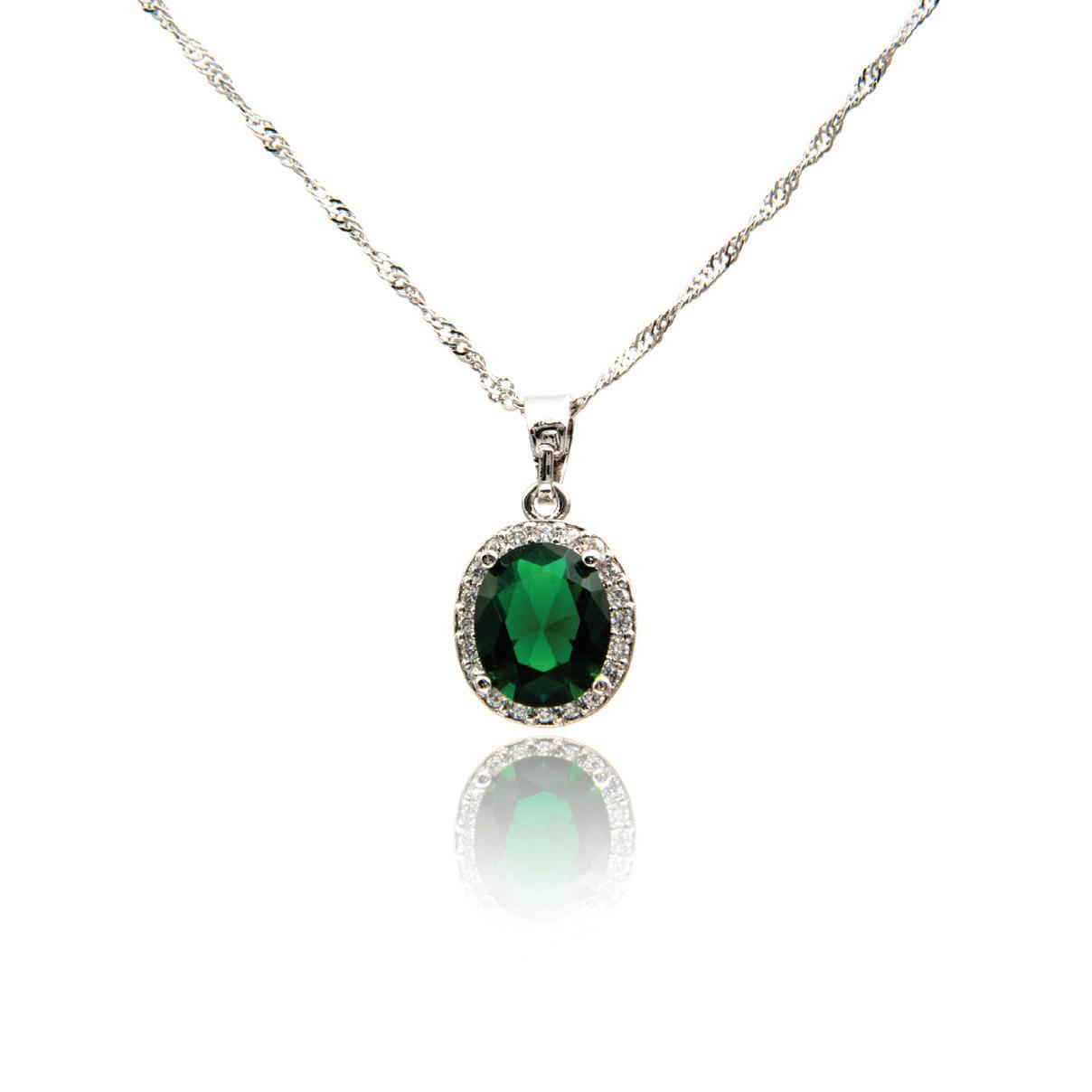
Alexandrite
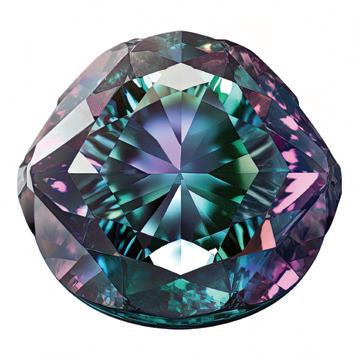
Price: Up to US$70 000 per carat
First discovered in Russia, alexandrites’ prices vary according to their size. Because bigger chunks are a rarity, the price can go up exponentially. For starters, smaller pieces can fetch a price of US$15 000 a pop. Although this stone has been found in other regions such as Tanzania and Sri Lanka, the size remains a pricing factor.
The largest one to date – at 65,7ct – is currently housed at the Smithsonian Institute. You can imagine what the price of this historical find would be, though it is unlikely ever to leave the institute.
Painite
Price: Up to US$60 000 per carat
The most expensive non-diamond gemstone is the painite, though few have ever heard of it. To say that this brick-toned bijou is rare would be an understatement. After its discovery in 1951, the next decades saw only two specimens. More recently, two mines were opened in Myanmar dedicated to painite, but it remains a rarity, with fewer than 100 ever found. It is not only the rarest gemstone on earth, but also the rarest mineral.
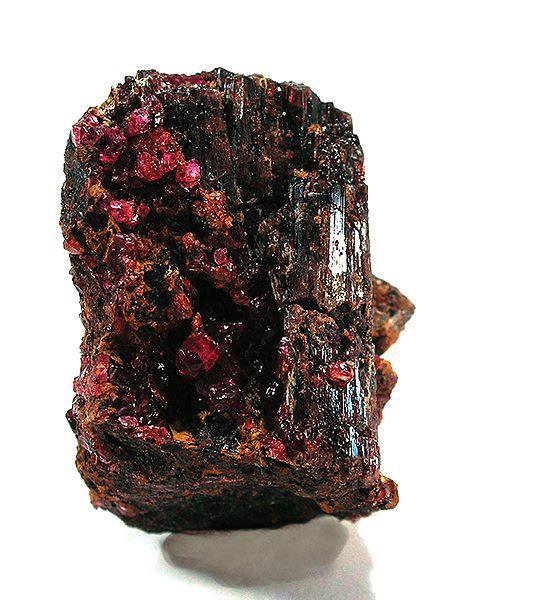
SA JEWELLERY NEWS - SEPTEMBER 2023 17 GEMSTONE ALLURE
Red is the rarest colour for a diamond, which can come in a rainbow of tints. Due to its rarity, the red diamond is easily one of the most expensive gemstones in the world.
Rob Lavinsky, iRocks.com
Grandidierite
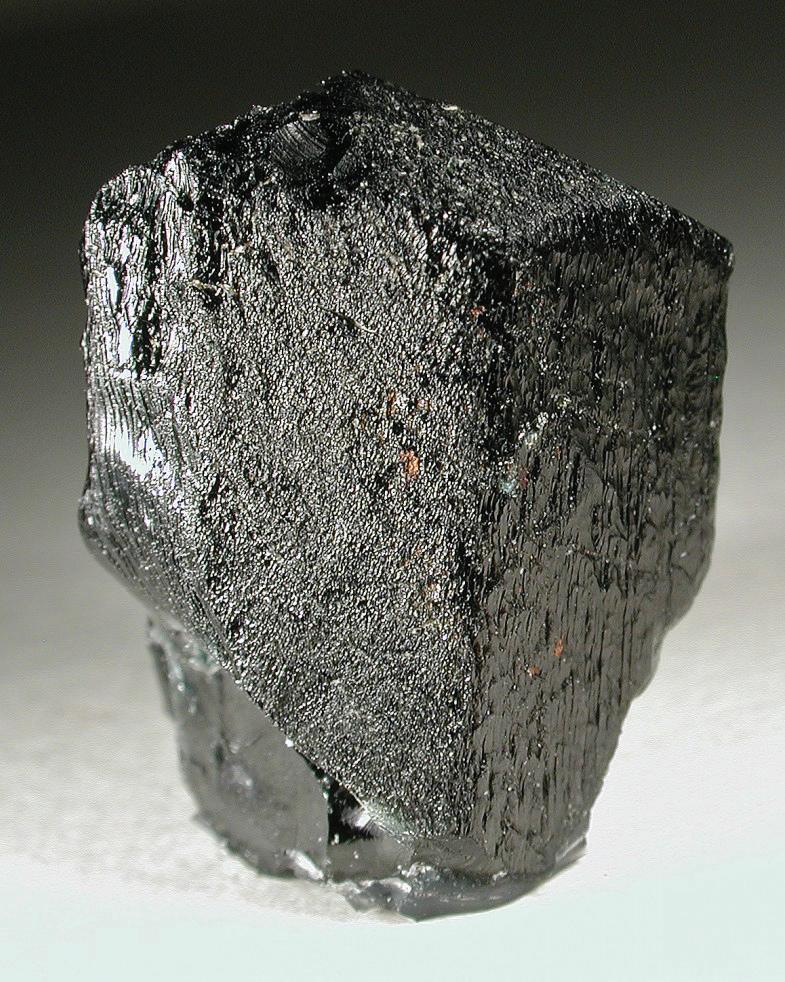
Price: Up to US$20 000 per carat
This priceless gem was originally found in southern Madagascar. Depending on how you look at it, you may see a world of colours varying from bluish-green and dark green to pale yellow. Though it is a stunning sight, jewellery made of this precious rock is rare, with synthetic versions created only for research purposes.
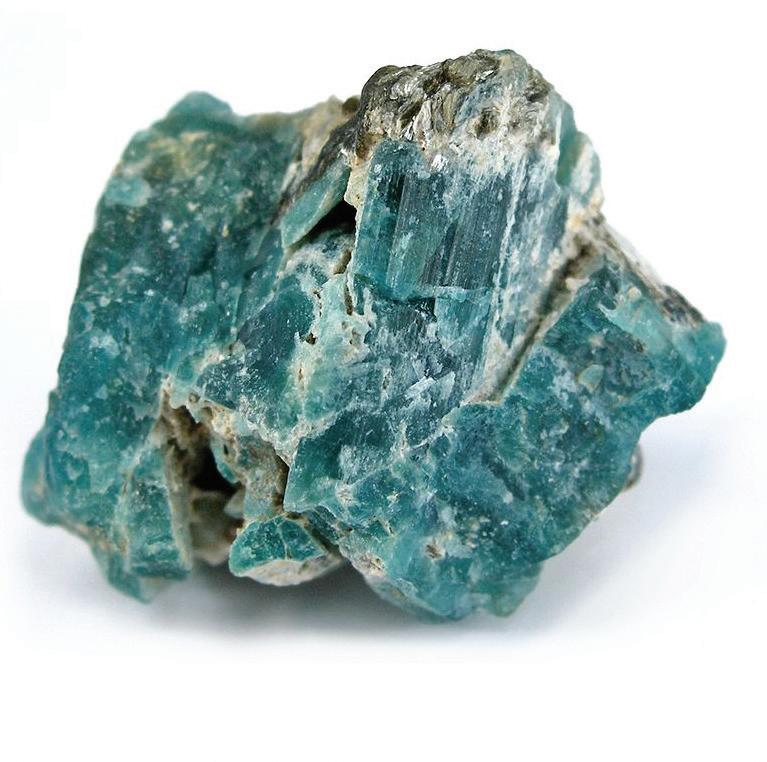
Though its hardness makes it suitable for jewellery, there are not many gem-quality rocks mined out of the deposits.
Serendibite
Price: Up to US$18 000 per carat
First discovered in 1902 in Sri Lanka, this precious stone was most recently detected in the Mogok area of Myanmar. Serendibites are a combination of calcium, magnesium, aluminium, silicon, boron and oxygen, and although they do not resemble other precious stones, they are truly rare gems – so rare, in fact, that they have only ever been mined three times, with all specimens measuring under 1ct. Serendibites can emit a range of colours, from deep blue to black and green. Those mined in Sri Lanka can also occur in an attractive violet-blue hue.
Yellow diamond
Price: Up to US$16 000 per carat
Though they may be some of the most commonly-found coloured diamonds, yellow ones are still among the most expensive gemstones in the world. The most soughtafter hue is canary yellow, which is officially classified as a pure fancy yellow diamond.
The most expensive one to date is the Graff Vivid Yellow Diamond, which was sold for US$16,3 million for 100,09ct. Prior to its auction, however, analysts estimated the piece to be sold at US$21 million. Of similar calibre is the Tiffany Yellow Diamond, one of
the largest ones ever discovered. Permanently housed at Tiffany & Co’s flagship store at New York City, this diamond has only been worn by four women: American diplomat Mary Whitehouse at the 1975 Tiffany Ball, Audrey Hepburn in Breakfast at Tiffany’s, Lady Gaga at the 91st Academy Awards and Beyoncé in a collaboration with Tiffany.
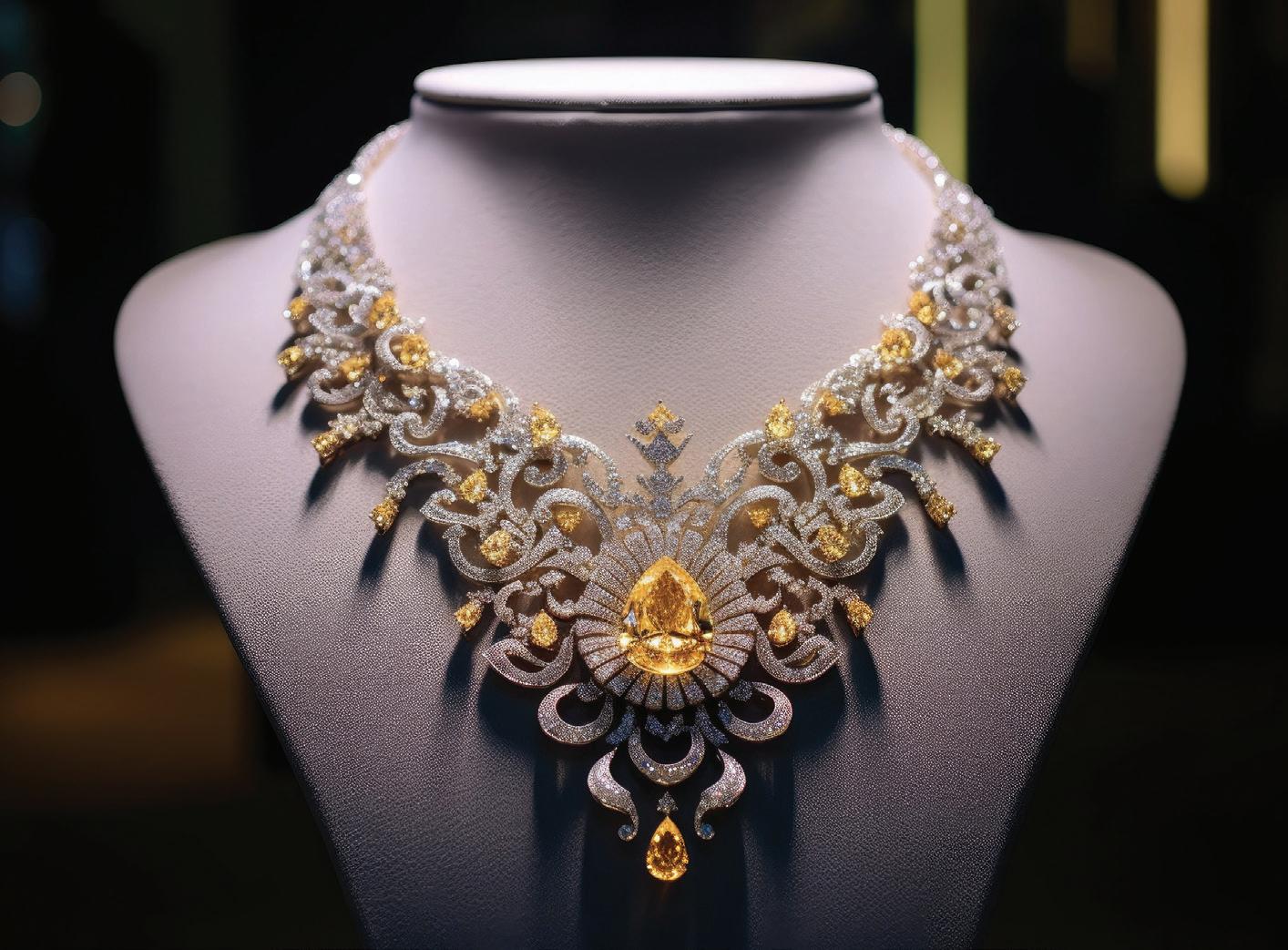
White diamond
Price: Up to US$15 000 per carat
As befits girls’ best friends, diamonds are treasures that earned their fame through the betrothal of Archduke Maximilian of Austria to Mary of Burgundy in 1477. He commissioned the first-ever diamond engagement ring on
record and soon every European nobility followed suit. To this day, it remains to be tradition to gift women with a diamond ring to signify a couple’s commitment to one another. The most priceless white diamond ever is the Kohinoor. Meaning “mountain of light” in Persian, the diamond has had its fair share of controversy, from its discovery to its current ownership. Part of the Crown Jewels of the UK, the Kohinoor originated in India, which – together with Pakistan and Afghanistan – has claimed ownership and demanded its return. However, the British government has denied these claims, insisting that it was legally obtained.
– This article first appeared on Lifestyle Asia Singapore (https://www.lifestyleasia. com/sg/style/jewellery/most-expensive-andcoveted-gemstones-in-the-world)
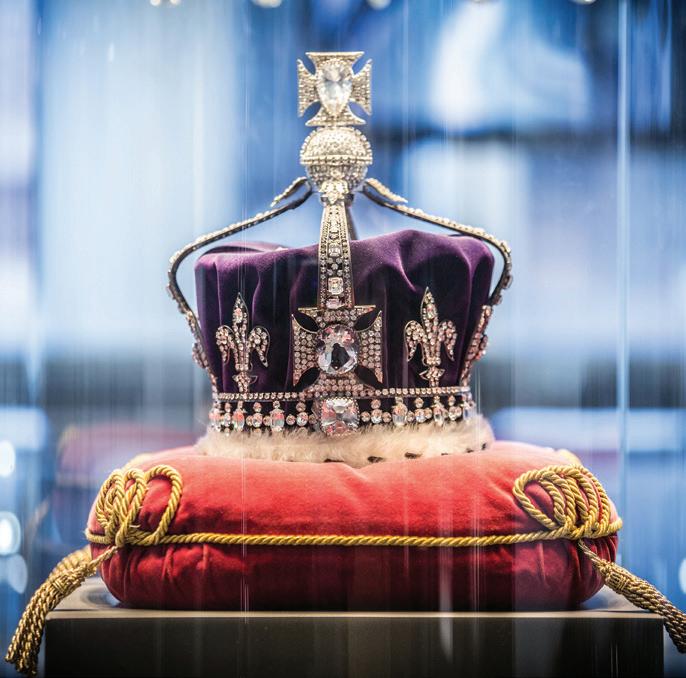
SA JEWELLERY NEWS - SEPTEMBER 2023 18 GEMSTONE ALLURE
Rob Lavinsky, iRocks.com
AlinavdMeulen
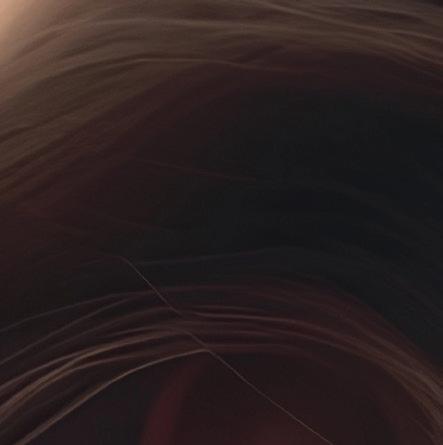

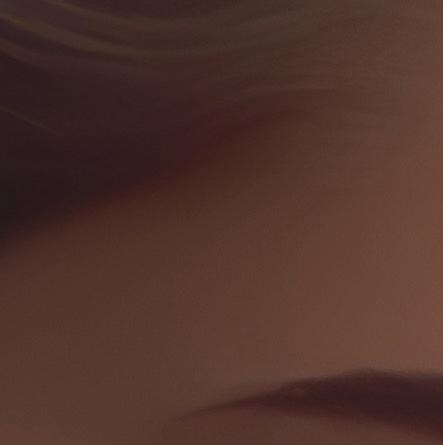
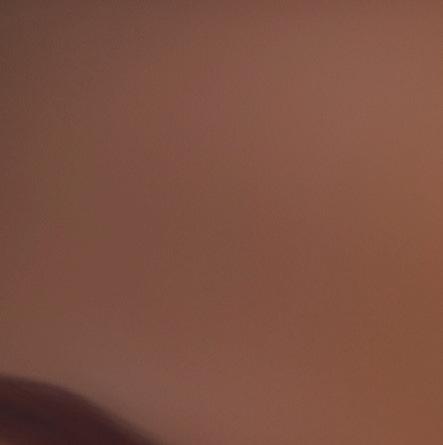
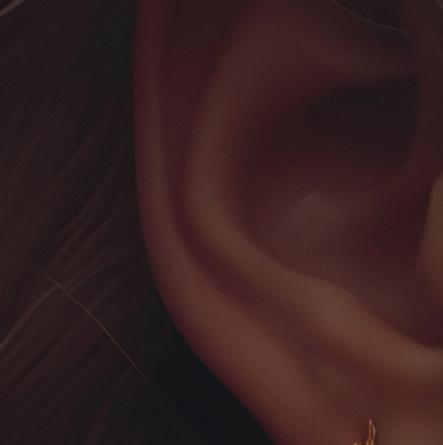
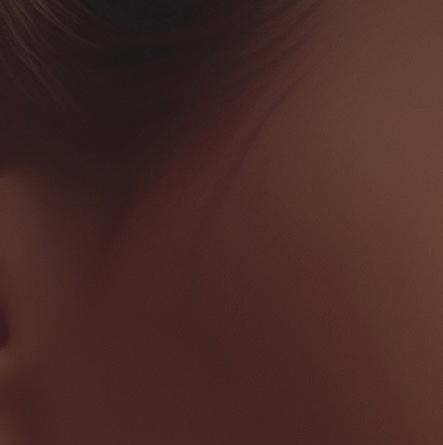
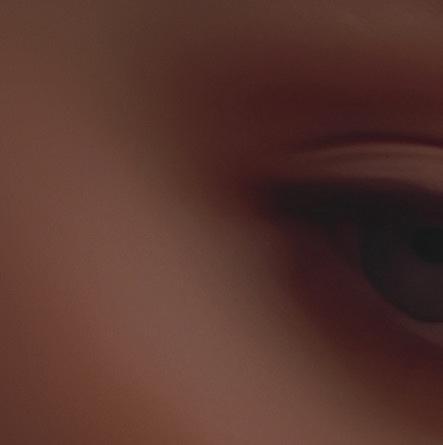


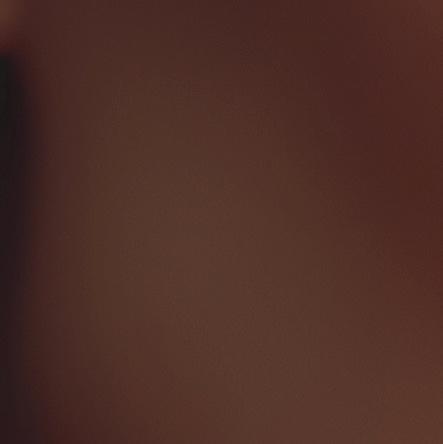
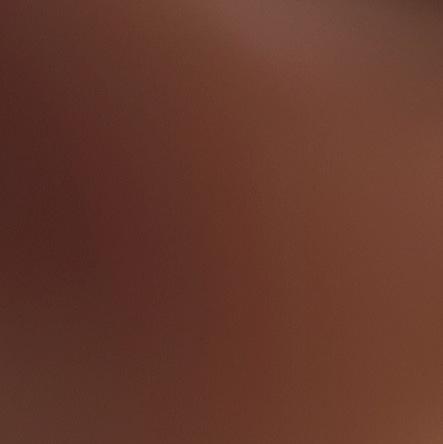
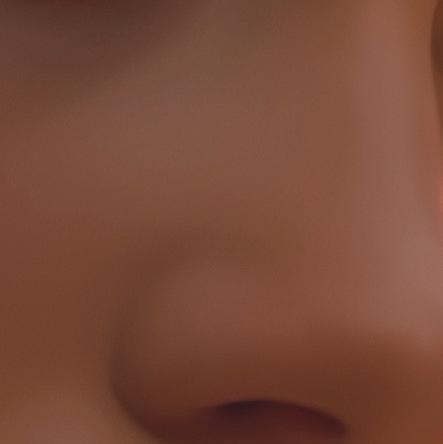

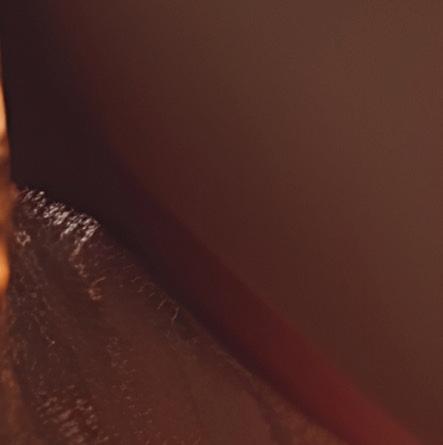

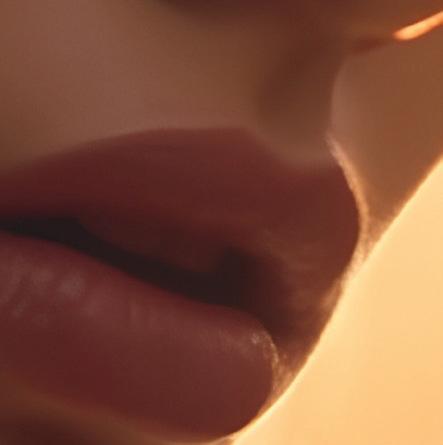
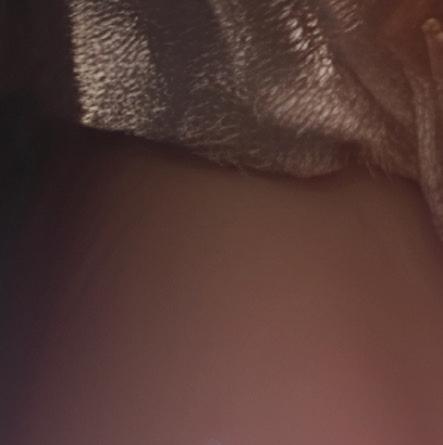
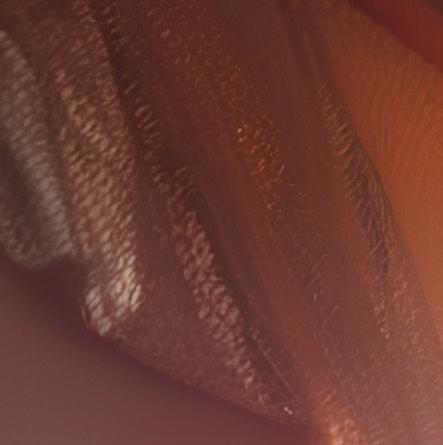
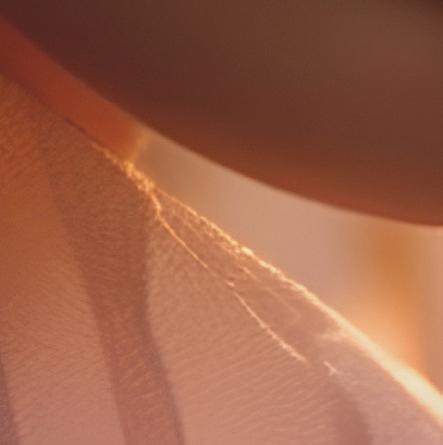
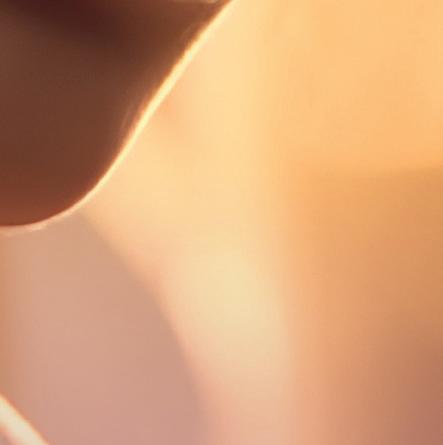
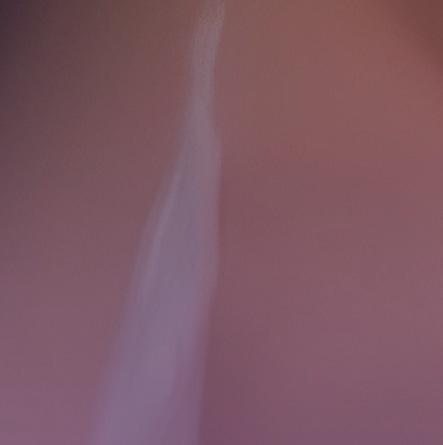
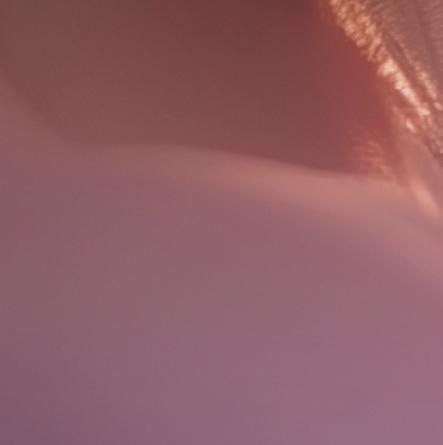


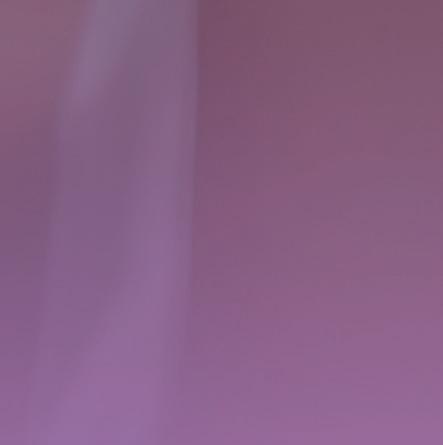





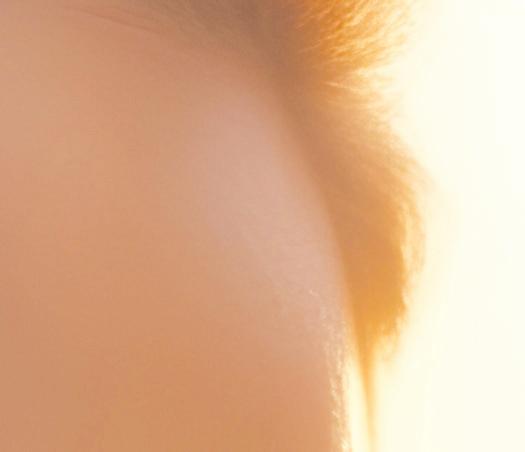

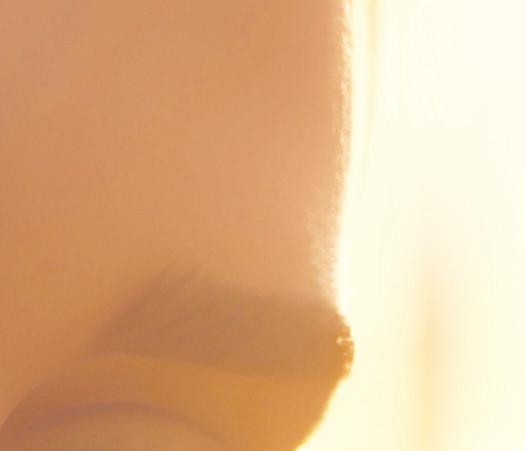


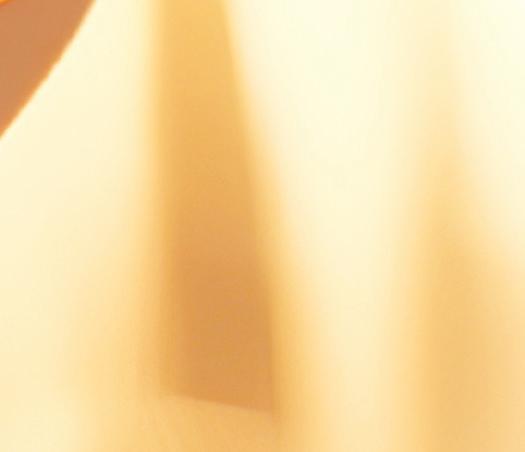





































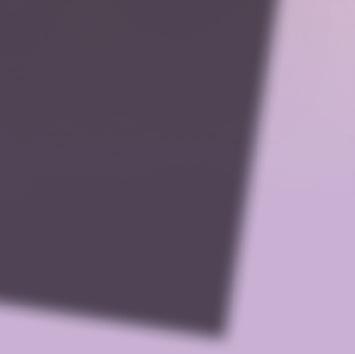





















































For more information or to book your space, contact: Thuli / 011 883 4627 / thuli@isikhova.co.za BIANNUAL DIRECTORY AUTUMN WINTER 2023 BIANNUAL DIRECTORY SPRING SUMMER 2023 BOOKINGS OPEN SPRING/SUMMER EDITION 2023 BIANNUAL DIRECTORY

www.manufacturingindaba.co.za CAPITALISING ON MANUFACTURING GROWTH IN AFRICA SANDTON CONVENTION CENTRE, JOHANNESBURG, SOUTH AFRICA 24 - 26 OCT 2023
The importance of African manufacturing
The Manufacturing Indaba taking place from 24-26 October 2023 at the Sandton Convention Centre in Johannesburg has a strategic focus to support the “Made in Africa” initiative. By encouraging local manufacturing and fostering a conducive environment for businesses to thrive, Africa can leverage its resources and potential to build sustainable and vibrant economies.
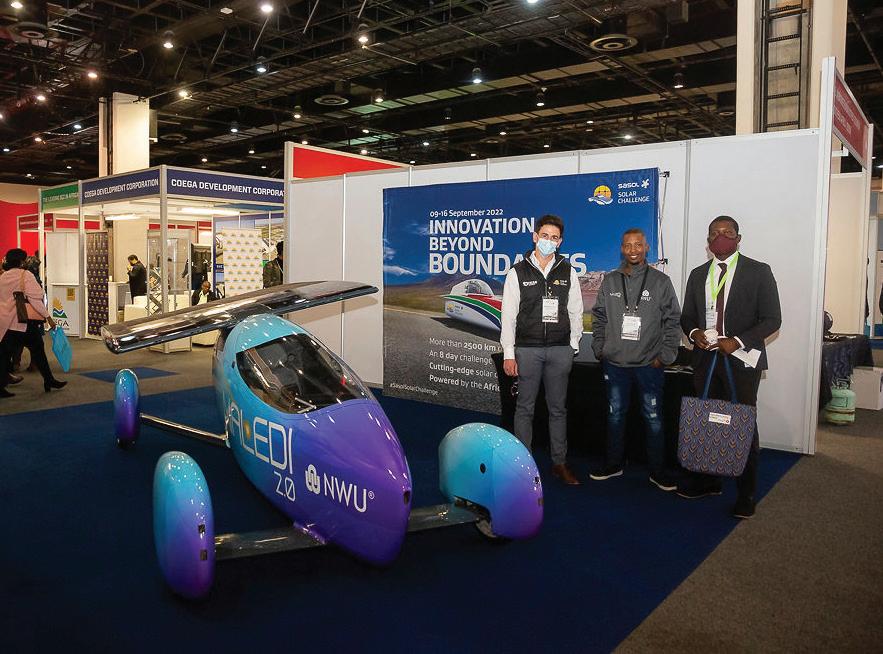
“MADE IN AFRICA” REFERS TO PRODUCTS
that are manufactured or produced within this continent. The phrase carries significant economic, social and cultural implications and is often used to promote and support African industries and businesses. The concept of “Made in Africa” has gained traction in recent years, as countries on the continent seek to strengthen their manufacturing sectors and increase domestic production.

The key aspects and implications of “Made in Africa” include:
Economic development
Emphasising “Made in Africa” products can contribute to economic development by promoting local industries, creating jobs and stimulating economic growth. It encourages consumers to buy items produced within their own countries or regions, thereby boosting the local economy.
Diversification of exports
Historically, many African countries have relied heavily on exporting raw materials. Encouraging “Made in Africa” products allows for the diversification of exports, as value-added goods can be shipped to international markets, potentially increasing export revenues.
Promoting African brands
“Made in Africa” supports the development and recognition of African brands both within the continent and globally. It fosters a sense of pride in and ownership of locally produced goods, helping African businesses compete with international brands.
Sustainable development
Local manufacturing can contribute to sustainable development by reducing the carbon footprint associated with long-distance shipping and promoting environmentally friendly practices. It can also encourage responsible sourcing of raw materials.
Cultural identity
“Made in Africa” products often incorporate local craftsmanship, traditional techniques and cultural elements, representing the rich heritage and diversity of the continent. This can contribute to preserving and promoting African cultural identity.
Job creation
Investing in local manufacturing and promoting “Made in Africa” products can generate employment opportunities, particularly in labour-intensive industries. Job creation can help address issues of unemployment and underemployment, especially among the youth.
Regional integration
Emphasising “Made in Africa” can encourage intra-African trade and regional economic integration. It promotes the development of regional value chains and strengthens economic ties among African nations.
The Manufacturing Indaba taking place from 24-26 October 2023 will be hosting country government presentations looking at investment opportunities in their respective manufacturing focus sectors. Governments, businesses and consumers all play essential roles in supporting and promoting “Made in Africa” products.
For further information about the indaba, visit: https://manufacturingindaba.co.za.
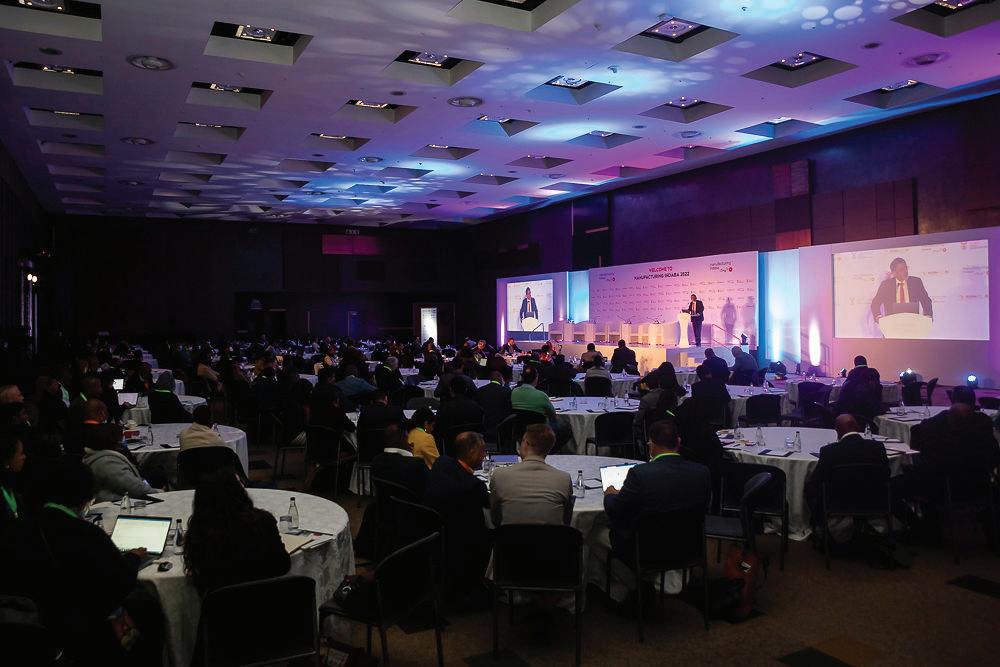
SA JEWELLERY NEWS - SEPTEMBER 2023 21 MADE IN AFRICA

















































































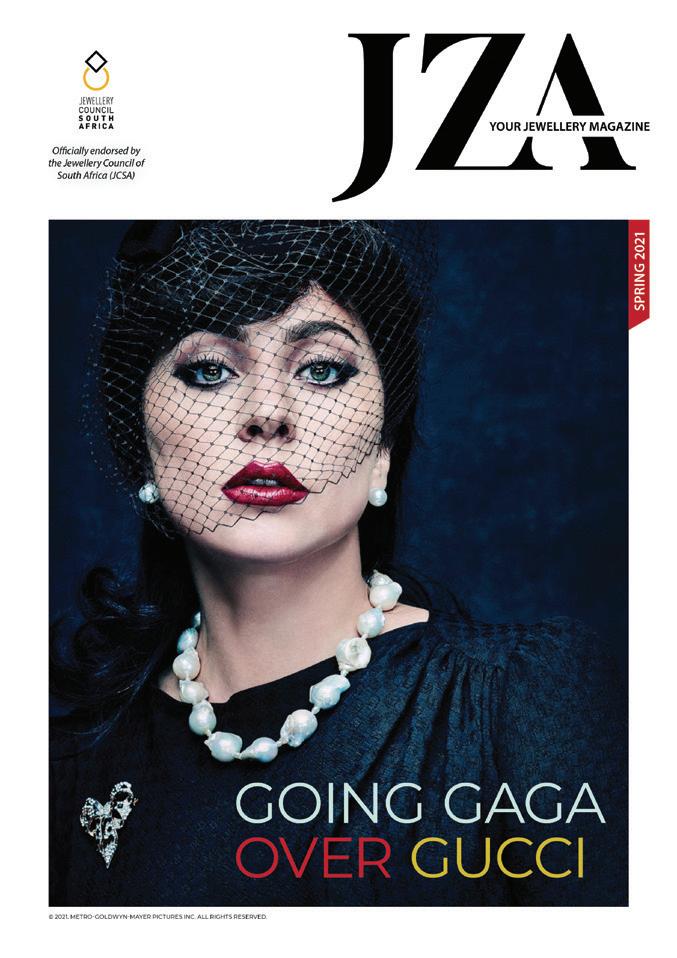

















































































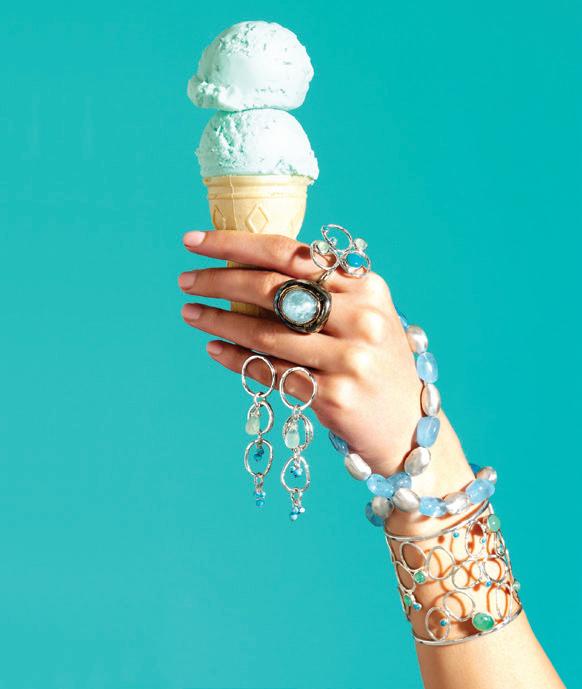































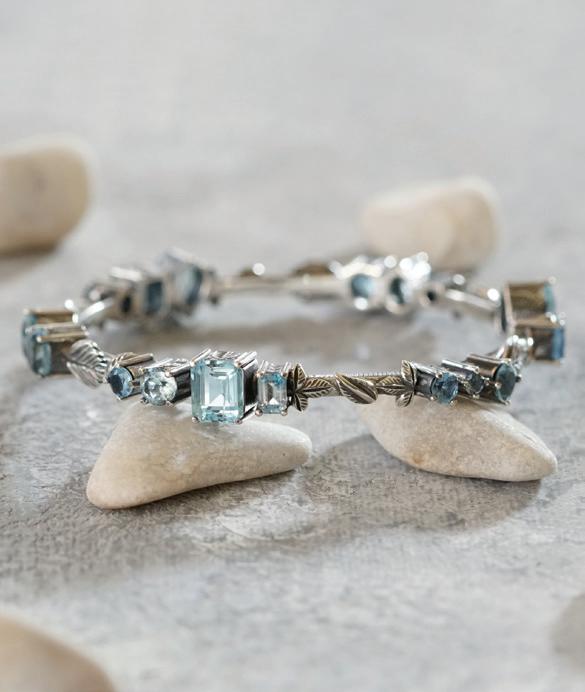





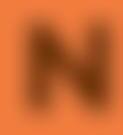











Silver Linings Now serving fabulousness! with Tsogo Sun win Storybook O cially endorsed by the Jewellery Council of South Africa (JCSA) AUTUMN 2021 Regency Silver Linings Now serving fabulousness! Magical charms with Tsogo Sun win Rocks Storybook SPRING 2022 O cially endorsed by the Jewellery Council of South Africa (JCSA) homegrown magic #jzaontrend BORN IN AFRICA RETAILERS! FOLLOW US ON SOCIAL MEDIA CONTACT JENNY TO ADVERTISE jenny@isikhova.co.za 083-450-6052 Reach jewellery consumers through South Africa’s first and only, dedicated online consumer-retail magazine
A collection with a story to tell
Andreas Salver Manufacturing Jewellers’ latest collection will be launched at this year’s Jewellex Africa. It is a captivating collection of exceptionally lively, coloured gemstone pieces and the story behind them is as beautiful as the jewellery itself.
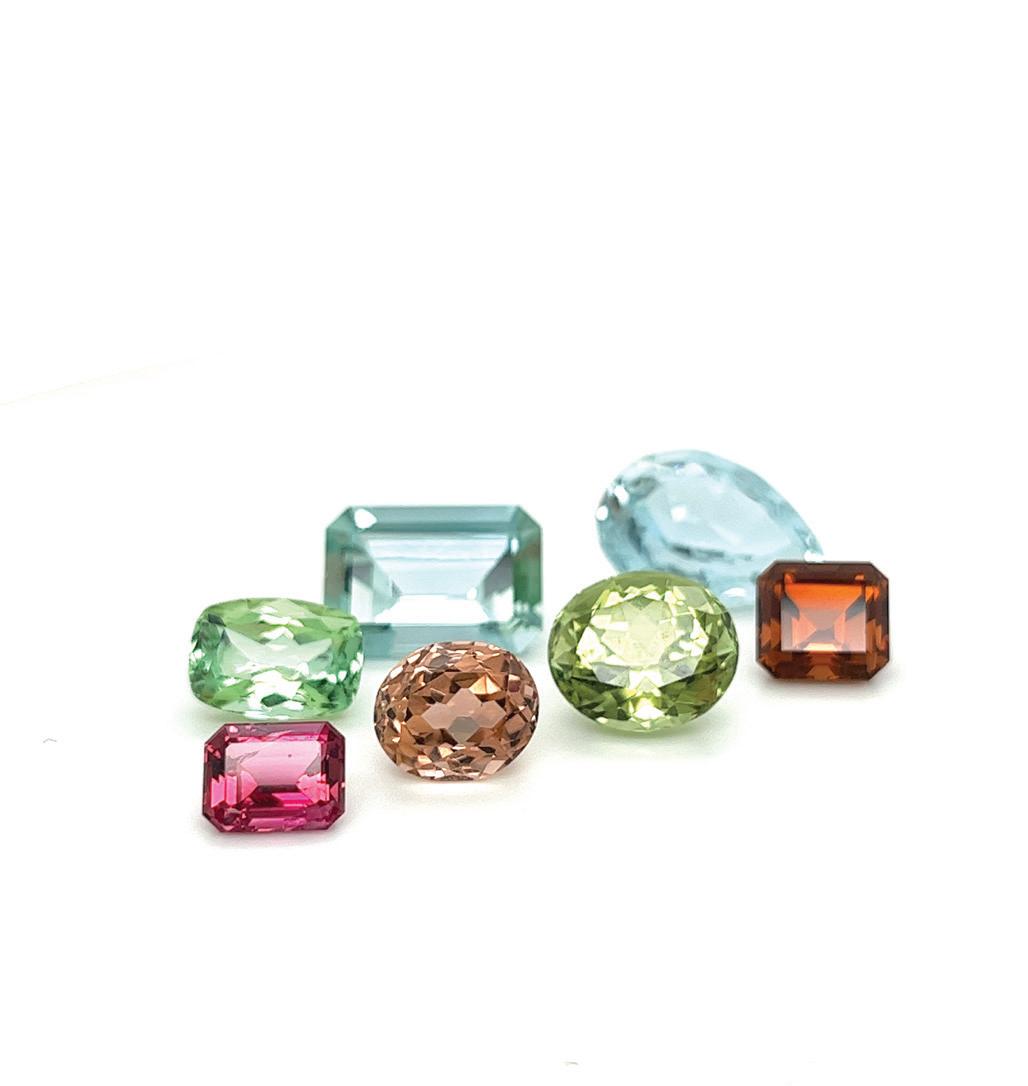
IT HAS BEEN 31 years since Andreas Salver Manufacturing Jewellers opened its doors in 1992 in Johannesburg and owner Andreas Salver has never stopped creating magic. He has won many awards throughout his career and is renowned around the world for his workmanship, even creating pieces for other jeweller's wives.

His latest collection, Trending Fashion, is a range of exclusive pieces featuring a stunning array of coloured gemstones. What makes the collection even more distinct is the remarkable story behind it.
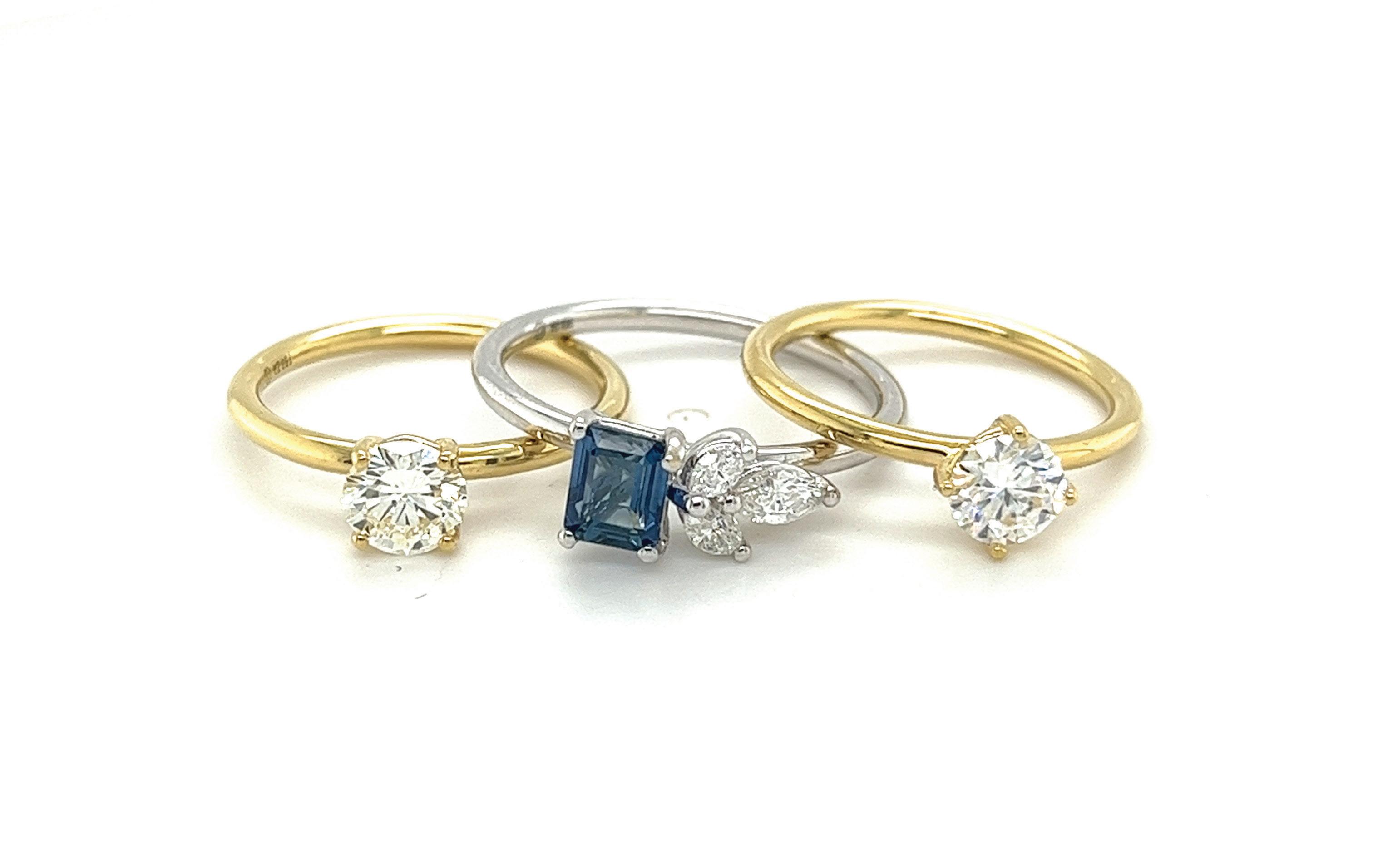
“My dad left me before I turned five. I only knew him as a coppersmith and sculptor,” he recalls. “A few months ago, an 83-year-old man called Michael walked into my office telling me he had employed my father and shared a few stories on what a good man Jurgen Salver was – a man with a good heart, full of integrity,” he says.
“We instantly developed a warm bond
and hugged as if we'd known each for years. He came back to a visit a few times after that and the fifth time, he presented me with a gemstone collection that absolutely blew my mind. I’m sure there were well over 1 000 gemstones, some of which I’d never seen before. All are of magnificent quality, with immense value – beautiful stones that sparkled with life. He brought them in bags and my son Guy arranged them into neatly packed boxes of love.
“I’ve had my business for 31 years this year and have always specialised in making what other people want – everything made to order. I’m a master at grabbing an image out of someone else’s brain and putting it to paper. Michael had brought me not only these magnificent gems, but fields of inspiration. This was my chance to shine!
“I have no doubt that my father brought this man to me. When he got up from my table, it was a handshake deal. I think he could see the integrity of my father in me, which makes me proud. I was never born on
this planet to make money to other people’s detriment. I don’t steal or swindle people. Have you ever wondered why jewellery businesses are often people’s names? My mom, a jeweller herself, once told me: ‘You’ll call your business your name because those businesses are trustworthy ones.’
“I’m very excited to be making this new, unconventional collection of sparkling gem colours with off-the-wall gold structures I’m developing. The range is easy and fun to wear, including items that will warm the wearers’ hearts and that they’ll love more each day.
“I have a vision: Fashion Trending. I feel that I’m ahead of the curve. Everything’s aligned: the planets the stars and my new creations,” says Salver.
SA JEWELLERY NEWS - SEPTEMBER 2023 23 JEWELLERY DESIGN
I’ve had my business for 31 years this year and have always specialised in making what other people want – everything made to order. I'm a master at grabbing an image out of someone else’s brain and putting it to paper. He brought me not only these magnificent gems, but fields of inspiration. It was now my turn.
Demystifying diamonds
THE REPORT HOLDS MUCH RELEVANCE AND empowers consumers with valuable insights, enabling them to make informed purchasing decisions amidst the growing interest in laboratory-grown diamonds, which are thought to be a significantly more sustainable alternative than natural ones.
“In an age when consumers are more inquisitive and enlightened than ever, they want to know about the values and responsible business practices from companies and, indeed, the wider industry from which they’re purchasing,” says David Kellie, CEO of the NDC. “At the council, we want to support consumers in taking informed decisions by providing information transparently.”
“At Jawhara, we firmly believe in the unparalleled allure and enduring significance of natural diamonds, so we’ve partnered with the NDC, which shares our commitment to promoting these wonders of nature,” adds Tawhid Abdullah, CEO of Jawhara Jewellery and Chairperson of the Dubai Gold and Jewellery Group (DGJG). “This Diamond Facts report has played a pivotal role in creating transparency and dispelling common myths about the diamond industry. By equipping our team with this knowledge, we can better engage with our customers, empowering them to make informed choices when it comes to purchasing natural diamond jewellery.”
Facts from the report include:
Laboratory-grown diamonds can be detected from natural diamonds.
• Supporting facts:
All laboratory-grown diamonds can be detected using professional verification instruments.
Mass-produced in just a few weeks, unlike the billions of years it takes for a natural
diamond to form under the earth’s surface, laboratory-grown diamonds exhibit specific growth-related features and patterns.
Not all laboratory-grown diamonds are sustainable.
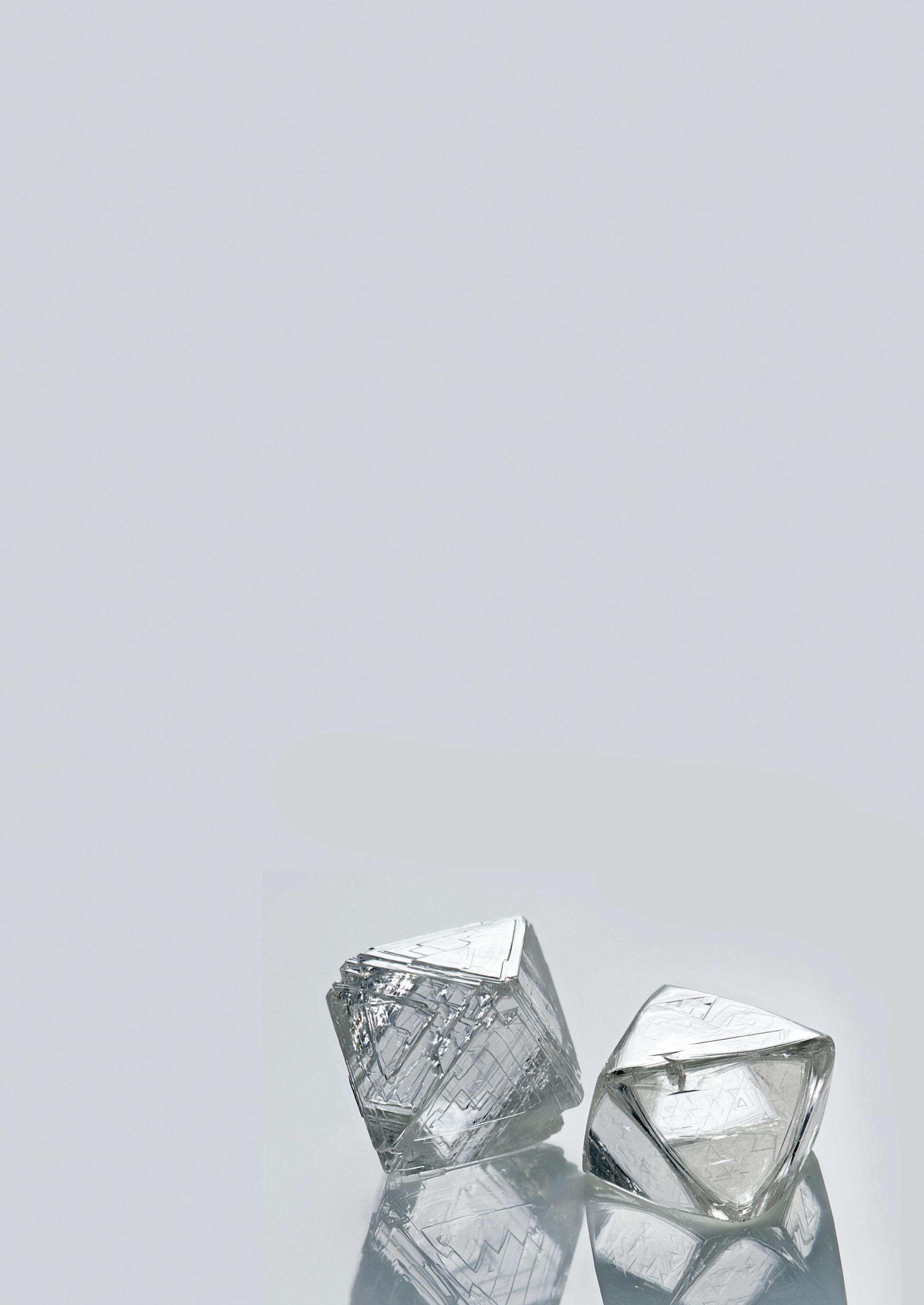
• Supporting facts:
Laboratory-grown diamonds replicate the natural diamond creation process, which requires a massive amount of electricity, mostly from the national grid.
Over 60% of laboratory-grown diamonds are mass-produced in China and India, where 63% and 74% respectively of grid electricity results from coal.
The manufacturing of laboratory-grown diamonds can require temperatures similar to 20% of the temperature of the sun’s surface.
The process of natural diamond formation means that they are inherently rare. They are a finite natural resource.
• Supporting facts:
Formation takes place across the span of millions, sometimes billions, of years and occurs in limited zones of the earth’s mantle at extreme temperatures and pressures.
Global natural diamond recovery peaked in 2005 and has decreased by over 30% in the past 16 years.
The annual recovery of 1ct diamonds is equivalent in volume to an exercise ball.
Laboratory-grown diamonds have experienced significant price depreciation in recent years.
• Supporting facts:
From 2016-2023, the average price of a 1,5ct laboratory-grown diamond has decreased by over 74%.
While natural diamond prices have also fluctuated, over the past 35 years, on average, they have risen by 3% per annum.
Ethical sourcing is a priority for the natural diamond industry.
• Supporting facts:
Under the Kimberley Process, mandated by the UN and the World Trade Organisation, the trading of rough
SA JEWELLERY NEWS - SEPTEMBER 2023 24 NATURAL DIAMONDS
The Natural Diamond Council (NDC), the authoritative resource on natural diamonds, has released its 2023 analytical report entitled Diamond Facts: Addressing Myths and Misconceptions About the Diamond Industry. Through this report, the council has set out to address misinformation about both natural diamonds and their synthetic counterparts.
diamonds is strictly regulated to ensure that it is conflict-free.
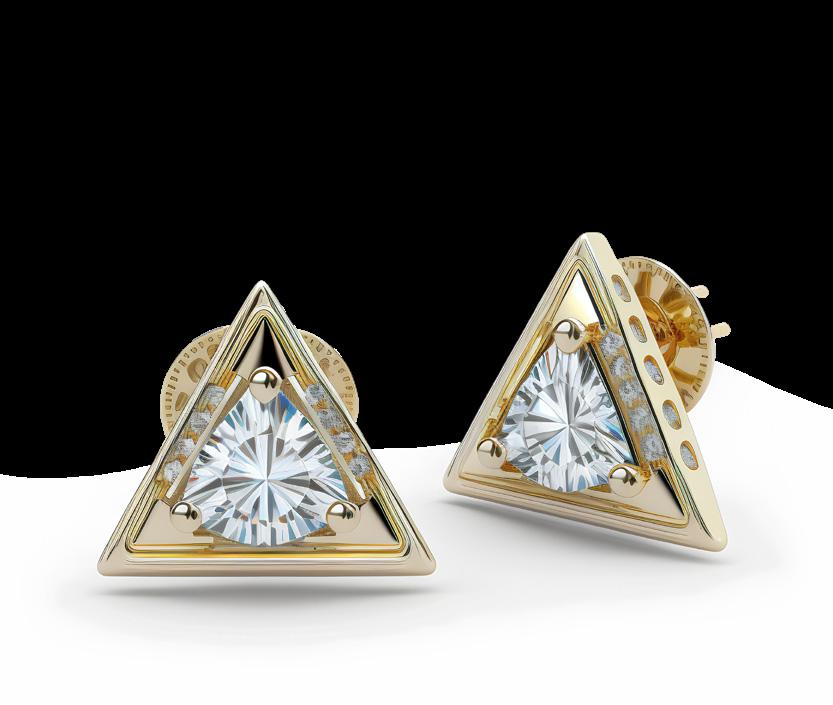

The Responsible Jewellery Council warrants responsible sourcing through third party-audited certifications.
Brands, retailers and jewellers are increasingly implementing ethical sourcing protocols and policies, bringing transparency to their supply chains.
Natural diamonds help protect the biodiversity over an area equivalent to New York City, Chicago, Washington DC and Las Vegas combined. This is close to four times the land used by NDC member companies for natural diamond recovery, globally.
• Supporting facts:
The De Beers Group, a leading diamond company, is partnering with Kelp Blue, exploring kelp’s potential to store carbon, while improving marine health.
The Diamond Route is a network established by the De Beers Group to protect critical wildlife habitats in South Africa and Botswana.
Natural diamonds benefit the countries from which they originate. The natural diamond industry supports the livelihood of 10 million people worldwide.
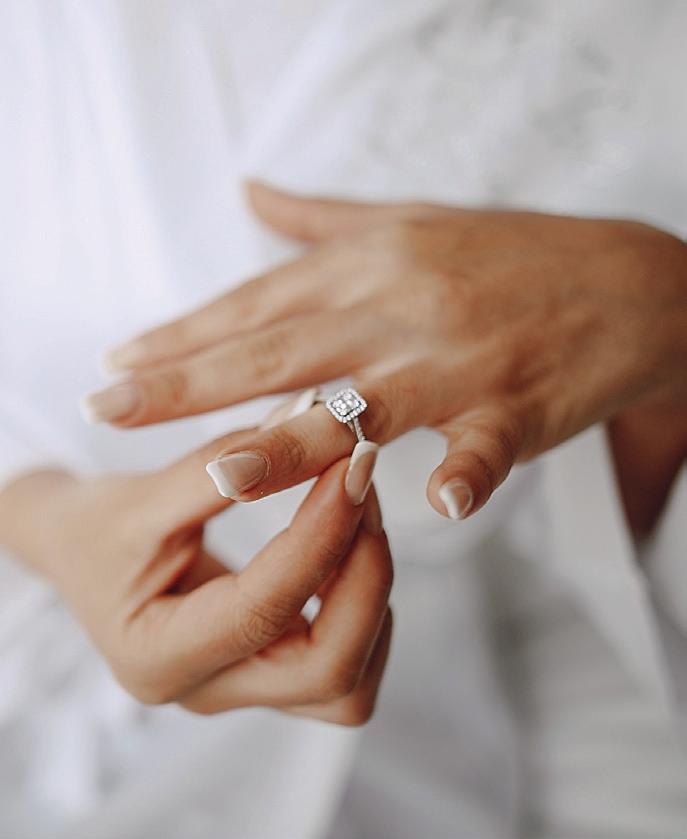
• Supporting facts:
Up to 80% of rough diamond value remains with local communities in the form of local purchasing, employment benefits, social programmes and investment in infrastructure, as well as the taxes, royalties and dividends paid from the industry to respective governments.
For NDC members, 85% of all procurement is local.
In Canada, the natural diamond industry contributes 24% of the total GDP. In the North-West Territories (NWT), US$17 billion went towards NWT businesses and US$7,5 billion went towards indigenously-owned NWT businesses. “The findings of this analysis have been

derived from a thorough review of a wide range of secondary research conducted by globally respected third-party organisations,” says the NDC. “Industry experts and independent sustainability advisors were also consulted on the topics covered.”
About the Natural Diamond Council
The NDC is a global organisation whose members’ operations span four continents and 10 countries, including SA and Botswana. The council supports the integrity of the natural diamond industry by providing transparency and insight on the progress of this sector and its commitments to further betterment. Its operations support the livelihood of 10 million industry employees and their families around the world. The NDC inspires and informs consumers about the world of natural diamonds through its Only Natural Diamonds platform. The platform is the authoritative publisher on all things related to natural diamonds including celebrities and pop culture, epic diamonds and jewellery trends, as well as diamond-buying guides for engagements and weddings.
NATURAL DIAMONDS SA JEWELLERY NEWS - SEPTEMBER 2023 25
In an age when consumers are more inquisitive and enlightened than ever, they want to know about the values and responsible business practices from companies and, indeed, the wider industry from which they’re purchasing.
A jewellery store’s pearl counter is a fascinating place. These enchanting gems have represented beauty and perfection ever since man discovered them in ancient times. A retailer who knows the types of natural and cultured pearls that are available and the factors that determine their value is an invaluable resource.
Forever fashionable
PEARLS HAVE BEEN THE SUBJECT OF COUNTless tales of history, beauty, myth and elegance.

The Arabian Gulf was the world’s first source of natural pearls and remained so for centuries. Natural pearls from the Gulf are notable for their transparent and high-lustre nacre. Together with pearls from the Red Sea and the Strait of Mannar, they have been referred to as “oriental pearls” and are highly valued.
Part of a pearl’s appeal is its organic origins: it comes from a living animal, a mollusc. Because pearls are slightly porous, they warm up against the skin as they are worn.
The exciting array of pearl choices available today can be overwhelming for customers. When you combine the variety of colours, sizes and shapes with metals and other gemstones in rings, necklaces and earrings, the possible combinations are practically endless.
Is your client looking for natural or cultured pearls? Do they know what to look for in terms of size, lustre and colour? What price range are they interested in? How are some pearls treated to enhance their appearance? It is good to know the answers to these questions when selling pearl jewellery.
A retailer who knows the
types of natural and cultured pearls that are available and the factors that determine their value will be an invaluable resource to clients as they explore pearls.
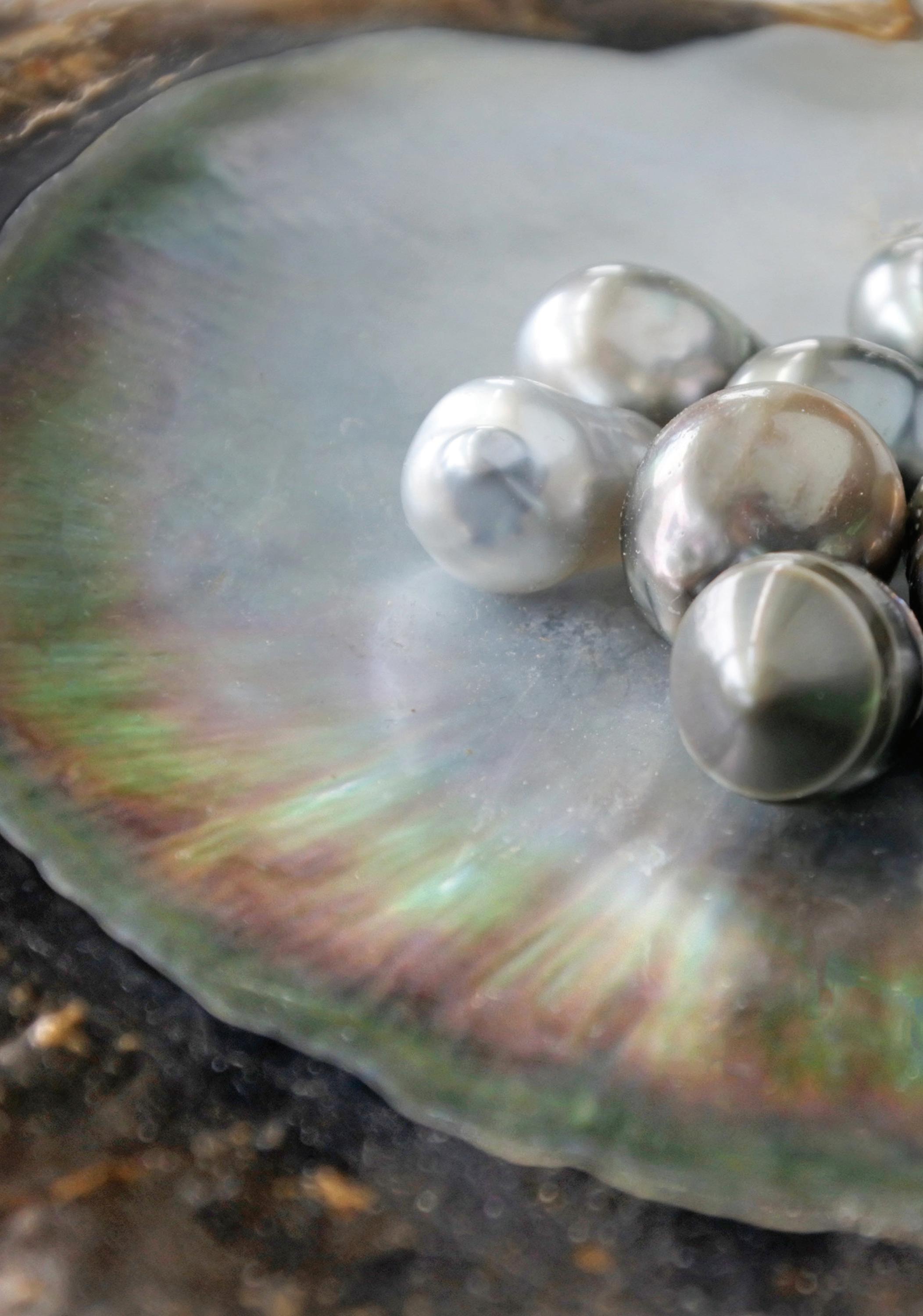
Pearls are natural or cultured and grow in molluscs that can live in either saltwater or fresh water. They are made up of
layers of calcium carbonate, most popularly in the form of nacre, a natural substance produced by pearl oysters that coats the inside of the animal’s shell. This beautiful, lustrous nacre is the very essence of a pearl.
Natural saltwater pearls
Natural pearls are extremely rare. The Arabian
26
GUIDE
PEARL
SA JEWELLERY NEWS - SEPTEMBER 2023
A pearl’s colour is a combination of its dominant body colour, overtone, the subtle colours that seem to come from within the pearl and orient, the “play of colour” you see when the pearl moves.
Gulf is the most important source for natural pearls – 70-80% of all pearls came from there until the 1950s. The island of Bahrain was a centre for trade with north-west India and what is now the modern Middle East. A 4 000-year-old pearl was uncovered in 1989 and excavations at the ancient Bahrain’s Dilmun settlement have confirmed that pearl fishing has been going on for at least 3 000 years.
Natural saltwater pearls from the Arabian Gulf come from the Pinctada radiata and Pinctada margaritifera mollusc species. Persian Gulf pearls range in colour from white to dark cream and tend to be more yellow than those from the Red Sea and Strait of Mannar, whose characteristic colours are very light yellow, cream and very light pink. The Red Sea also produces some pearls in darker hues that range from intense pink to light to dark violet.
Natural saltwater pearls are also found occasionally in Baja California, Venezuela, Myanmar, China, Japan, India, French Polynesia, Australia and Africa – the same regions that have cultured pearl industries.

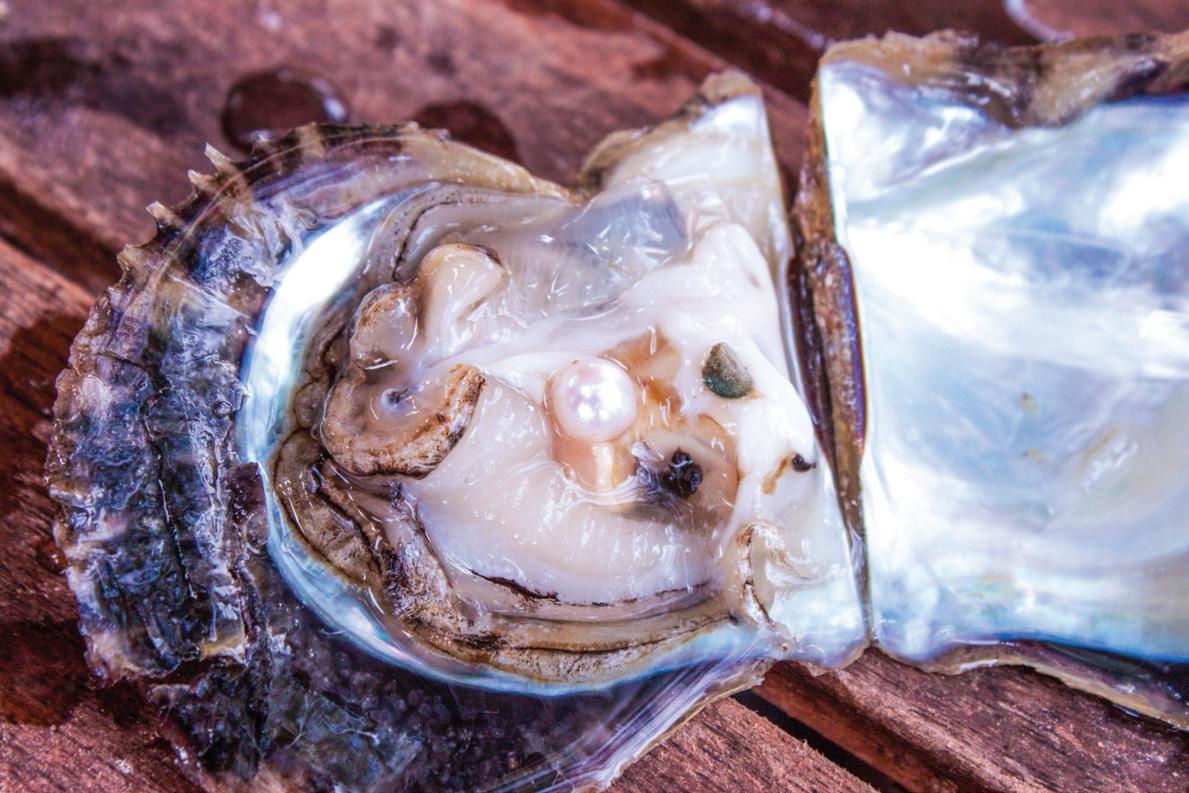
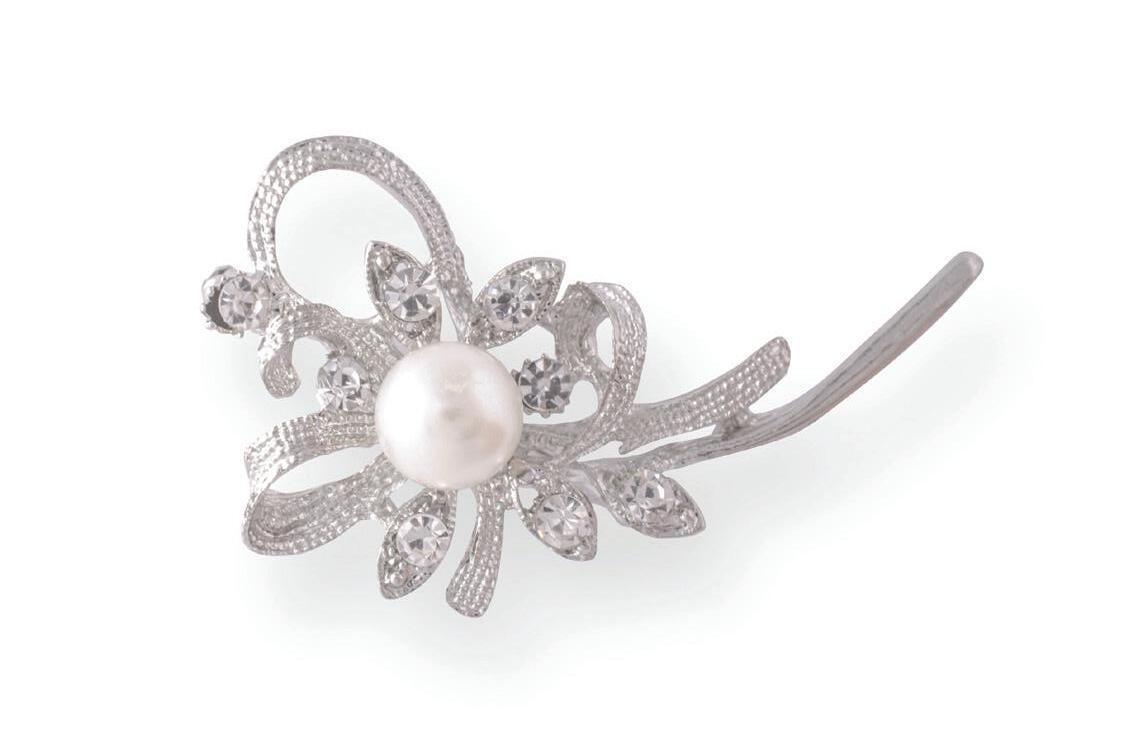

Saltwater cultured pearls
If you ask someone to describe an akoya pearl, they will most likely describe a white, round, lustrous gem cultured in Japan and China

in Pinctada fucata (martensii). Most akoya cultured pearls are white or cream and some have hints of rosé (pink) or green. The akoya oyster is relatively small, so it does not usually produce a cultured pearl larger than 9 mm. Natural pearls from Pinctada fucata (matensii) are extremely rare.
Tahitian cultured pearls have only been on the market since the 1970s and come in colours including eggplant purple, peacock green, metallic grey and greyish-blue. The mollusc that produces them (Pinctada margaritifera) is native to French Polynesia and is farmed there and in the Cook Islands, Fiji, Australia and New Zealand.
South Sea cultured pearls come from one of the world’s largest pearl oysters (Pinctada maxima), which produces cultured pearls that can measure 15 mm or larger. They are farmed in Australia, Burma, the Philippines and Indonesia. While South Sea cultured pearls occur in other colours, silver, white and yellow (sometimes referred to as “golden”) are the most common.
Fresh water cultured pearls
Cultured pearl farmers in China produce the overwhelming majority of cultured fresh water pearls. These cultured pearls vary widely in colour and are generally more affordable than saltwater cultured pearls. Sizes are comparable with akoya cultured pearls, with a range of 2-13 mm, although larger sizes are now available. Fascinating new cultured pearls from fire balls to soufflés have been emerging from China in a dramatic array of colours.
The Gemological Institute of America (GIA) created a pearl description system, in order to evaluate the quality of pearls. The institute’s seven value factors include size, shape, colour, lustre, surface and nacre. Be sure to go through these with customers.
Size: As with other gems, a larger pearl (measured in millimetres) is typically more valuable. The larger the pearl, the rarer and
SA JEWELLERY NEWS - SEPTEMBER 2023 27 PEARL GUIDE
costlier it tends to be. However, fine-quality pearls can be small and low-quality pearls can be large, so a pearl’s ultimate worth depends on how it combines the complete mix of value factors.
Shape: While round is the most familiar shape, pearls come in a parade of forms (round, near-round, oval, button, drop, semibaroque and baroque). No matter what its shape, if a pearl is symmetrical, it will be more valuable than one that is irregular.
Colour: A pearl’s colour is a combination of its dominant body colour, overtone, the subtle colours that seem to come from within the pearl and orient, the “play of colour” you see when the pearl moves. Cultured pearls display a broad palette of subtle hues, ranging from warm (yellow, orange and pink) to cool (blue, green and violet).
Lustre: The intensity of light reflected from the surface of the pearl, or just below it, is its lustre and contributes most to the beauty of a pearl. The effect is an inner glow from the heart of the gem. A pearl with excellent lustre will look bright and shiny, while one with poor lustre is dull and far less valuable. Fine akoyas tend to display a bright, mirror-like gloss. Other pearls tend to feature a softer, satiny lustre.
Surface: A completely clean pearl is a rare treasure. Since rarity influences value, the prices of such pearls run extremely high. The number, nature and location of surface characteristics (abrasions, bumps, chips, cracks, etc) can affect the value of any pearl. Numerous or severe surface irregularities – such as chips or gaps – can threaten the durability of the pearl and cause it to break or peel, considerably lowering its quality and value. If a surface characteristic is minor and located near a pearl’s drill hole, where it is less noticeable, it will detract less from the pearl’s appearance and ultimate value.
Other value factors can minimise the effect of surface characteristics on a pearl’s
Although the GIA is most recognised as a foremost authority in diamond grading, it has been a leader in the identification and classification of natural and cultured pearls since 1949. The GIA has contributed to the revision of the FTC’s pearl guidelines for the jewellery industry and is responsible for working with major pearl companies globally to develop comprehensive standards for describing pearls.
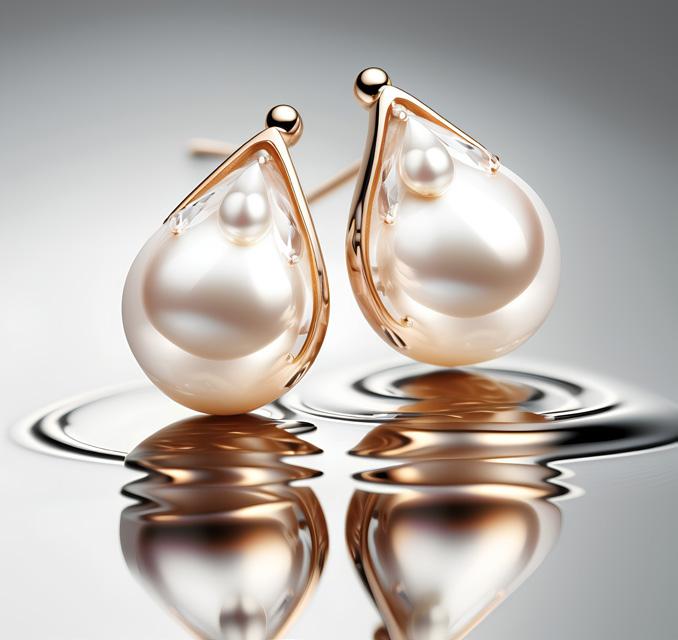
The institute also offers an online pearl course in its gemmology eLearning curriculum that can be taken from anywhere. It is a fascinating look at the world of pearls, including their origin, how they get to market and the GIA’s seven value factors used to describe their quality.
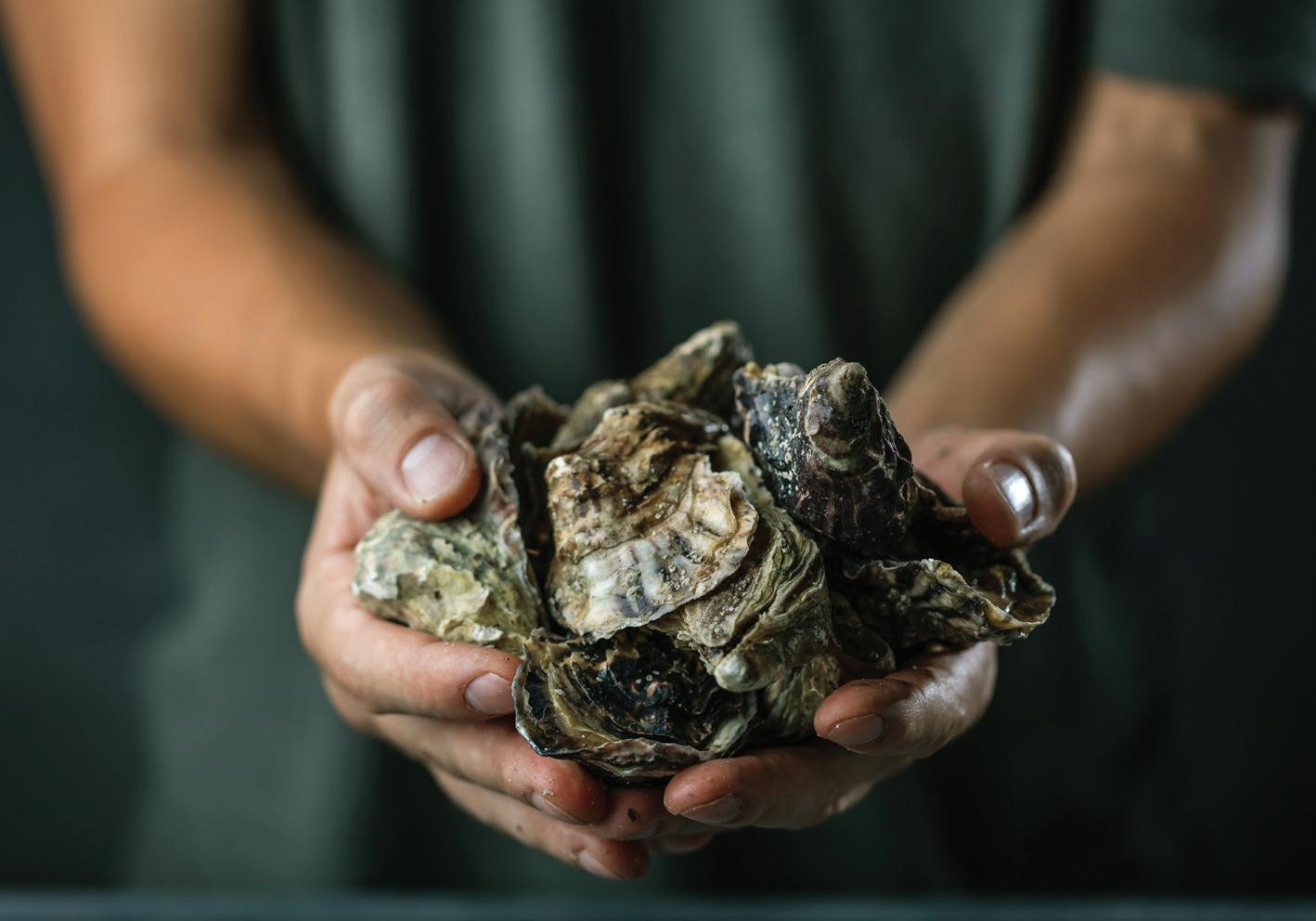
worth. If the pearl is large and highly lustrous, for example, these pluses can outweigh a slight surface characteristic or two. In fact, excellent lustre makes some surface characteristics less noticeable.
Nacre: Nacre is the very essence of the pearl itself and nacre thickness affects its value. Quality cultured pearls have ample thickness to allow the pearl to display its beauty.
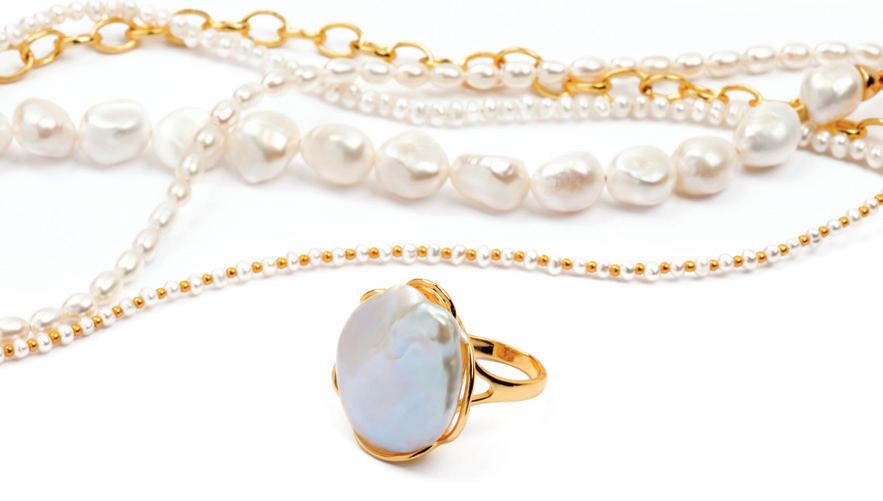
Matching: The uniformity of the appearance of pearls in strands and multi-pearl pieces is called matching.

SA JEWELLERY NEWS - SEPTEMBER 2023 28 PEARL GUIDE
– Information courtesy of the GIA
Monthly educational insert


Gems on canvas: Pigments historically sourced from gem materials
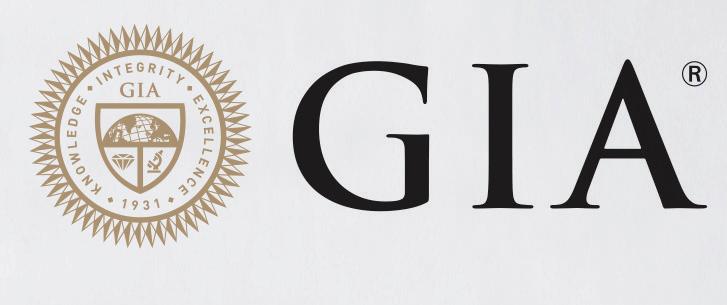







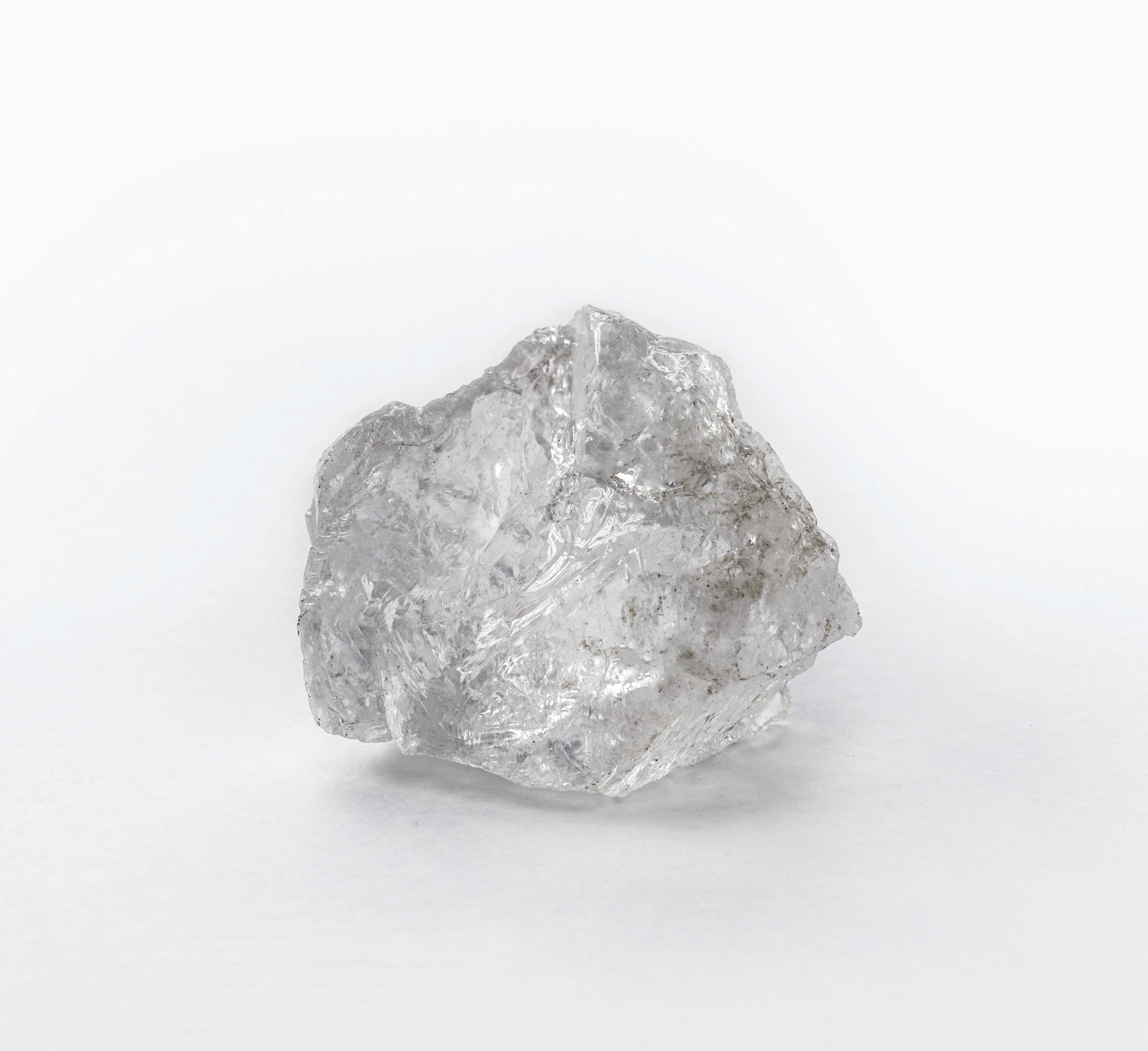
Britni LeCroy




BY FEATURE ARTICLE GEMS & GEMOLOGY
SPONSORED
The accessory minerals, especially pyrite, would darken and discolor ultramarine’s brilliant blue if not extracted. Cennini documented the extraction process in The Craftsman’s Handbook, and his method is still used today. It involves repeatedly crushing and sieving the highest-quality lapis. The powder is then worked into a dough with various waxes and kneaded under a liquid solution of lye. The fine blue particles slowly precipitate out of the dough and into the solution, while heavier materials such as pyrite are retained. Once the liquid has evaporated, one is left with ultramarine. The process can take up to several months – another factor influencing its high cost. The ensuing centuries saw ultramarine blue ascend to unequaled prestige in Europe, and works featuring the color went on to achieve everlasting fame (figures 13 and 14).
While ultramarine most often appeared in Christian art, it was sometimes used to create a picturesque sky on canvas. The sky’s features mimicked those of lapis lazuli, whose scintillating pyrite and globules of calcite in a sea of deep blue resemble stars and clouds. This hallmark is seen in Bacchus and Ariadne (figure 15), one of Titian’s most famous works, which also incorporates azurite, malachite, and cinnabar.

For a color as fabled as ultramarine, it is only fitting that its decline would also be chronicled. In 1824, France’s Society for the Encouragement of National Industry announced a contest for synthesizing artificial ultramarine, with a prize of 6,000 francs (Plesters, 1993). Four years later, a process was discovered and Jean Baptiste Guimet was named the winner. This synthetic, often referred to as “French ultramarine,” sold for approximately one-tenth the cost of the natural material. In the mid-nineteenth century, it was manufactured throughout Europe and quickly outsold the natural variant, as it still does today.
BONE AND IVORY
For centuries, bone and ivory have been used to create black pigments. These materials are complex, consisting of both organic and inorganic compounds. Most recent studies have identified the composition as carbonate hydroxylapatite (Eastaugh et al., 2004). When bone or ivory is heated in the absence of oxygen via a closed crucible, black pigment is produced. The carbon source is primarily the protein collagen (Winter and FitzHugh, 2007), which is incorporated in the matrix of the material.
Bone is one of the oldest known gem materials. Recently, archaeologists discovered a more than 46,000-year-old aboriginal nose ring made of bone at a site in Western Australia, the oldest bone implement found on the continent (Langley et al., 2016). A variety of animal bones have been used
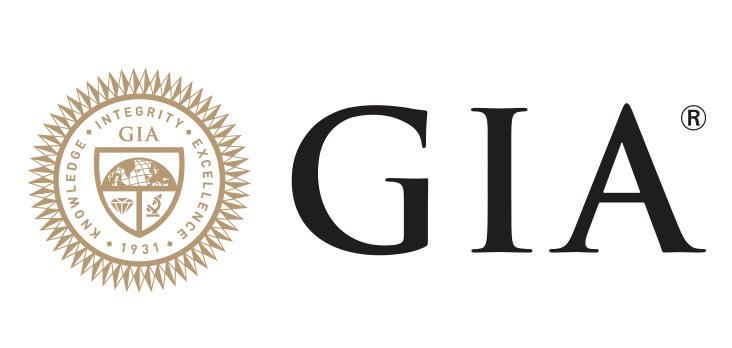
as pigment source material throughout history, including cattle and lamb and possibly even human remains in earlier centuries (Finlay, 2002). Documents from the current largest producer of bone black pigment in the United States, Ebonex Corporation, specify charcoaled cow bone as their source material (Ebonex Corporation Activity Report, 2018).
The Roman naturalist Pliny the Elder credited the development of ivory black to Apelles, the most notable painter of ancient Greece, though none of his works have survived (Pliny, 77 CE). As the name implies, genuine ivory black was created from ivory wastes. These wastes were in relative abundance from the fifteenth to nineteenth centuries, as ivory was widely traded throughout many parts of the world. It was fashioned into jewelry, tools, weapons, containers, musical instruments, billiard balls, and other novelties (Smithsonian National Museum of African Art, 2019). Ivory black pigment was manufactured until the end of World War II (Kremer Pigmente, 1985). Due to species protection measures, all ivory black sold on the market today must be sourced solely from old stock (Kremer Pigmente, 1985) or be composed of high-grade bone black (Winter and FitzHugh, 2007). Ivory black is reportedly more intensely black than bone black, but this is arguably due to the pigment simply being more carefully
ISSUE 12 ISSUE 8
Figure 13. This blue drapery around the arms of the Virgin Mary is perhaps the most vivid example of ultramarine in classical art, in Giovanni Battista Salvi da Sassoferrato’s The Virgin in Prayer (1640–1650, oil on canvas). Photo courtesy of the National Gallery, London.


AN INTRODUCTION TO GEMSTONES ISSUE 8
Figure 14. Girl with a Pearl Earring (ca. 1665, oil on canvas), Johannes Vermeer’s most celebrated painting, depicts a girl wearing an ultramarine turban and an exceptionally large pearl earring. Pearl was the most valuable of gems at the time. Other pigments include cinnabar (lips) and bone black (background and the turban’s shadows).
Photo courtesy of the Mauritshuis, The Hague.
made, since ivory has always been more scarce than bone (Winter and FitzHugh, 2007). Ivory was also used for paint palettes in previous centuries (figure 16).
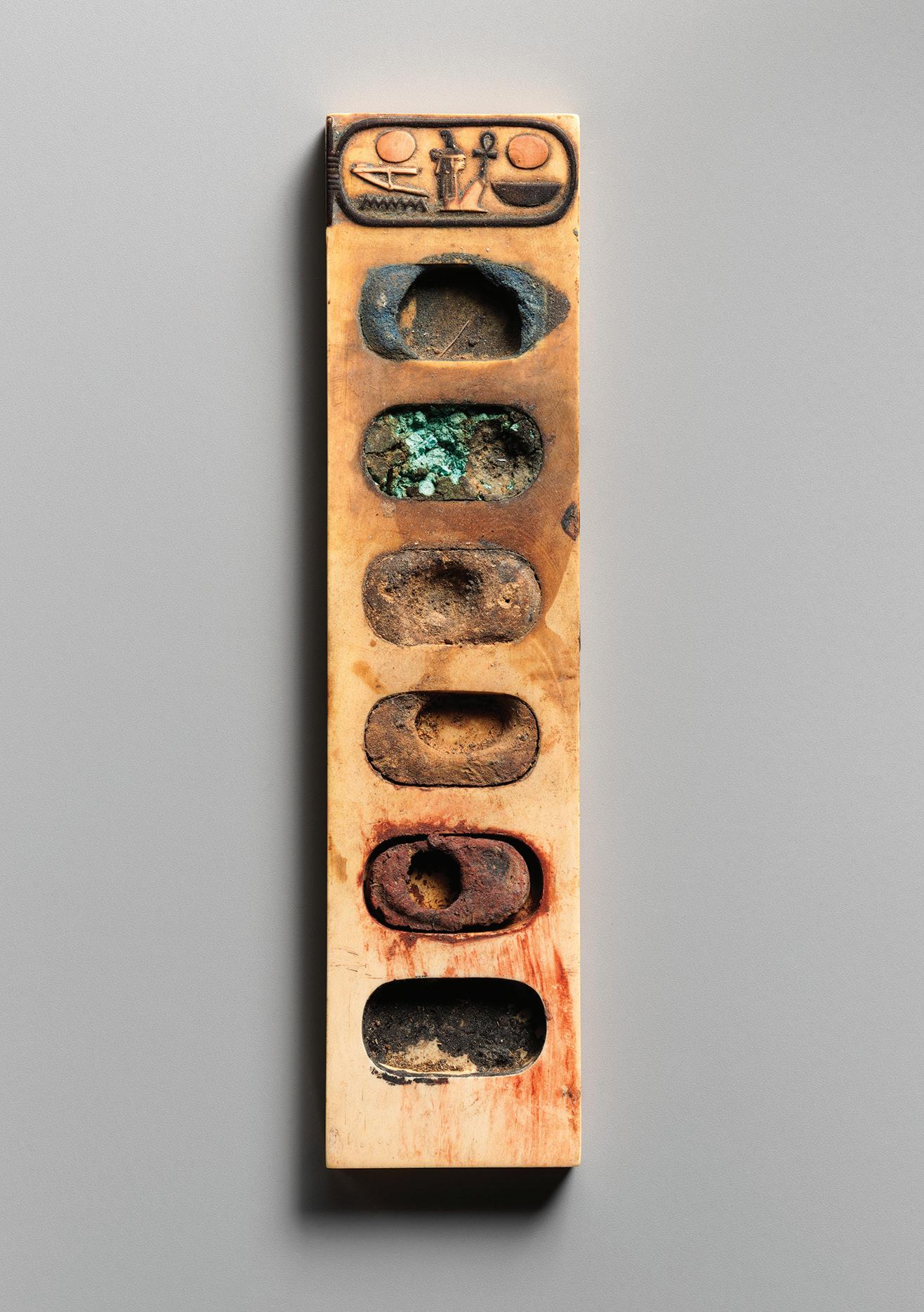
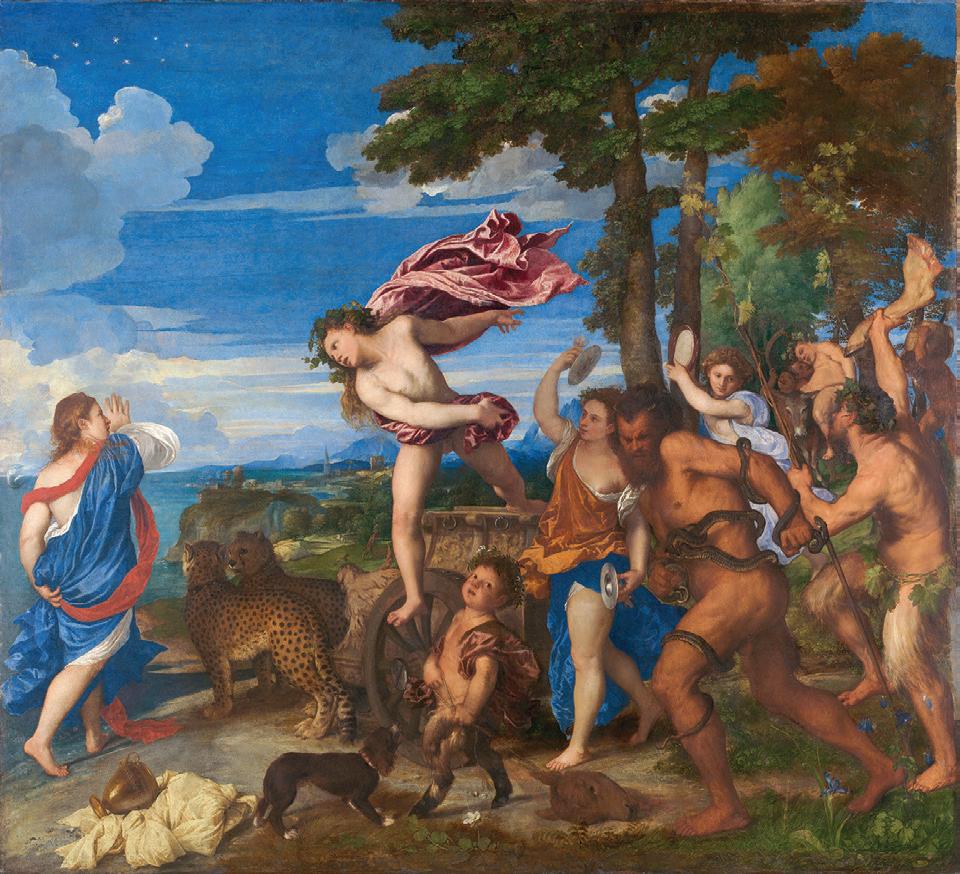

Bone black has been found in prehistoric, Egyptian, Greek, Roman, medieval, and Renaissance art (Coles, 2018). Optical microscopy revealed its use on gravestones in ancient Greece from the third to second century (Winter and FitzHugh, 2007). Ivory and bone black have been scientifically identified in western European art dating from at least the fifteenth century into the twentieth century, including works by Tintoretto, Rubens, Rembrandt, Manet, and Renoir (Winter and FitzHugh, 2007). An extensive analysis of works in the Museum of Pablo Picasso in Paris concluded that 62 of his paintings contained either ivory or bone black (Winter and FitzHugh, 2007). Modern artist Kazimir Malevich, who founded the Suprematism movement and (along with Picasso) helped propel and popularize abstract art, featured ivory black in his signature geometric style (figure 17).

ISSUE 8
Figure 17. Kazimir Malevich’s Painterly Realism of a Football Player – Color Masses in the 4th Dimension (1915, oil on canvas) features ivory black, artificial ultramarine blue, and vermilion red. The work is painted in the Suprematist style, a movement focused on geometric shapes and a limited range of colors. Photo courtesy of the Art Institute of Chicago.
Figure 15. A meeting of Greek mythological figures is imagined in Titian’s Bacchus and Ariadne (1523, oil on canvas). Ariadne (far left) wears a robe in ultramarine and a red vermilion sash. Ultramarine is also featured in the sky and distant landscape. Malachite is used in the green foliage to the right of Bacchus. The sea and greener areas of the distant landscape are composed of azurite. Photo courtesy of the National Gallery, London.
Figure 16. A single piece of carved ivory, ca. 1390–1352 BCE, holds six pigment cakes and is inscribed with the name “Amenhotep III,” the ninth pharaoh of the Eighteenth Dynasty of Egypt. Photo courtesy of the Metropolitan Museum of Art.
The process for creating white pigment from bone can be duplicated in the presence of oxygen. Essentially the ash that remains after all organic material has been destroyed, bone white was first used in the Neolithic period (Coles, 2018), primarily as a paper preparation in metalpoint drawing. In this technique, a soft metal writing utensil (silver, gold, or copper) grazes across a paper that has been primed, usually with bone white pigment mixed with rabbit skin glue. Bone ash possesses a slightly abrasive quality, allowing the metal to exfoliate and adhere to the primed surface, similar to a modern graphite pencil against paper. Graphite eventually became more popular because it was easier to use, causing metalpoint to fade into obscurity. While bone ash has little use as a modern-day pigment, bone black is still sold at art stores.

CINNABAR
Cinnabar (HgS) is an intensely colored mercury sulphide mineral and the principal ore of mercury. It is not abundant in the earth’s crust, and only a handful of important deposits occur in Europe, the Middle East, and Asia. It is usually found with a massive habit, though well-formed, gem-quality single crystals are occasionally discovered (figure 2). Its hue is a strikingly vivid red with a strong orange component, unlike the comparatively dark and common red ochre. In its simplest form, cinnabar’s color is derived from simply crushing and grinding the mineral in a stone mortar. A synthetic form, commonly referred to as vermilion, has existed for several centuries and is obtained from synthesizing mercury and sulphur. After ultramarine, cinnabar was historically the most valuable and prestigious pigment in
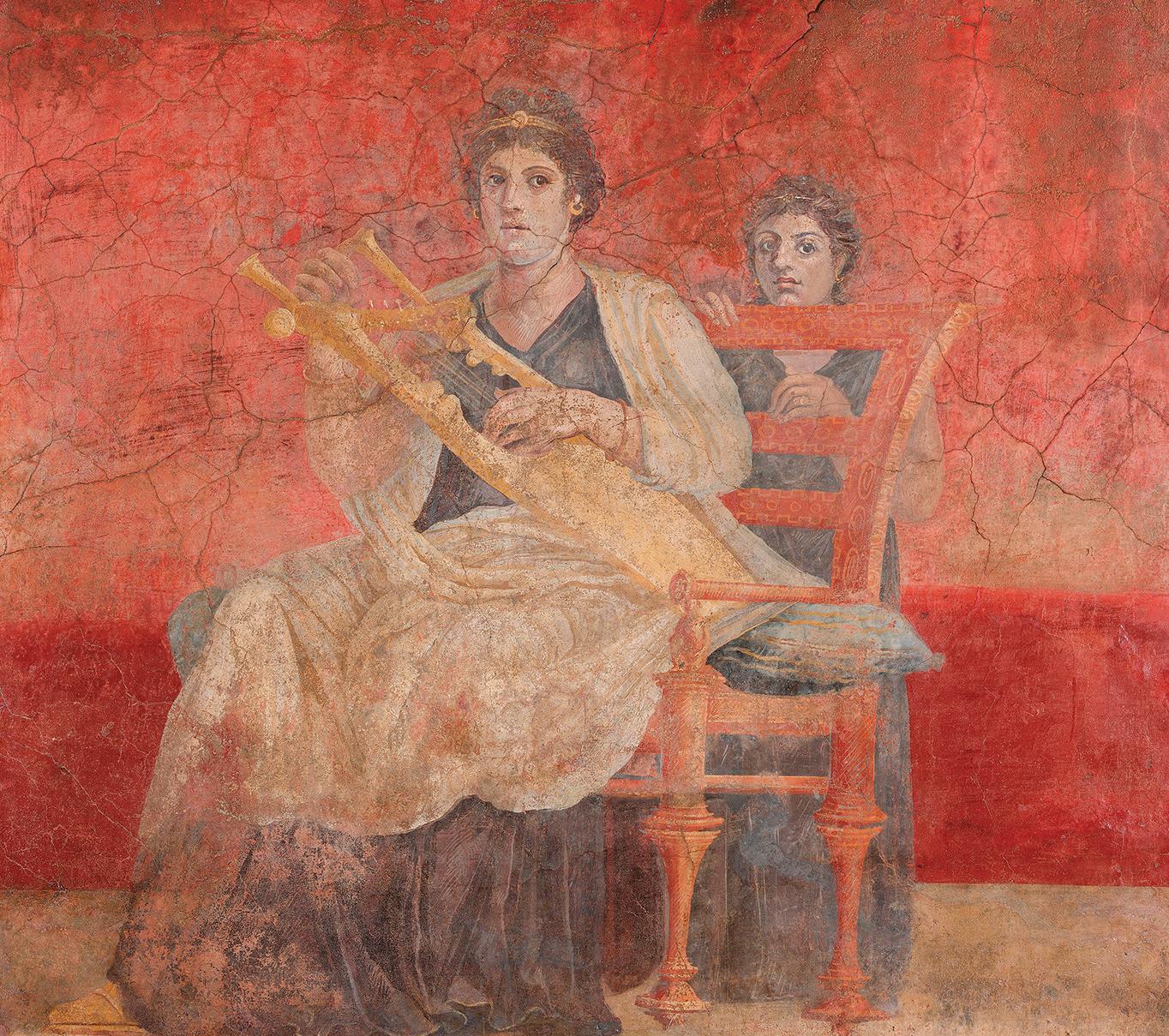
ISSUE 8
Figure 18. This Roman fresco features what is believed to be a Macedonian queen or princess (seated) playing a gilded kithara beside her daughter or younger sister. Both are adorned with gold bracelets, earrings, and headbands with a central medallion, suggesting royalty. The background features a profuse display of expensive cinnabar pigment. Wall painting from Room H of the Villa of P. Fannius Synistor at Boscoreale, ca. 50–40 BCE. Photo courtesy of the Metropolitan Museum of Art.
the trade, with Spanish and Chinese sources being the most significant (Siddall, 2018).
One of the earliest uses of cinnabar as pigment was in the Middle East in Çatalhöyük, an early human settlement from 7100 BCE to 5700 BCE, where it has been found in paintings and burial contexts (Çamurcuoğlu, 2015). Of the more than 800 Dead Sea Scrolls discovered in Israel and considered the world’s earliest copies of biblical books, four fragments have been shown to contain red ink composed of cinnabar (Nir-El and Broshi, 1996). Ancient Romans indulged in the use of the pigment in wall paintings, assigning it great importance and sacred associations (Spindler, 2018) (figure 18). Pure cinnabar pigment could turn black when exposed to light, prompting the Roman scholars Vitruvius and Pliny the Elder to use a coating of oil or wax in their work (Eastaugh et al., 2004). Recent studies have shown that this discoloration is actually associated with cinnabar that has either been exposed to halogen or contains traces of chlorine (Eastaugh et al., 2004).
Cinnabar also experienced a widespread cultural diffusion in China. During the Shang and Zhou dynasties (1600–256 BCE), it was used for strewing of remains in grave burials, presumably to preserve the dead (Gettens et al., 1993). Treasured in Chinese alchemy, cinnabar was an important ingredient in recipes for preparing the philosopher’s stone (a mythical substance believed
to turn common metals into gold) and medieval pharmaceutical elixirs (Gettens et al., 1993). Traditional Chinese medicine prescribed powdered cinnabar to treat a variety of medical conditions including skin infections and intestinal disorders (Liu et al., 2008). Many of these cinnabar remedies are still used in Chinese medicine.

Cinnabar pigment was used considerably in Chinese lacquerware – a material that dates to 7000 BCE and is still produced today (Siddall, 2018). Lacquer is a resin primarily sourced from the tree species Toxicodendron vernicifluum. When exposed to oxygen and dried, it transforms into a natural plastic that is resistant to heat and water. Lacquerware is created from a base of turned wood with 30 to 200 layers of lacquer applied (Metropolitan Museum of Art, 2009). Once hardened, lacquer can be elaborately carved into geometric motifs or extraordinary representations of earth, water, or sky (figure 19). These items were most often colored red and became known as “cinnabar lacquer.”
Vermilion is an artificially created cinnabar that can be produced through either a wet or dry process. The dry process may have been invented in China before spreading west through Arab traders, with the first documentation of this process originating in the eighth century (Gettens et al., 1993). Medieval recipes for dry-process vermilion involve combining mercury with
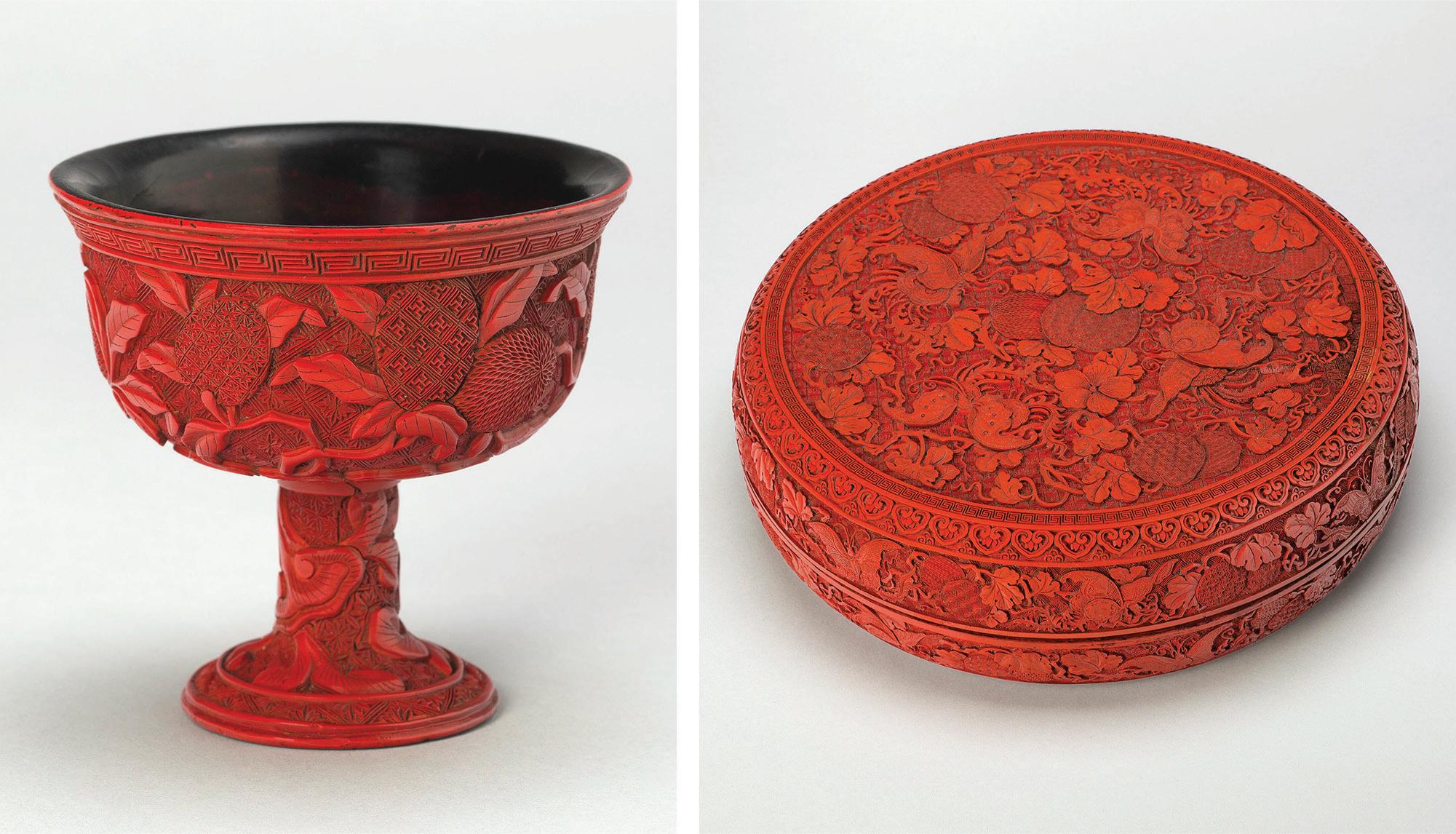
ISSUE 8
Figure 19. Objects carved from cinnabar lacquer. Left: A stem cup with lychee and vines, from late-fifteenth/early-sixteenth century China. Right: A covered box with butterflies, gourds, and scrolling vines, from eighteenth-century China. Photos courtesy of the Art Institute of Chicago.
molten sulphur and heating until the compound sublimes and condenses. The final product is a red crystalline modification of mercury sulphide. It is then treated with an alkali solution to remove free sulphur, washed, and ground under water in preparation as pigment. The wet process, discovered in the seventeenth century, calls for the combination of mercury sulphur and a heated solution of ammonium or potassium sulphur. This process was more cost efficient and became the favored method of vermilion production in the West. Obscure in the eighth century, vermilion had become mainstream by the fourteenth century (Gettens et al., 1993). Unlike malachite and azurite, cinnabar and vermilion are strong light absorbers whose colors are preserved at all particle sizes.
Vermilion was an important color in illuminated manuscripts as it was used to paint the rubricae (text written/printed in red ink for emphasis) and imagery. It became a staple from the fourteenth century onward (Gettens et al., 1993), appearing in the works of Vermeer (figure 14), Titian (figure 15), and Degas (figure 20). In the early nineteenth century, cadmium red was introduced and began to take the place of vermilion (Melo and Miguel, 2010), which had already surpassed cinnabar in production and usage. Cadmium pigments have since become the standard for brilliant, lightfast, and weather-resistant yellow, red, and orange paints.
CONCLUSIONS
Many historical pigments led double lives as gem materials, and both commodities have retained value over time. While the beauty of gems is appreciated by society, art viewers are often unaware that acclaimed paintings from the prehistoric
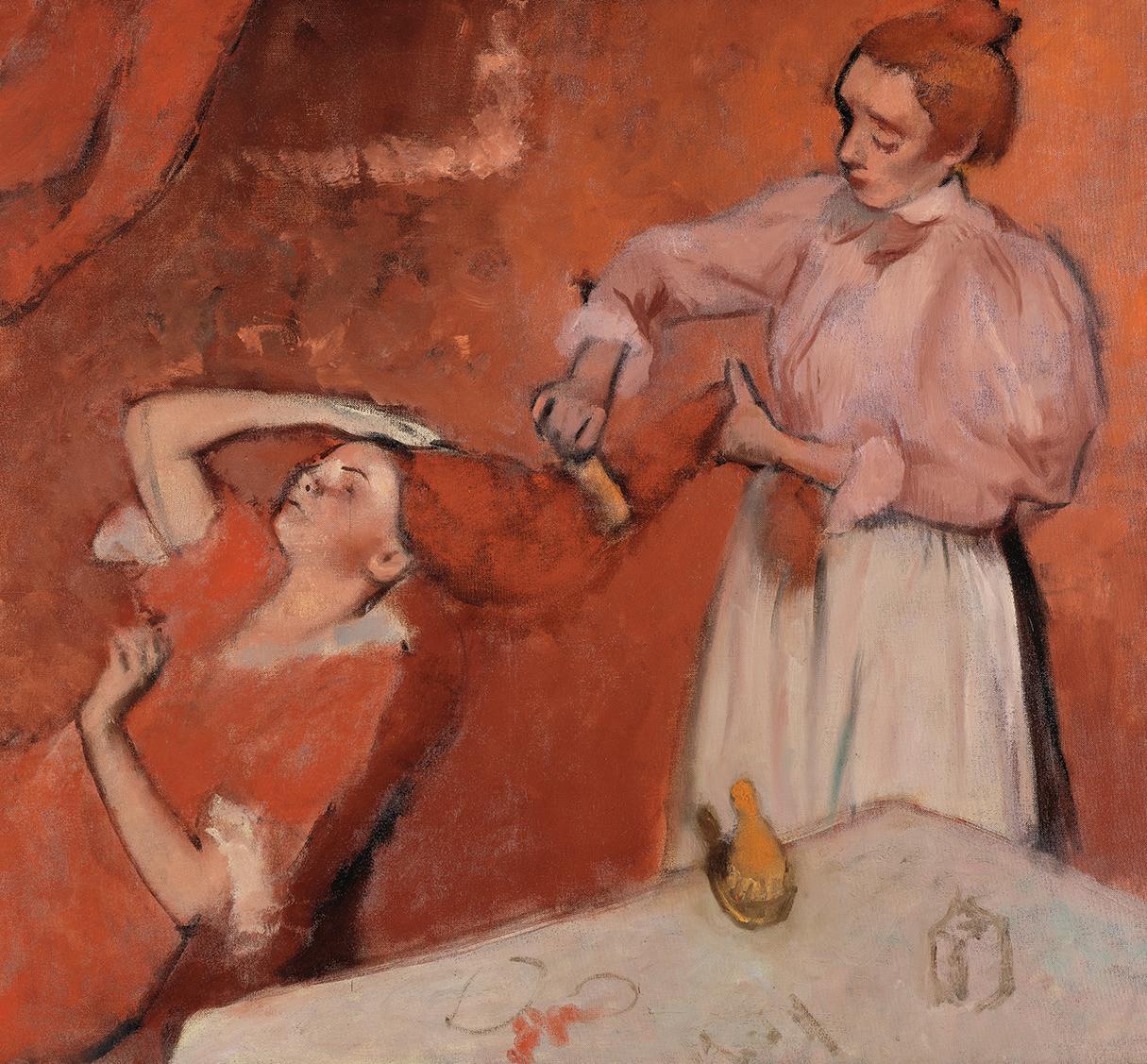
to postmodern eras feature colors obtained from ornamental materials. Pigments and gems are further intertwined by their ability to reveal anthropological information about humankind’s comprehension of the natural world. With a better understanding of chemistry, the synthesis of both pigments and gemstones inevitably followed. The availability of a variety of gem materials shaped the development of pigments, which in turn shaped the history of art. As art is merely a psychological reflection of and reaction to our environment, the conversation of art has contributed to the shaping of humankind itself.
ABOUT THE AUTHORS
Britni LeCroy is a staff gemologist at GIA in Carlsbad, California

ACKNOWLEDGMENTS
The author is grateful to GIA’s Nathan Renfro for advising on this project. Many thanks to colleagues from GIA’s Richard T. Liddicoat Library: Judy Colbert, for her expertise on image use and copyright; Augustus Pritchett, for help sourcing books and academic articles; and Robert Weldon, for providing an original photo. The author is also grateful for the support of McKenzie Santimer from the GIA Museum. Special thanks to these museums for images featured in this article: the Mauritshuis, the National Gallery of Art, the J. Paul Getty Museum, the Metropolitan Museum of Art, and the Art Institute of Chicago. Gary Bowersox and Renishaw plc are thanked for permission to use their images. All pigments pictured in this article are from Sinopia Pigments.
ISSUE 8
Figure 20. Combing the Hair (La Coiffure) by Edgar Degas (1896, oil on canvas) is a near-monochromatic celebration of red, showcasing vermilion, red ochre, and red lead pigments. Photo courtesy of the National Gallery, London.
De Beers’ Venetia expansion yields first diamonds
Diversified miner Anglo American’s diamond mining subsidiary, the De Beers Group, embarked on the Venetia mine underground expansion in 2012, with the US$2,3 billion project being the biggest single investment in South Africa’s diamond mining industry in decades.
THE DE BEERS GROUP HAS CELEBRATED A KEY milestone with the delivery of first production from underground operations at its Venetia Mine in Limpopo. The overall construction of the underground mine is now 70% complete, with construction and production ramp-up continuing over the next few years.

Venetia Mine, SA’s leading diamond mine, ceased open-pit mining operations in December 2022 after 30 years of production from the Tier 1 asset. De Beers embarked on the US$2,3 billion underground expansion in 2012 in what represents the biggest single investment in the country’s diamond mining industry in decades. The highly mechanised underground operation will deliver up to seven million tons of kimberlite ore per year to produce 4 million carats of diamonds annually.
“The investment in taking the worldclass Venetia Mine underground enhances the De Beers Group’s global production for the long term and is an indication of our
commitment to SA,” says Moses Madondo, MD of De Beers Group Managed Operations. “Our incredible team of employees and contracting partners have pulled together fantastically to achieve this major milestone of first production from the underground operation. We look forward to seeing this high-performing team continue the good work as we ramp up production over the next few years, bringing profound benefits to our workforce, our host communities, commercial partners and SA as a whole.”
The underground project currently employs 4 300 people, mostly from the host communities of Musina and Blouberg Municipalities. De Beers commissioned a US$10,5 million training centre in June 2021 as part of its operational readiness framework to enhance the transformation of people, processes and systems for the successful transition from open-pit to underground mining. To date, a total of 180 employees
have successfully transitioned to underground operations without any job losses for Venetia Mine’s permanent employees.
The De Beers Group recovers diamonds from four countries: SA, Botswana, Canada and Namibia.
In SA, De Beers Consolidated Mines – a joint venture with Ponahalo Holdings –recovers diamonds from Venetia Mine. In Botswana, via a 50:50 joint venture with the GRB – known as Debswana – the company recovers diamonds from four mines, including Jwaneng, one of the world’s richest diamond mines. In Canada, the De Beers Group is the majority shareholder and operator of Gahcho Kué mine in the North-West Territories, which began commercial production in 2017. In Namibia, the De Beers Group works in a 50:50 partnership with the country’s government through Namdeb (land-based diamond recovery) and Debmarine Namibia (offshore diamond recovery).
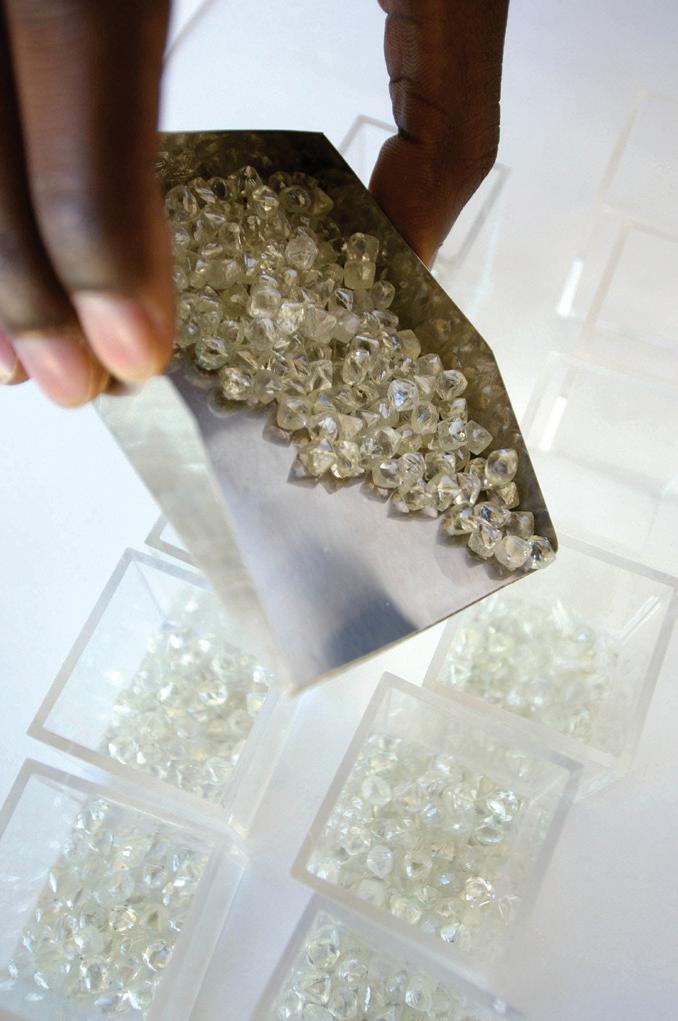
SA JEWELLERY NEWS - SEPTEMBER 2023 37 DIAMOND
MINING
FOLLOWING THE RESUMPTION OF GLOBAL flights and travel, the way is again open to visit this comprehensive exhibition of the assembled watch industry makers from around the world.
Organised by the Hong Kong Trade Development Council (HKTDC), together with the Salon de TE, the Hong Kong Watch & Clock Fair will be held at the Hong Kong Convention and Exhibition Centre from 5-9 September 2023, which looks out directly onto Hong Kong’s bustling Victoria Harbour.
The fair administration is independent of and free from brand “proprietorial interest”. This means that all and any global brands and exhibitors are welcome here for visitors, thus providing the widest possible variety of products.
The Watch & Clock Design Competition is a stimulating creative initiative in local watch and clock design. Under the theme of “Game Code” for the student group and “The
Hong Kong Watch & Clock Fair makes its return

The Hong Kong Watch & Clock Fair is by far the biggest of the annual horological trade fairs for the release of new models and innovations. It has clearly emerged as the serious destination for the international press, agents, collectors and buyers, writes international reviewer of the Horological Journal in the UK and SA Jewellery News freelance reviewer, Martin Foster.

38 INTERNATIONAL FAIR
SA JEWELLERY NEWS - SEPTEMBER 2023
Beauty of Perspective” for the open group, winners will be announced at the fair and winning pieces will be on display during the fair at Hall 1 Concourse.
There are sub-categories within the fair which reflect the wide scope of this specialised event and the “Pageant of Eternity” displays a variety of high-end finished watches.

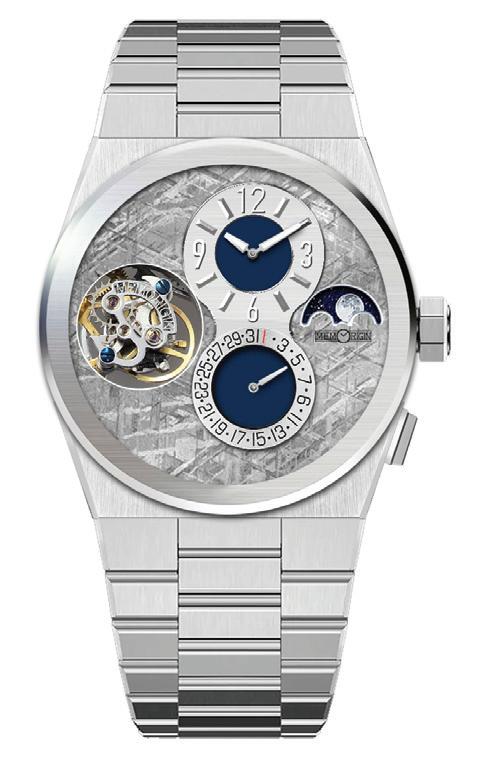
Integrated within the fair are categories of:
• Complete watches
• Clocks
• Machinery and equipment
• OEM smartwatches
• Packaging and display
• Parts, components and accessories
• Trade services.
Under the umbrella of the HKTDC, the Salon de TE is exhibiting pre-owned watch brands and designer collections in categories within its “World Brand Piazza”, which will display limited editions and rare timepieces of prestigious international brands.

“Chic & Trendy” features fashiondriven watch brands, including Arbutus
(USA), Obaku (Denmark), Charles Jourdan (France), JULIUS (Korea), Infantry (Japan) and ROMAGO (Switzerland).
“Craft Treasure” showcases mechanical watches and flawless craftsmanship of jewel-laden watches from brands such as CIGA design (Mainland China), Memorigin (Hong Kong), SAGA (USA) and Peacock Watch (Mainland China).
“Renaissance Moment” gives us classic and elegant watch brands from Europe, such as Coinwatch (Switzerland), NOVE (Switzerland), Pierre Lannier (France) and Gagà MILANO (Italy). Among them, the Swiss Independent Watchmaking Pavilion will bring eight outstanding Swiss-made watch classics.
“Wearable Tech” presents a series of smartwatches with the latest technology, including Microwear, DTNO.1, DO, King-Wear

and MYZI (all Mainland China).
Featured this year is the “Guo Chao” theme and a number of significant Mainland Chinese makers have been invited to showcase watches designed with exquisite craftsmanship, reflecting Chinese culture. Among them, Ma Xushu is an independent master watchmaker and a member of the Académie Horlogère des Créateurs Indépendants. The dial of his representative “Starry Night” watch uses a pointer with a telescopic structure to indicate the hour and minute simultaneously. The current design ensures that the cumulative error of the astrology will be only one day in 60 years. Events and activities during the fair will include an array of watch parades, seminars, buyer forums and networking events to present the latest market insights and inspiration to industry players and facilitate business interaction. On 5 September, representatives of major watch associations around the world will gather at the Hong Kong International Watch Forum to discuss the global trade performance and forecast the luxury watch market trend for the coming year.
At the Asian Watch Conference on 6 September, international researcher Euromonitor will reveal the latest development of various markets and industry representatives will share the trend of wristwatch design.
Hong Kong is ideally placed as a dynamic and attractive city on the doorstep of China and its attraction extends to the rest of the world to meet on the common ground of horological interest for buyers and sellers alike.
Furthermore, as Hong Kong itself is a primary tourist destination, there is a very wide choice of hotel accommodation which eliminates the irritating gouging of hotel prices plaguing some of the smaller traditional European cities.
So come and enjoy the Hong Kong Watch & Clock Fair and enjoy the city as well!
SA JEWELLERY NEWS - SEPTEMBER 2023 39 INTERNATIONAL FAIR
Under the umbrella of the HKTDC, the Salon de TE is exhibiting pre-owned watch brands and designer collections in categories within its ‘World Brand Piazza’, which will display limited editions and rare timepieces of prestigious international brands.
Dive into the GIA’s pearl expertise
PEARLS ARE MARVELS OF NATURE THAT form in a variety of molluscs and exist in a stunning array of colors and quality. They have been prized for thousands of years, revered as tears of the gods by the ancient Persians and used as talismans against fire by the ancient Chinese. To many, they symbolise perfection because they emerge fully formed from molluscs and do not require faceting or other major human intervention to finish them.
At GIA®, we have made it our mission to study the science behind pearls’ beauty. We have pursued pearl knowledge and research since 1949, embarking on field gemmology trips to bodies of water around the globe, from the rivers of Mississippi and the bays of Vietnam to the oceans of Australia and Tahiti. Auction houses, museums and

collectors entrust us with examining rare specimens such as the Empress Eugenie pearls and the Saffron Dragon melo pearl. We issue pearl reports that are recognised around the world.
When it comes to knowing the identity and quality of your pearls, you can count on us, your independent pearl experts.

IDENTIFYING PEARLS
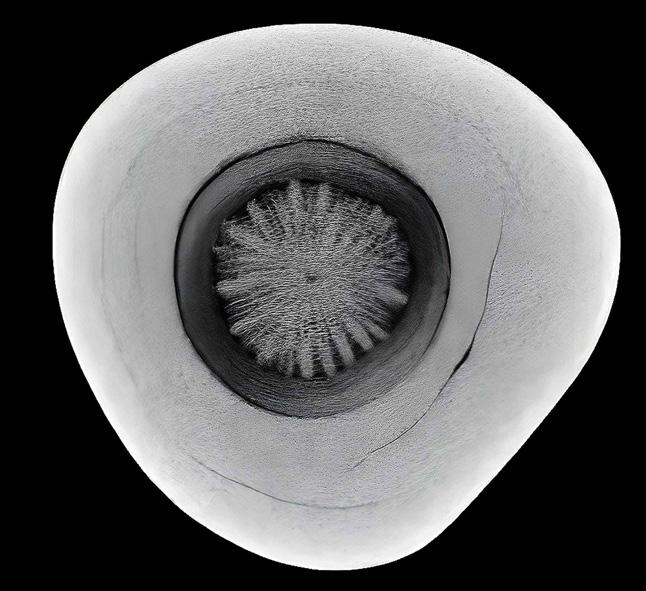
Natural or Cultured?
Natural pearls form when the mantle of a mollusc is irritated by a foreign “intruder”. The mollusc secretes calcium carbonate, often in the form of nacre, to protect itself from the irritant. As the mollusc deposits more and more layers, a pearl forms. Natural pearls are rare. Only roughly one in 10 000 molluscs will produce a pearl, and of those produced, most are small and irregular in shape. Large natural pearls that are round or drop-shaped are
SA JEWELLERY NEWS - SEPTEMBER 2023 ADVERTORIAL 40
(Above): The Baroda pearl necklace features select natural pearls from a necklace once owned by the Indian Maharajas of Baroda.
Photo © Christie's Images
incredibly valuable. In the past, many of these pearls, such as La Peregrina or the Baroda pearls, were owned by royalty and have significant historical value. Natural pearls are so valuable that in 1917, the millionaire Morton Plant traded his Fifth Avenue mansion for a double strand of natural pearls by Cartier.
Cultured pearls form through human intervention when a nucleus is inserted into a mollusc to spur pearl growth. The nucleus is often a round shell bead, which helps determine the size and shape of the pearl that forms.

The most common cultured nacreous pearls are South Sea, Tahitian, akoya and fresh water, each of which forms in a different type of mollusc and has distinct characteristics.
Telling natural and cultured pearls apart often requires testing in a gemmological laboratory with sophisticated instruments.

GIA scientists determine the identity of pearls by using x-ray techniques such as real-time microradiography (RTX) and x-ray computed microtomography (μ-CT) to analyse a pearl's internal structure.

Nacreous pearls are the most popular pearl type on the market, but many natural nonnacreous pearls such as melo pearls and conch pearls are also rare and highly treasured.
GIA PEARL REPORTS
The GIA is an independent non-profit committed to serving the public through the relentless pursuit of research, education and laboratory innovation. We set standards for evaluating gem quality and issue reports that are recognised and respected worldwide. When you have a GIA report, you can rest assured that you know the identity and quality of your gem. We currently offer three different pearl reports:
GIA Pearl Identification Report
This report covers the quantity, weight, shape, colour, overtone, identity (natural or cultured), mollusc origin type (when determinable) and formation environment of your pearl(s), as well as any detectable treatments. It also includes a digital image and is available for any pearls, loose, mounted or strung.
GIA Pearl Identification and Classification Report
This comprehensive report contains all the information of an Identification Report plus quality classification such as lustre, surface
and matching (if applicable). It is available for loose, mounted or strung untreated nacreous pearls.
GIA Cultured Pearl Classification Report
This report for cultured akoya, South Sea or Tahitian pearls includes a detailed classification of your pearls based on the GIA 7 Pearl Value Factors™ (size, shape, colour, lustre, surface, nacre and matching).
https://www.gia.edu/gem-labservice/pearl-analysis-report-service
The queen of gems and the gem of queens, pearls have been beloved throughout history and are at the forefront of many trends in both women’s and men’s jewellery. Whether natural or cultured, their quality can vary widely. Some pearls even undergo treatments such as dyeing that can affect their value dramatically. Your stunning jewels deserve the expertise of the GIA’s scientists. Know you’re getting the best when you purchase pearls that come with a GIA Pearl Report.
CLASSIFYING PEARLS
The GIA classifies pearls using the GIA 7 Pearl Value Factors™, which were created to describe the quality of nacreous pearls in a systematic way that everyone can understand. These factors include size, shape, colour, lustre, surface, nacre and matching.
Pearls’ mysterious beauty can be complex to analyse. Did you know that colour alone includes body colour, overtone and orient? GIA experts compare your pearls with a set of carefully pre-selected pearl masters to determine colour and classify its other value factors. All pearls submitted to our laboratories are independently analysed by two different teams of GIA pearl experts to ensure a precise and objective evaluation.
41 ADVERTORIAL
(Above): This natural pearl has an organic-looking core (thought to be coral) seen here through x-ray computed microtomography.
SA JEWELLERY NEWS - SEPTEMBER 2023
Inspire change in yo
Rochelle Roos, a renowned coach, trainer and co-founder of We Do Change, shares insights on how to effectively create and manage change waves within teams.

CHANGE STRATEGIES ARE CRUCIAL IN various scenarios, including when an organisation suffers from market disruptions, significant growth or restructuring. Other common examples are businesses that want to foster new culture, enhance employee engagement, promote diversity and inclusion, or address performance issues like declining
profitability or decreased customer satisfaction.
However, the reality is that traditional topdown change management approaches which have been around since the 1920s fall short about 80% of the time, according to Roos.
She explains that companies invest a lot of time and money trying to figure out which method or methodology to use for their teams. In her opinion, choosing one over another is not as important as following through with the correct change implementation. In other words, introducing the new methodology correctly is as important, if not more important, than the methodology itself. This is because change in an organisation is often met with resistance from the people within.
“A disruption to the status quo and fear of change causes understandable anxiety, so selecting the right Agile method [a project management approach that involves breaking


42 BUSINESS MANAGEMENT
SA JEWELLERY NEWS - SEPTEMBER 2023
the project into phases] isn’t the gamechanger: doing a method well is. It’s time to shift our focus from debating traditional change management styles that fall short in an era of constant change to ensuring they are executed effectively,” she adds.
As a leading change management professional, Roos understands that the challenge of revolutionising the change management landscape and helping organisations navigate the transition lies in creating just enough waves.

To address this, she advocates Agile
your retail business
methods such as Kanban and Flight Levels, to empower organisations to respond quickly to market shifts. Agile thinking encourages teams to adapt strategies based on realtime feedback, fostering collaboration and innovation. By promoting a culture of responsiveness, organisations can capitalise on emerging opportunities and mitigate potential risks, leading to steady and consistent change.
To effectively create and manage these change waves within teams, Roos recommends the following four steps:
Fostering a culture of change
Leaders must proactively encourage a culture that embraces change and innovation. By creating channels for open communication
and actively seeking input from employees at all levels, organisations can empower their workforce to contribute ideas and suggestions, fostering a sense of ownership, responsibility and engagement.

Provide a clear vision and direction
Change initiatives often encounter resistance due to past experiences. To overcome these challenges, leaders must address concerns openly and transparently. Effective communication is key to building trust and engagement among employees. Leaders should clearly communicate the intentions, goals and expected outcomes of the change strategy, while managing expectations realistically. By nurturing a culture of open dialogue and acknowledging past missteps, organisations can rebuild confidence and commitment among employees, ensuring a more successful change journey.
Recognise that one size does not fit all Organisations should adopt a flexible approach that combines different change management methods
and techniques. By leveraging the strengths of varying methodologies, they can tailor their change strategies to fit their unique context. This hybrid approach allows for the integration of best practices while considering the specific needs and challenges of the organisation. It encourages teams to evolve and continuously improve their processes, promoting long-term change and growth.
Continuous support and training
Managing change is an ongoing process that requires ongoing evaluation, adjustment and communication to ensure lasting and positive outcomes. By investing in employee development and providing the necessary training, guidance and coaching, organisations enable their workforce to acquire the skills and knowledge required to succeed in the evolving business landscape.
Even though the thought of embracing and then maintaining lasting change can be daunting, Roos warns that the consequences of burying your organisational “head” in the sand and neglecting the need for change is even more terrifying.
“An organisation that chooses to ignore the importance of effective lasting change will essentially cling onto outdated processes, systems and practices, which can lead to inefficiencies and a decline in business performance. Organisations that want not only to survive, but to thrive must adapt, innovate and respond swiftly to evolving market dynamics,” says Roos.

BUSINESS MANAGEMENT
SA JEWELLERY NEWS - SEPTEMBER 2023
Leaders must proactively encourage a culture that embraces change and innovation. By creating channels for open communication and actively seeking input from employees at all levels, organisations can empower their workforce to contribute ideas and suggestions, fostering a sense of ownership, responsibility and engagement.
JEWELLERY MANUFACTURERS' ASSOCIATION OF SOUTH AFRICA
E-mail: barend@autraders.co.za; jacqui@autraders.co.za
Website: www.autraders.co.za
AUGENTA JEWELLERS
Tel: 021 883 8288
E-mail: dylan@augenta.com
AURUM DESIGN
Tel no: 021 423 6590
E-mail: aurum@worldonline.co.za; adela@aurumdesign.co.za
ADELE’S MANUFACTURING JEWELLERS
Tel no: 082 595 3868/083 227 6550
E-mail: adele@amj.co.za
ADJANI SCHOEMAN T/A ADJANI DESIGN STUDIO
Tel no: 083 460 7334
E-mail: info@adjani.co.za
Website: www.adjani.co.za
AFRICAN TRADE BEADS JEWELLERY COLLECTION
Tel no: 082 905 1736 / 011 726 7643
E-mail: tamiko@zazenconsulting.com
Website: https://www.atbjc.com/about-us/
AFROGEM
Tel no: 021 424 0848
E-mail: info@afrogem.co.za
AKAPO JEWELS
Tel no: 011 038 3130
E-mail: wumba@akapo.co.za; labi@akapo.co.za
Website: www.akapojewels.co.za
ALBO VAN DYK MANUFACTURING
Tel no: 044 873 0567
E-mail: albo@telkomsa.net
Website: http://www.albovandyk.com/
ALL BLING CREATIONS (PTY) LTD
Tel no: 079 744 0971
E-mail: allblingcreations00@gmail.com; mmeshi.nkadimeng@gmail.com
ALLOY JEWELLERY GALLERY (PTY) LTD
Tel no: 073 92 45254
E-mail: edna@alloygallery.co.za
Website: www.alloygallery.co.za
ALTIN JEWELLERS
Tel no: 012 998 0141
E-mail: info@altin.co.za
Website: www.altin.co.za
AMBER & FORGE (PTY) LTD T/A SCHERMANS
Tel: 072 928 0385
E-mail: info@schermans.co.za
AMBIGO JEWELLERS
Tel: 062 282 6924
E-mail: ntobekobasil@gmail.com
ANACZYNSKI JEWELLERY
Tel no: 082 934 5682
E-mail: anaczynski@gmail.com
Website: www.anaczynski.co.za
ANASTASIA JEWELLERS
Tel no: 031 507 5561
E-mail: bazil.heeralall@gmail.com
Website: www.anastasiajewellers.co.za
ANDREAS SALVER MANUFACTURING JEWELLERS
Tel no: 011 706 6828
E-mail: andreas@andreassalver.com
Website: www.andreassalver.com
ANNA ROSHOLT JEWELLERY DESIGN
Tel: 061 080 6481
Email: anna@annarosholt.com
ANNELLE MURRAY GOUDSMID
Tel no: 082 956 7747
E-mail: annellemurray@exclusivemail.co.za
ANTONICORNELLIS JEWELLERY ENTERPRISE
Tel no: 074 758 1014
E-mail: antonicornellius.nhlapo@gmail.com
ASHOK JEWELLERS DESIGNERS & MANUFACTURERS
Tel: 031 566 5046
E-mail: info@ashokjewellers.co.za; 5665046@gmail.com
ASSIQUE MANUFACTURING JEWELLERS
Tel no: 021 706 3629
E-mail: hashiem@telkomsa.net
AU TRADERS AND REFINERS (PTY) LTD
Tel no: 011 334 7607/8
Website: www.aurumdesign.co.za
AURUM MANUFACTURING (PTY) LTD
Tel: 083 475 7891
E-mail: info@aurummanufacturing.co.za; oliver@aurummanufacturing.co.za; karina@aurummanufacturing.co.za
AUTHOR BY KATHLYN ALLAN
Tel no: 084 247 0358
E-mail: mail@worldofauthor.com
AZTEC MANUFACTURING JEWELLERSRIVERSIDE LIFESTYLE CENTRE
Tel: 013 757 0827
E-mail: ron@aztecjewellers.com; kyle@aztecjewellers.com
Website: www.aztecjewellers.com
AZTEC MANUFACTURING JEWELLERSVALLEY HYPER
Tel: 013 757 0827
E-mail: Ron@aztecjewellers.com
Website: www.aztecjewellers.com
BEADZ BY FLEX
Tel no: 083 967 3264
E-mail: info@beadzbyflex.co.za
Website: www.beadzbyflex.co.za
BEAUDELL DESIGNS (PTY) LTD
Tel no: 082 885 8303
E-mail: esther@beaudell.co.za
Website: www.beaudell.co.za
BEAUTIFUL SELECTION (PTY) LTD
Tel no: 072 658 0166
E-mail: admin@beautifulselection.co.za
BEN & CO DESIGNS (PTY) LTD
Tel no: 072 056 2156
E-mail: bheki@ben-codesigns.com; info@ben-codesigns.com
Website: www.ben-codesigns.com
BERNARD’S JEWELLERY DESIGN & MANUFACTURE
Tel no: 032 586 0889
E-mail: bernard@bernardsjewellery.co.za
Website: https://watchesforsale.co.za/
BIJOU EXQUISITE JEWELLERS
Tel no: 041 450 4320
E-mail: marnic@bijoujewellery.international
Website: https://www.bijoujewellery.international/
BO KOOK HANDMADE JEWELLERY
Tel: 079 560 5064
E-mail: info@bokook.co.za
BRAND ATHENA A
Tel: 072 272 3089
E-mail: info@brandathenaa.co.za
BRETTLAND POULSEN DESIGNER GOLDSMITH
Tel no: 031 562 8009
E-mail: bretland@iafrica.com
Website: www.brettlands.co.za
BRIAN BOSMAN GOLDSMITH STUDIO
Tel no: 011 616 5328
E-mail: divagoldsmith@yahoo.com
BRONSKI JEWELLERS
Tel no: 021 852 7891
E-mail: seanscrase@hotmail.com
BROWNS THE DIAMOND STORE – WORKSHOP
Tel no: 011 438 7920
E-mail: albert@brownsjewellers.com
Website: www.brownsjewellers.com
BULLION STAR (PTY) LTD
Tel: 011 202 5021
E-mail: bullionstr@gmail.com
CADTOCRAFT (PTY) LTD
Tel no: 011 781 0303
E-mail: johanwessels12@gmail.com
CAPE DIAMONDS
Tel no: 021 421 5364
E-mail: joelgraham@capediamonds.co.za
Website: www.capediamonds.co.za
CAPE PENINSULA UNIVERSITY OF TECHNOLOGY
Tel no: 021 460 3632
E-mail: konstandakellisv@cput.ac.za; camerondowl@cput.ac.za
Website: www.cput.ac.za
CAPE PRECIOUS METALS – CAPE TOWN
Tel no: 021 551 2066
E-mail: sharon@cpmct.co.za
Website: www.capepreciousmetals.co.za
CAPE PRECIOUS METALS – DURBAN
Tel no: 031 303 5402
E-mail: malcolm@cpmdbn.co.za
Website: www.capepreciousmetals.co.za
CAPE PRECIOUS METALS – GERMISTON
Tel no: 011 334 6263
E-mail: shannon@cpmjhb.co.za
Website: www.capepreciousmetals.co.za
CAPE PRECIOUS METALS PE/GQEBERHA
Tel no: 041 365 1890
E-mail: renee@capepreciousmetals.co.za
Website: www.capepreciousmetals.co.za
CARESS JEWELLERS UITENHAGE CC
Tel no: 041 992 4421
E-mail: eben-caress@mweb.co.za
CENTRAL UNIVERSITY OF TECHNOLOGY FREE STATE – WELKOM
Tel no: 051 507 4044
E-mail: eholmes@cut.ac.za; nmphore@cut.ac.za
Website: www.cut.ac.za
CHARL DE BEER
Tel no: 012 440 7693
E-mail: leatherw@mweb.co.za; charldebeer@hotmail.com
CHARLES NORMAN DIAMONDS (PTY) LTD
Tel: 083 557 3252
E-mail: rishan@charlesnormandiamonds.com
CHARLENE NEL T/A BELLA COSA
Tel no: 021 975 5097
E-mail: charlene@bellacosa.co.za
CHATEAU D’OR CC
Tel no: 011 728 3741/3723
E-mail: denlincoln@mweb.co.za
Website: www.chateaudorjewellers.com
CORNERSTONE MANUFACTURING (PTY) LTD
Tel no: 082 599 5919
E-mail: cornerstonelof@gmail.com
CREATIVE DESIGN MANUFACTURERS (PTY) LTD
Tel no: 031 563 3987
E-mail: goldlink@iafrica.com
D FABRIK (PTY) LTD
Tel: 011 327 7926
E-mail: deon.denysschen@gmail.com
DABERON MANUFACTURING (PTY) LTD
Tel no: 011 334 8841
E-mail: daberon1@gmail.com
DALEEN BRUWER JEWELLERY DESIGN & GOLDSMITH
Tel no: 023 342 7808
E-mail: db@xsinet.co.za
DANIEL JACOBS JEWELLERY DESIGN CC
Tel no: 021 880 1026
E-mail: djjd@mweb.co.za
DAVID BOLDING GOLDSMITH
Tel no: 021 418 1049/1612
E-mail: david@dbgold.co.za; marele@dbgold.co.za
DC JEWELLERS
Tel no: 044 691 3692
E-mail: dcjewel@mweb.co.za
DEGLON JEWELLERY STUDIO
Tel no: 021 851 3182
E-mail: waynedeglon@telkomsa.net
Website: www.waynedeglondesign.withtank.com
DEON SMITH JEWELLERY
Tel: 083 454 2161
E-mail: deonsmithjewellery@gmail.com; drdwsmith63@gmail.com; deon@deonsmithjewellery.com
DESIGNER GOLD BUSINESS TRUST
Tel no: 043 726 2291
E-mail: info@designergold.co.za
Website: www.designergold-el.co.za
DIA-KIM DIAMONDS
T/A CHRISTOPHER REID
Tel no: 021 418 4484
E-mail: nick@christopherreid.co.za
Website: www.christopherreid.co.za
DIAMANTE ANTWERP
Tel: 072 830 5656
E-mail: info@diamanteantwerp.com
DIAMONDS4EVER
Tel no: 082 786 7677
E-mail: info@diamonds4ever.co.za
Website: www.diamonds4ever.co.za
DIDIDESIGN
Tel no: 011 784 0369
E-mail: didi@dididesign.co.za
Website: www.dididesign.co.za
DLR JEWELLERS
Tel: 057 101 0359
E-mail: carol@dlracc.co.za
DR ESME SPICER
Tel no: 073 239 9983
E-mail: esme.spicer@gmail.com
DURBAN UNIVERSITY OF TECHNOLOGY
Tel no: 031 373 6673/6
E-mail: chrisdb@dut.ac.za; samanthav@dut.ac.za
Website: www.dut.ac.za
ECO CHIC JEWELLERY
Tel no: 021 553 0332
E-mail: e.m.duplooy@gmail.com
EDEL DESIGNER JEWELLERY
Tel no: 072 636 0213
E-mail: edeldesignerjewellery@gmail.com
EKURHULENI JEWELLERY PROJECT
Tel no: 011 825 5822
E-mail: colin@ejewellery.org.za
Website: www.ejewellery.org.za
ELEMENTAL STUDIO
Tel no: 084 507 7777
E-mail: lezamcleod@icloud.com
Website: www.elementalstudio.co.za
EMBER MANUFACTURING & DESIGN (PTY) LTD
Tel no: 083 557 5190
E-mail: info@ember.co.za
Website: www.ember.co.za
ENZA MANAGEMENT SERVICES
Tel no: 031 824 9427
E-mail: khulile@imarajewellery.com
EON HOON JEWELLERY DESIGN
Tel no: 083 578 7447
E-mail: eon@eonhoon.com
Website: www.eonhoon.com
ERICA STRAUSS DESIGNER JEWELLERY STUDIO
Tel no: 021 851 8120
E-mail: artwear@telkomsa.net
ETERNITY ENTERPRISE (PTY) LTD
Tel no: 018 290 5722/3
E-mail: info@eternityenterprise.com; daleen@eternityenterprise.com
Website: www.eternityenterprise.com
EVERTRADE 142 (PTY) LTD T/A D’OURO JEWELLERS
Tel no: 011 615 3402
E-mail: dourojhb@vodamail.co.za; a.veloso@dourojewellers.co.za
Website: www.dourojewellers.co.za
FACET JEWELLERY
Tel no: 073 397 8820
E-mail: catherine@facetjewellery.co.za
FARIED JEWELLERY DESIGN
Tel: 021 671 5529
E-mail: insaaf.achmat@gmail.com; fachmat@gmail.com
FEMKE KLEISEN DESIGNS (PTY) LTD
Tel no: 083 787 6120
E-mail: femkekleisen@webafrica.org.za
Website: www.femkekleisen.co.za
FERROS JEWELLERS
Tel no: 041 363 1881
E-mail: alex@ferrosjewellers.com
Website: www.ferrosjewellers.com
FINEGOLD LABORATORY SERVICES
Tel no: 021 511 6237
E-mail: admin@finegold.co.za
Website: www.finegold.co.za
FOREVER JEWELLERY MANUFACTURERS
Tel no: 031 564 9006
E-mail: fj@3i.co.za
FRANKLI WILD

Tel no: 011 483 2620
E-mail: kgf@frankliwild.com
Website: www.frankliwild.com
G HARRIS DESIGN STUDIOS CC
Tel no: 021 555 1437
E-mail: harrisjewellers@telkomsa.net; gharris@telkomsa.net
Website: www.harrisjewellers.net
GATTOO JEWELLERY DESIGN STUDIO
Tel no: 011 852 2046
E-mail: gattoosdesign@gmail.com
GAUTA REFINERIES (PTY) LTD
Tel no: 012 753 3304
E-mail: rudi@gautarefinery.com
Website: https://www.gautarefinery.com/
GEM AFRIQUE
Tel no: 062 050 6479
E-mail: soni2.goldsmith@gmail.com
GERHARD MOOLMAN FINE JEWELLERY
Tel: 021 914 0838
E-mail: gerhard@gmfinejewellery.co.za
GLOBAL JEWELLERY ACADEMY
Tel no: 082 337 6428
E-mail: robertb@globaljewelleryacademy.co.za
Website: www.globaljewelleryacademy.co.za
GOLD AND I (PTY) LTD
Tel no: 084 360 6762
E-mail: info@goldandi.co.za
Website: www.goldandi.co.za
GOLDFASHION JEWELLERS CC
Tel no: 021 931 1319
E-mail: mhendricks@wsnet.co.za; goldfashion@telkomsa.net
GOUDSMID TEHILA VAN ENGELENHOVEN
Tel no: 082 674 4410
E-mail: tehila@absamail.co.za
GRYPHON MOSS
Tel: 082 049 2488
E-mail: kate@gryphonmoss.co.za
HAUPT JUWELEN (PTY) LTD
Tel: 072 587 0055
E-mail: info@hauptjuwelen.co.za
HAVILAH GOLD CREATIONS
Tel no: 041 581 1942
E-mail: design@havilah.co.za; carol@havilah.co.za
Website: www.havilah.co.za
HEATHER JANE SMITH CERAMICS & PORCELAIN
Tel no: 064 915 4282
E-mail: ladyheatherette@gmail.com
HELEN MICHALETOS
Tel: 082 342 1577
E-mail: helen.michaletos@gmail.com
HESTI PRINSLOO T/A FETTER-AND-THREE
Tel: 082 855 9088
E-mail: hesti@fetter-and-three.co.za
HOLLY CROSS JEWELLERY
Tel: 079 477 2729
E-mail: vhaswayouth@gmail.com
ICKINGER JEWELLERS
Tel no: 015 307 4448
E-mail: jacques@ickinger.co.za
Website: www.ickinger.co.za
iKE YKE
Tel: 083 225 0425
E-mail: michael@eqimpact.co.za
IMFUNDISO SKILLS DEVELOPMENT
Tel no: 012 734 0245
E-mail: imfundiso@mweb.co.za
Website: www.imfundiso.com
IMPILO COLLECTION
Tel no: 010 0210441
E-mail: ayeung@impilocollection.co.za
Website: www.facebook.com/impilocollection
INGE SCHOLTZ JEWELLERYDESIGNER & MANUFACTURER
Tel no: 073 271 3789
E-mail: admin@csvaluers.co.za
ISA B JEWELLERY DESIGNS
E-mail: bothmaisabel09@gmail.com
ISABELLA JEWELLERS & REFINERS CC
Tel no: 011 334 5919
E-mail: isabella@isabella-refiners.co.za
Website: www.isabella-refiners.co.za
J HIND JEWELLERS
Tel no: 031 306 1330
E-mail: jhindrajesh@gmail.com
Website: https://www.jhindjewellers.co.za/
JAGGATH JEWELLERS
Tel no: 031 307 7790
E-mail: navinjagath372@gmail.com
JANINE BINNEMAN JEWELLERY DESIGNS
Tel no: 021 715 6178
E-mail: info@janinebinneman.com
Website: https://janinebinneman.com/
JEWEL CRAFT – BRANDHOF
Tel no: 051 444 3449
E-mail: rean.p@mweb.co.za
Website: www.jewelcraft.co.za
JEWELLERY CONNECTION
Tel no: 011 728 6800
E-mail: vmagnes@netactive.co.za
JEWELLERY CONSULTANCY
Tel no: 083 581 1513
E-mail: md.jewelleryconsultancy@gmail.com
Website: www.jewelleryconsultancy.co.za
JOHANNA VAN ZYL
Tel no: 082 778 5846
E-mail: jo@johannavanzyl.co.za
Website: www.johannavanzyl.co.za
JOHN 3 JEWELLERY
Tel no: 076 822 8783
E-mail: john3jewellery@gmail.com
JOHN STEDMAN
T/A ELEMENTAL DESIGN
Tel no: 031 572 2902
E-mail: john@elementaldesign.co.za
Website: www.elementaldesign.co.za
JOHREN MANUFACTURING CC
T/A THE JEWELLERY SHOP
Tel no: 046 624 3748
E-mail: johren@telkomsa.net
JOY MASSYN JEWELLERY (PTY) LTD
Tel no: 012 662 2861
E-mail: joy@joymassyn.co.za
Website: http://www.joymassyn.com/
JUPITER'S JUNGLE (PTY) LTD
Tel no: 061 503 6561
E-mail: admin@jupitersjungle.com
Website: www.jupitersjungle.com/www.ginawhite.com
JYARAS JEWELLERS (PTY) LTD
Tel no: 067 397 6373
E-mail: admin@jyarasjewellers.co.za
Website: https://jyarasjewellers.co.za/contact/
K2 DESIGN STUDIO
Tel no: 031 940 1274
E-mail: khanyisile@k2designstudio.co.za
Website: www.k2designstudio.co.za
KARLIEN DESIGNS CC
Tel no: 083 659 2607
E-mail: karlien@karliendesigns.co.za
Website: www.karliendesigns.co.za
KARLSEN JEWELLERY CO
Tel no: 033 386 7872
E-mail: karlsen@jewelleryco.co.za
JEWELLERY MANUFACTURERS' ASSOCIATION OF SOUTH AFRICA
KATANNUTA DIAMONDS CC
Tel: 082 451 9429
E-mail: clare@katannutadiamonds.co.za; info@katannutadiamonds.co.za
KAYRO JEWELLERS
Tel no: 041 585 4842
E-mail: slaide.kayro@mweb.co.za
KEA-NTHABI’S AFRICAN DESIGN
Tel: 083 350 2737
E-mail: keanthabi1@gmail.com
KHONJE DESIGNS
Tel: 012 460 1569
E-mail: info@khonjedesigns.com
KIM CLOETE JEWELLERY DESIGN
Tel no: 021 531 9082
E-mail: kim@kimcloetedesign.co.za
Website: http://www.kimcloetedesign.co.za/
KINKEL JEWELLERY
Tel no: 021 786 1549
E-mail: info@kinkeljewellery.co.za
Website: www.kinkeljewellery.co.za
KNIGHT OF GREY T/A ELEGANTE
Tel: 011 825 5822
E-mail: elegantemagnificent@gmail.com
KRISTEN MALAN CC
Tel no: 011 880 1866
E-mail: kristen@merindol.com; john@merindol.com
KUSASA REFINING (PTY) LTD
Tel: 010 001 6284
E-mail: greg.magid@kusasarefining.co.za; info@kusasarefining.co.za
LADY PECULIAR
Tel no: 021 886 8868
E-mail: info@ladypeculiar.co.za
Website: www.ladypeculiar.co.za
L’AUTRICHE FINE JEWELLERY
Tel no: 011 883 4021
E-mail: ernst@lebijoux.co.za
Website: www.lautrichefj.co.za
LEOPOLDINE DESIGNS
Tel no: 076 586 3820
E-mail: info@leopoldinedesigns.co.za
LILLY FRIEDLAENDER CC
Tel no: 021 887 1655
E-mail: lilly.f@wol.co.za
LIMPOPO JEWELLERY BUSINESS INCUBATOR
Tel no: 015 293 0214
E-mail: tessa@ljbi.org.za; mabatho@ljbi.org.za; siphelele@ljbi.org.za; admin@ljbi.org.za; shokky@ljbi.org.za
LORIEN MANUFACTURING JEWELLERS
Tel no: 011 967 1700
E-mail: heather@allanybrink.co.za
LOTTI JEWELLERY
Tel no: 079 386 1079
E-mail: info@lottijewellery.co.za
LOVI JEWELLERY DESIGN
Tel no: 011 882 3272
E-mail: lovijewellery@gmail.com
LYNDA MARION JEWELLERY
Tel no: 082 651 8145
E-mail: silver@lyndamarion.com
M2 JEWELLERS CC
Tel no: 012 460 6793
E-mail: maryna@m2jewellery.com
Website: www.m2jewellery.com
MADELIEF DESIGNER JEWELLERY
Tel no: 083 453 7018
E-mail: madeliefjewellery@gmail.com
MADELINE’S TEMPTATIONS
Tel no: 083 305 2798
E-mail: info@madelinestemptations.co.za
Website: www.madelinestemptations.co.za
MAGGIE AFRICA
Tel no: 072 882 2586
E-mail: maggieroodt@telkomsa.net
MAGMA METAL RECOVERIES
Tel no: 031 702 4422
E-mail: edwards@astronet.co.za
MAPULA DESIGNER JEWELLER (PTY) LTD
Tel no: 083 641 2724
E-mail: mapuladesigner@gmail.com
Website: www.mapuladesignerjeweller.com
MARINE GOLD CC
Tel no: 021 424 0077
E-mail: stephen@marinegold.co.za
MARION’S JEWELLERY STUDIO
Tel no: 041 368 4582/3
E-mail: marionsstudio@mweb.co.za
MARK WHITEHORN GOLDSMITH
Tel no: 083 271 6065
E-mail: info@markwhitehorn.co.za
Website: https://markwhitehorn.co.za/
MARTIN MILLS GOLDFIELDS
Tel: 0727167632
E-mail: mmillsgoldfields@gmail.com
MASELESELE JEWELLERS
Tel no: 012 734 0245
E-mail: imfundiso@mweb.co.za; imfundisojewellers@mweb.co.za
Website: www.imfundiso.com
MEDITERRANEAN JEWELLERS
Tel no: 082 689 0630
E-mail: panayiotis@mmjewellers.co.za
Website: http://www.mmjewellers.co.za/
METAL CONCENTRATORS SA (PTY) LTD – CAPE TOWN
Tel no: 021 510 0770
E-mail: cpt@metcon.co.za
Website: www.metcon.co.za
METAL CONCENTRATORS SA (PTY) LTD – CENTURION
Tel no: 012 000 4440
E-mail: info@metcon.co.za
Website: www.metcon.co.za
METAL CONCENTRATORS SA (PTY) LTD – DURBAN
E-mail: info@metcon.co.za
Website: www.metcon.co.za
METAL IMAGE
Tel no: 021 447 6600
E-mail: mi_greg@iafrica.com; mi_accounts@iafrica.com
Website: www.metalimage.co.za
MG IVORY
Tel no: 011 788 1018
E-mail: mgivory@netactive.co.za
MICHAEL J SOLOMON
MANUFACTURING JEWELLERS (MJS)
Tel no: 011 792 5292
E-mail: ms@absamail.co.za
MICHL CONTEMPORARY FINE JEWELLERY
Tel no: 021 913 3944
E-mail: michelleliaosa@gmail.com
Website: www.michljewellery.com
MINITZA
Tel: 082 77 29812
E-mail: info@minitza.co.za
MIRKO JEWELLERY
Tel no: 021 886 8296
E-mail: mirinda@mirkojewels.co.za
Website: http://mirkojewels.co.za/
MOON INVESTMENTS
Tel: 021 551 2066
E-mail: invest@mooninvest.co.za
MUGA MUGA HANDMADES
Tel no: 072 299 7148
E-mail: info@mugamuga.co.za
Website: www.mugamuga.co.za
MZANTSI DIAMOND MERCHANTS (PTY) LTD
Tel: 041 379 1162
E-mail: mzantsidiamonds@gmail.com
N.N JEWELLERS
Tel: 082 081 8179
E-mail: nico.nieuwoudt.nn@gmail.com
NEWMAN JEWELLERY DESIGN
Tel no: 012 329 9600
E-mail: nina@newmandesign.co.za; dave@newmandesign.co.za
NILU ENGRAVING & JEWELLERY (PTY) LTD
Tel no: 083 384 7792
E-mail: laser@nilu.co.za
Website: www.nilu.co.za/
NINA BOSCH PORCELAIN
Tel: 079 891 7240
E-mail: info@ninabosch.co.za
NOVUS DESIGN STUDIO
Tel no: 012 332 5850
E-mail: info@novusdesign.co.za
Website: http://www.novusdesign.co.za/
NQ JEWELLERY DESIGN SERVICES
Tel no: 073 700 6225
E-mail: nq2jewel@gmail.com
Website: www.nqjewellery.co.za
NV DESIGN COMPANY
T/A BY NANETTE
Tel no: 021 883 3856
E-mail: nanette@bynanette.com
Website: www.bynanette.com
ORO AFRICA (PTY) LTD – CAPE TOWN
Tel no: 021 480 9860
E-mail: sharin@oroafrica.com
Website: www.oroafrica.com
OSMOND’S

Tel no: 021 559 8277
E-mail: osmond@telkomsa.net
PAUL GALLIAS
Tel no: 073 194 2415
E-mail: pgallias@hotmail.com
PEARL AND DIAMOND STUDIO
Tel no: 011 678 0595/6
E-mail: pearldiamond@mweb.co.za
Website: https://www.pearlanddiamond.co.za/
PETRA JEWELLERY DESIGN
Tel: 021 789 0312
E-mail: info@petrajewellery.co.za
PHATSIMA JEWELLERY DESIGNS
Tel no: 072 739 6800
E-mail: phatsimantando@gmail.com; orders@phatsimajd.com
Website: www.phatsimajd.com
PHILIP ZETLER JEWELLERS
Tel no: 021 423 2771
E-mail: pzetler@mweb.co.za
Website: www.philipzetlerjewellers.co.za
PHOENIX MANUFACTURING JEWELLERS
Tel no: 012 549 4966
E-mail: jack@phoenixjewellers.co.za
Website: www.phoenixjewellers.co.za
PICCOLO FINE DESIGNER JEWELLERY
Tel no: 083 396 6178
E-mail: suvette@piccolo-jewellery.co.za
Website: http://piccolo-jewellery.co.za/
PIYUVE JEWELLERS CC
Tel no: 031 301 3963
E-mail: aroon@piyuvejewelers.co.za; shashi@piyuvejewelers.co.za
Website: www.piyuvejewelers.co.za
PNEUMA JEWELLERS CC
Tel no: 011 702 1462
E-mail: admin@pneumajewellers.com
Website: www.pneumajewellers.co.za
POPULAR DIAMOND
JEWELLERY MANUFACTURING CC
Tel no: 011 484 7044
E-mail: pop@tiscali.co.za
PRECIOUS ONE JEWELLERY
Tel no: 056 212 1229
E-mail: antonjewels@yahoo.com
PRECISION SETTERS
Tel no: 011 484 7803/4
E-mail: julian@precisionsetters.co.za
PRETTY FOUND THINGS
Tel no: 083 651 9042
E-mail: prettyfoundthings@gmail.com
Website: www.prettyfoundthings.co.za
JEWELLERY MANUFACTURERS' ASSOCIATION OF SOUTH AFRICA
PREVIDA & CO
Tel no: 011 701 5074
E-mail: previda@previdaandco.com
PRINS & PRINS DIAMONDS
Tel no: 021 422 1090
E-mail: petre@prinsandprins.com; riana@prinsandprins.com
Website: www.prinsandprins.com
QUICKSET JEWELLERS
Tel no: 031 468 9236
E-mail: qsjewel@telkomsa.net; osjewel@telkomsa.net
Website: www.quicksetjewellers.co.za
RAMSDEN DIAMONDS
T/A OLYMPIA AVENUE MANUFACTURING JEWELLERS
Tel: 011 404 5010
E-mail: info@olympia-avenue.co.za
RAND REFINERY LIMITED
Tel no: 011 418 9000
E-mail: nicolab@gold.co.za
Website: www.randrefinery.com
RARE EARTH CREATIONS
Tel no: 011 326 1727 E-mail: noloyiso@rarearth.co.za
Website: https://www.rareearth.co.za/
REC SET & ENGRAVE (PTY) LTD
Tel no: 011 326 1727
E-mail: neil@rarearth.co.za; noloyiso@rarearth.co.za
RICHLINE SA (PTY) LTD
Tel no: 011 418 1600
E-mail: johan@richlinesa.co.za; marco@richlinesa.co.za
Website: www.richlinegroup.co.za
RITCO MANUFACTURING JEWELLERS
Tel no: 041 374 2101
E-mail: sales@ritco.co.za
Website: www.ritco.co.za
RODNEY CHANDLER JEWELLERS (PTY) LTD
Tel no: 082 606 0493
E-mail: mcjewel@netactive.co.za
ROHAN CHERRY DESIGNS
Tel no: 082 974 4566
E-mail: info@rcdesigns.co.za
Website: www.rcdesign.co.za
ROK ORIGINALS
Tel no: 072 203 3288
E-mail: info@rokoriginals.com
Website: https://www.rokoriginals.com/
ROMANELLI DESIGNS (PTY) LTD
Tel no: 011 794 1666
E-mail: bling@romanellidesigns.co.za
Website: https://romanellidesigns.co.za/
RUTH PROWSE SCHOOL OF ART
Tel no: 021 447 2492
E-mail: admin@ruthprowse.co.za
Website: www.ruthprowse.co.za
SATHKAAR JEWELLERS C.C
Tel no: 031 306 4921
E-mail: sathkaar@gmail.com
SANDHAVON DIAMOND CUTTING WORKS
Tel no: 083 233 0910
E-mail: kevin@lutrin.co.za
SAVAGE JEWELLERY
Tel no: 082 902 2302
E-mail: nicola@savagejewellery.com
SCANT DESIGN

Tel: 072 339 1885
E-mail: as@scant.co.za
SCARAB JEWELLERY STUDIO CC
Tel no: 021 683 4646
E-mail: janine@scarabjewellery.co.za; tanya@scarabjewellery.co.za
Website: www.scarabjewellery.co.za
SEA & SHORE
Tel: 082 742 5343
E-mail: seashore.resin@gmail.com
SERAGLIO JEWELLERS
Tel no: 011 783 8301
E-mail: rolling.albert@yahoo.com
Website: www.seragliojewellers.com
SHADOW JEWELLERS
Tel no: 082 689 8297
E-mail: shadrackmogoane@yahoo.com
SHANI D JEWELLERY DESIGN (PTY) LTD
Tel no: 082 308 2111
E-mail: diamondshani@gmail.com
Website: http://www.shanidjewellery.co.za/
SIBAHLE JEWELLERY (PTY) LTD
Tel no: 011 049 3933
E-mail: nthabiseng@sibahlejewellery.co.za
Website: www.sibahlejewellery.co.za
SILK ROUTE GOLD (PTY) LTD
Tel no: 011 450 3192
E-mail: info@silkroutegold.com
Website: www.silkroutegold.com
SIMON EFUNE MANUFACTURING JEWELLERS
Tel no: 011 334 4529
E-mail: simon.efune@mweb.co.za
SIRKEL JEWELLERY
Tel no: 011 726 2365
E-mail: sirkeldesign@gmail.com
Website: www.sirkeljewellery.co.za
SL HERMAN MANUFACTURING JEWELLERS
Tel no: 012 460 6771
E-mail: slhj@telkomsa.net
Website: www.hermanmanufacturingjewellers.co.za
SMITH JEWELLERY
Tel no: 071 313 8649
E-mail: info@smith-jewellery.com
Website: www.smith-jewellery.com
STARBRIGHT JEWELLERY
Tel no: 083 775 9995
E-mail: megan@starbrightgirl.com
Website: https://www.starbrightgirl.com/
STUDIO 1980 (PTY) LTD
Tel no: 083 379 0171
E-mail: info@studio1980za.com
Website: https://studio1980za.com/
STUDIO 39 JEWELLERY DESIGN
Tel no: 031 764 3000
E-mail: studio39@telkomsa.net
Website: www.studio39.co.za
STUDIO C MANUFACTURING JEWELLERS
Tel no: 011 642 7826
E-mail: chris@studioc.co.za; peggy@studioc.co.za
Website: www.studioc.co.za
STUDIO LOUBSER
Tel no: 011 782 4051
E-mail: liz@lizloubser.com; info@studioloubser.com
Website: www.studioloubser.com
SUGARBUSH CREATIONS
Tel no: 015 293 2358
E-mail: sugarbushcreations@gmail.com
SURITA DU TOIT FINE JEWELLERY (PTY) LTD
Tel: 082 779 7084
E-mail: info@suritadutoit.com
TASHA SWART CREATIONS
Tel: 082 523 9982
E-mail: tashaswart.creations@gmail.com
THATO RADEBE JEWELLERY
E-mail: thato@thatoradebejewellery.co.za
Website: https://thatoradebejewellery.co.za/
THE BERA DIAMOND ACADEMY
Tel no: 011 854 4556
E-mail: mmbera@gmail.com; muhammad.bera@absa.co.za
Website: http://www.benefittohumanity.com/
THE JABULANI CHARITABLE TRUST
Tel: 031 303 2396
E-mail: paula@jabulanijewellery.co.za; colleen@jabulanijewellery.co.za
THE JEWELLERY HUB
Tel no: 083 326 5746
E-mail: ian@worldofdiamonds.co.za; yolandi@worldofdiamonds.co.za
Website: www.worldofdiamonds.co.za
THE MAKERY
Tel no: 082 600 7142
E-mail: info@themakerycollection.com
Website: www.themakerycollection.com
THE PLATINUM INCUBATOR
Tel no: 014 597 0736
E-mail: sibongile@tpi.org.za
Website: www.tpi.org.za
TINSEL GALLERY
Tel no: 011 782 4051
E-mail: geraldine@tinsel.co.za
Website: https://tinselgallery.com/
TIP TOP JEWELLERS
Tel no: 044 873 3048
E-mail: tiptop@lantic.net
TRIMALCHIO
Tel no: 012 346 6874
E-mail: casanra@mweb.co.za
TRISLO (PTY) LTD
Tel no: 012 259 0100
E-mail: info@trislo.co.za
Website: www.trislo.co.za
TSHWANE UNIVERSITY OF TECHNOLOGY
Tel no: 012 382 6007
E-mail: newmand@tut.ac.za
Website: www.tut.ac.za
UNCUT JEWELLERS
Tel no: 083 225 8221
E-mail: mark@uncutjewellers.co.za
Website: www.uncutjewellers.co.za
UNIVERSITY OF JOHANNESBURG
Tel no: 011 559 1129/1125
E-mail: fnazier@uj.ac.za
Website: www.uj.ac.za
UNIVERSITY OF STELLENBOSCH
Tel no: 021 808 3047
E-mail: ct@sun.ac.za; Joani@sun.ac.za
Website: www.sun.ac.za/english/faculty/arts/visual-arts/
VAN DEIJL MANUFACTURING JEWELLERS
Tel no: 021 914 2192
E-mail: info@vdmj.co.za
VAWDA GOLD GEM JEWELLERS
Tel no: 031 208 9142/3
E-mail: info@vawdagoldgem.co.za
Website: www.vawdagoldgem.co.za
VICTORIA ORPEN JEWELLERS
Tel no: 011 615 4758
E-mail: victoriaorpensa@gmail.com; roxanne.campbell07@gmail.com
VIJAY SHAH CONCEPTS
Tel no: 031 564 2948
E-mail: vijayshah@telkomsa.net; nihalshah23@gmail.com
Website: www.vijayshahjewellers.co.za
VK JEWELLERY
Tel no: 082 789 4498
E-mail: vivek@vkjewellery.co.za
Website: www.vkjewellery.co.za
WAINWRIGHT JEWELLERS
Tel no: 021 554 1169
E-mail: info@wainwrightjewel.co.za
Website: www.wainwrightjewel.co.za
WOOSH DESIGNS JEWELLERY STUDIO
Tel no: 011 318 1340
E-mail: wooshen@wooshjewellery.co.za
Website: www.wooshjewellery.co.za
YOL NOMADIC JEWELLERY
Tel no: 074 136 3633
E-mail: yol_lu@yahoo.fr
ZION PRECIOUS METALS (PTY) LTD
Tel: 010 109 2057
E-mail: compliance@zionpreciousmetals.com; depot@zionpreciousmetals.com
ZULU MIEN
Tel: 0823344426
E-mail: zulumien@gmail.com
ZUREL BROTHERS SA (PTY) LTD
Tel no: 015 293 2306/58
E-mail: zurelpolokwane@telkomsa.net; zurelqms@gmail.com
Website: www.zurel.co.za
JEWELLERY MANUFACTURERS' ASSOCIATION OF SOUTH AFRICA
Brand supporters
AFRASIAN DIAMONDS
www.afrasiandiamonds.com
info@afrasiandiamonds.com
(011) 268-6980
BEZALEL ATELIER
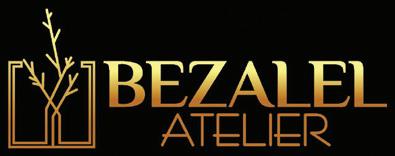
www.bezalelatelier.com

awie@bezalelatelier.com
martie@bezalelatelier.com
071-899-0205 / 082-923-6546
BYL DIAMONDS
www.byldiamonds.com


orders@byldiamonds.com
(021) 419-2000
DIAMOND DEALERS CLUB SOUTH AFRICA

www.diamonds.org.za
joyceb@ diamonds.org.za
(011) 334-1930
EGL SOUTH AFRICA www.egl.co.za admin@egl.co.za

(011) 334-4527
GIA is the globally recognized source of knowledge, standards, education and analysis for diamonds, colored stones and pearls. Contact us today.
GEMFIELDS www.gemfields.com
+44 (0) 20 7518 3400
GIA.edu
GEMOLOGICAL INSTITUTE OF AMERICA (GIA)
www.gia.edu
gia ed/contact us
+1-760-603-4000 – global hq
JZA – YOUR JEWELLERY MAGAZINE
jza@isikhova.co.za
(011) 883-4627
METAL CONCENTRATORS
www.metcon.co.za

info@metcon.co.za
(012) 000-4440
ISIKHOVA MARKETING www.isikhova.co.za
jenny@isikhova.co.za
(011) 883-4627
J.P.P.E MANUFACTURING JEWELLERS www.jppe.co.za

info@jppe.co.za
(021) 424-7764
JEWELLERY COUNCIL OF SOUTH AFRICA (JCSA)
Jewellex365
www.jewellery.org.za
lornal@jewelleyr.org.za
(011) 484-5528
NAMAQUA MOISSANITE
www.namaquamoissanite.com
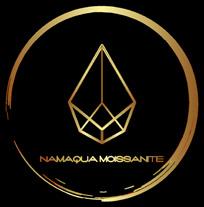
sales@nammoissanite.com
081-873-6456
SIYENZA EVENTS
www.siyenza.za.com
info@siyenza.za.com
011 463 9184
SM WATCH
www.smwatch.co.za

smwatch@iafrica.com
(012) 326-5996
SA JEWELLERY NEWS - SEPTEMBER 2023 48 JEWELLEX ISSUE 2023
CARLSBAD NEW YORK ANTWERP BANGKOK DUBAI GABORONE HONG KONG JOHANNESBURG LONDON MUMBAI RAMAT GAN SEOUL TAIPEI TOKYO
From The World’s Foremost
ADT170027_SAJN_Ad_Foremost_v1.indd 1 3/3/17 11:39 AM
Authority in Gemology™




Contact | jenny@isikhova.co.za Mobile 083 450 6052 | Landline 011 883 4627 | www.isikhova.co.za Corporate and personalised gifting that’s worth it AS GOOD AS GOLD


























































































































































































































































































































































































































